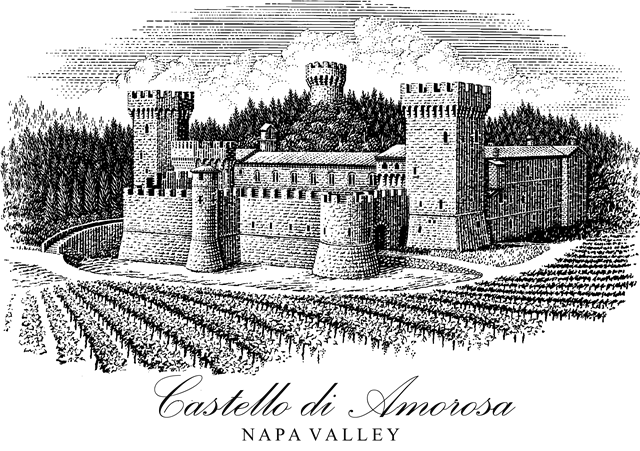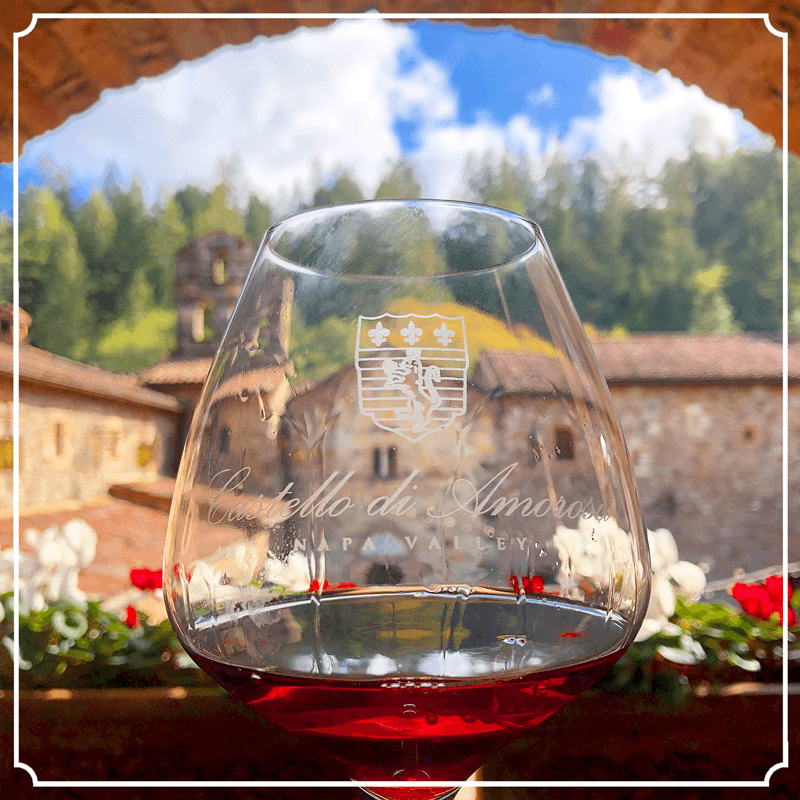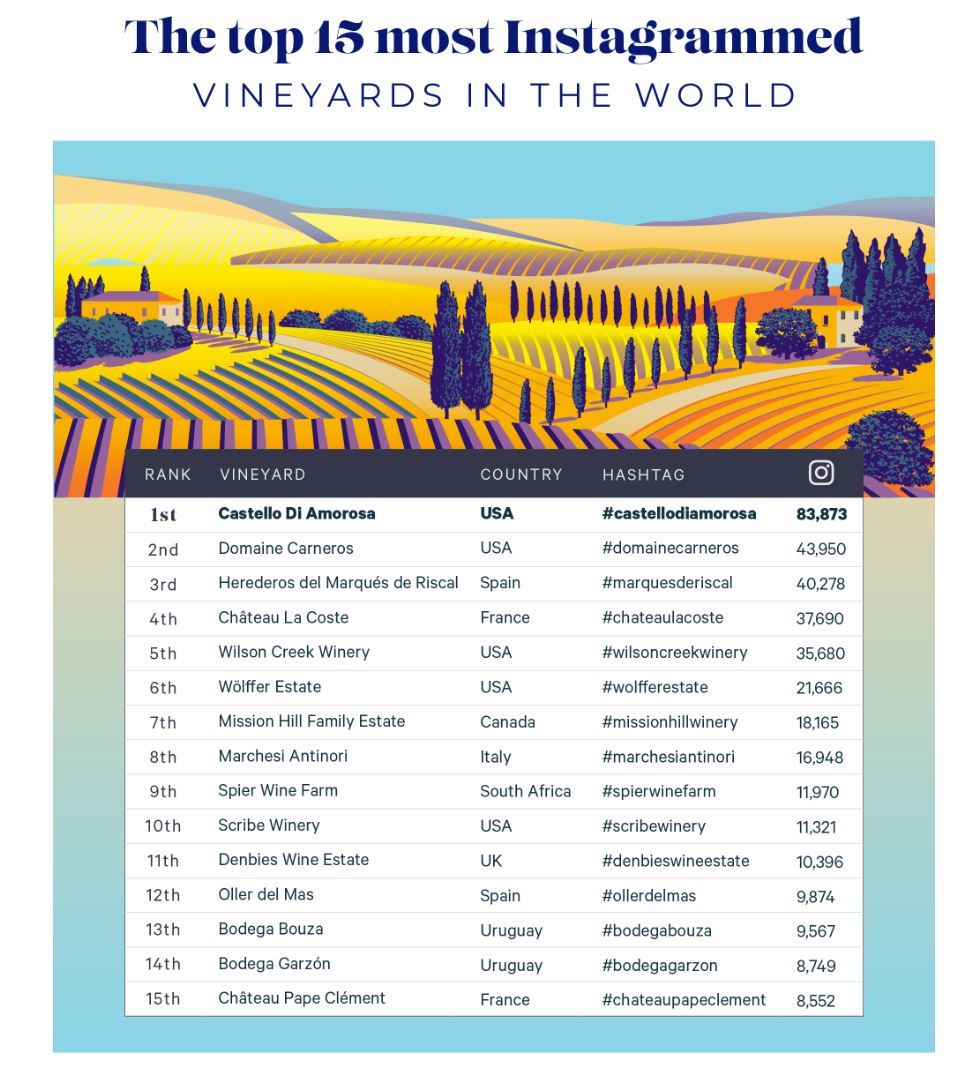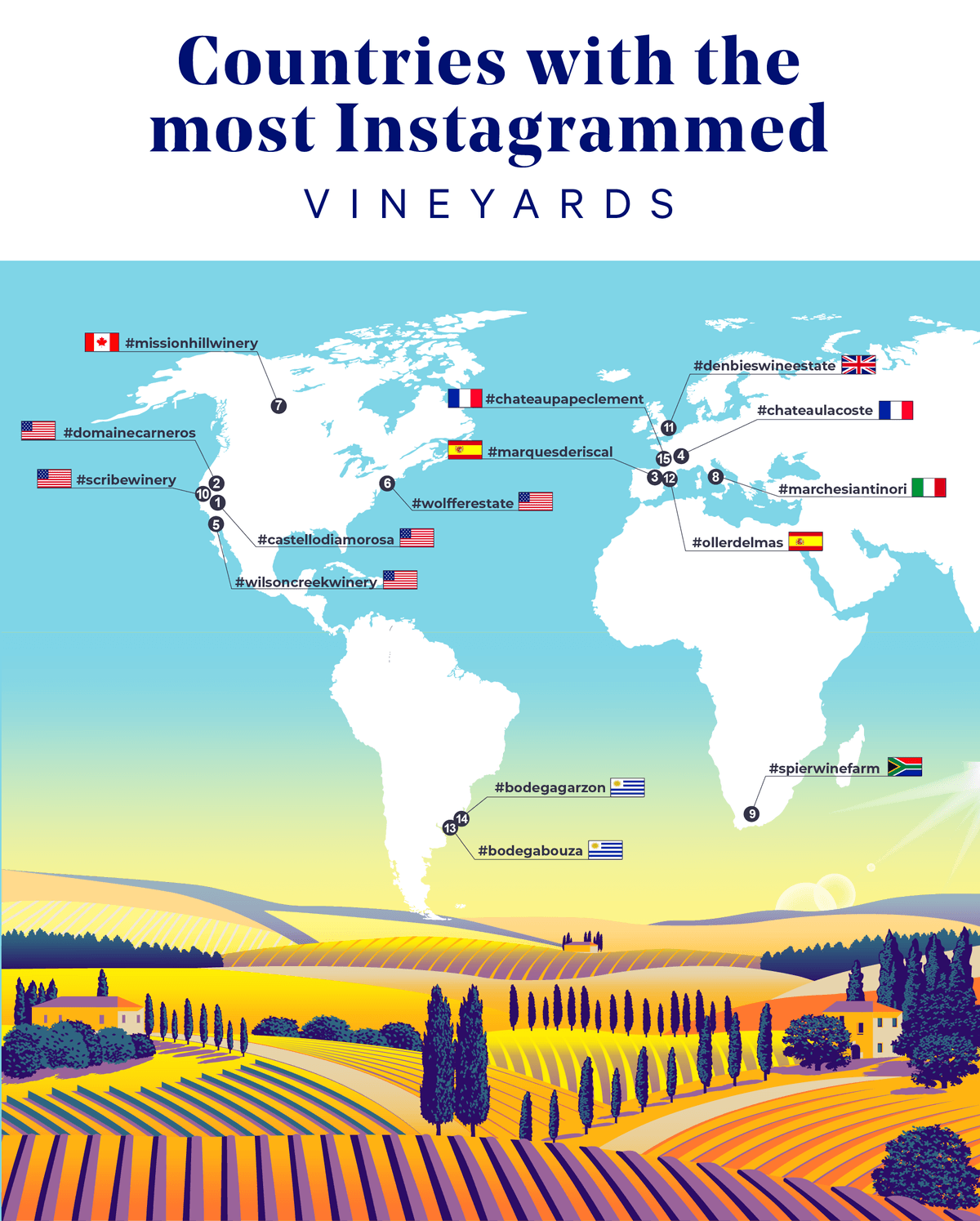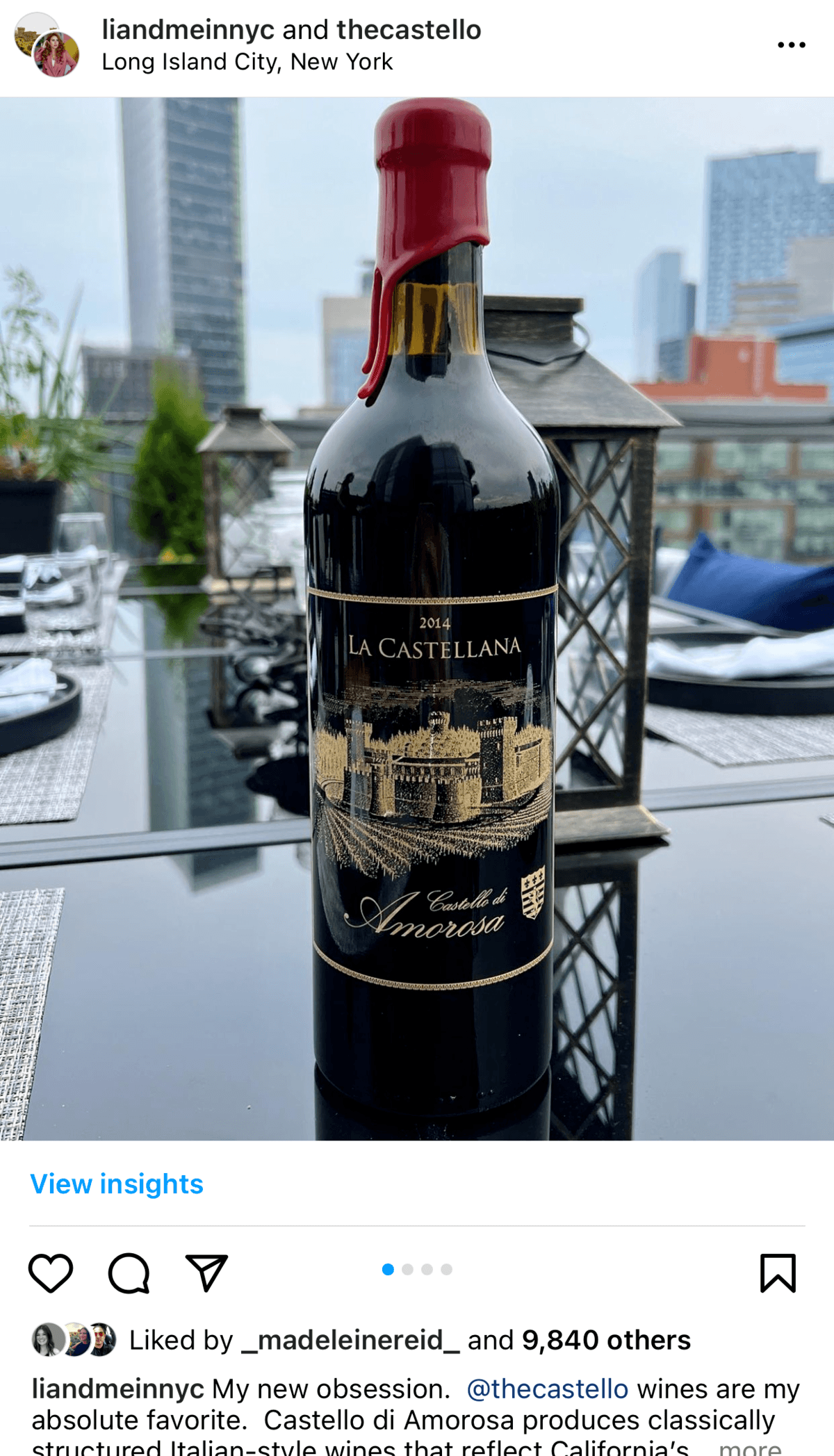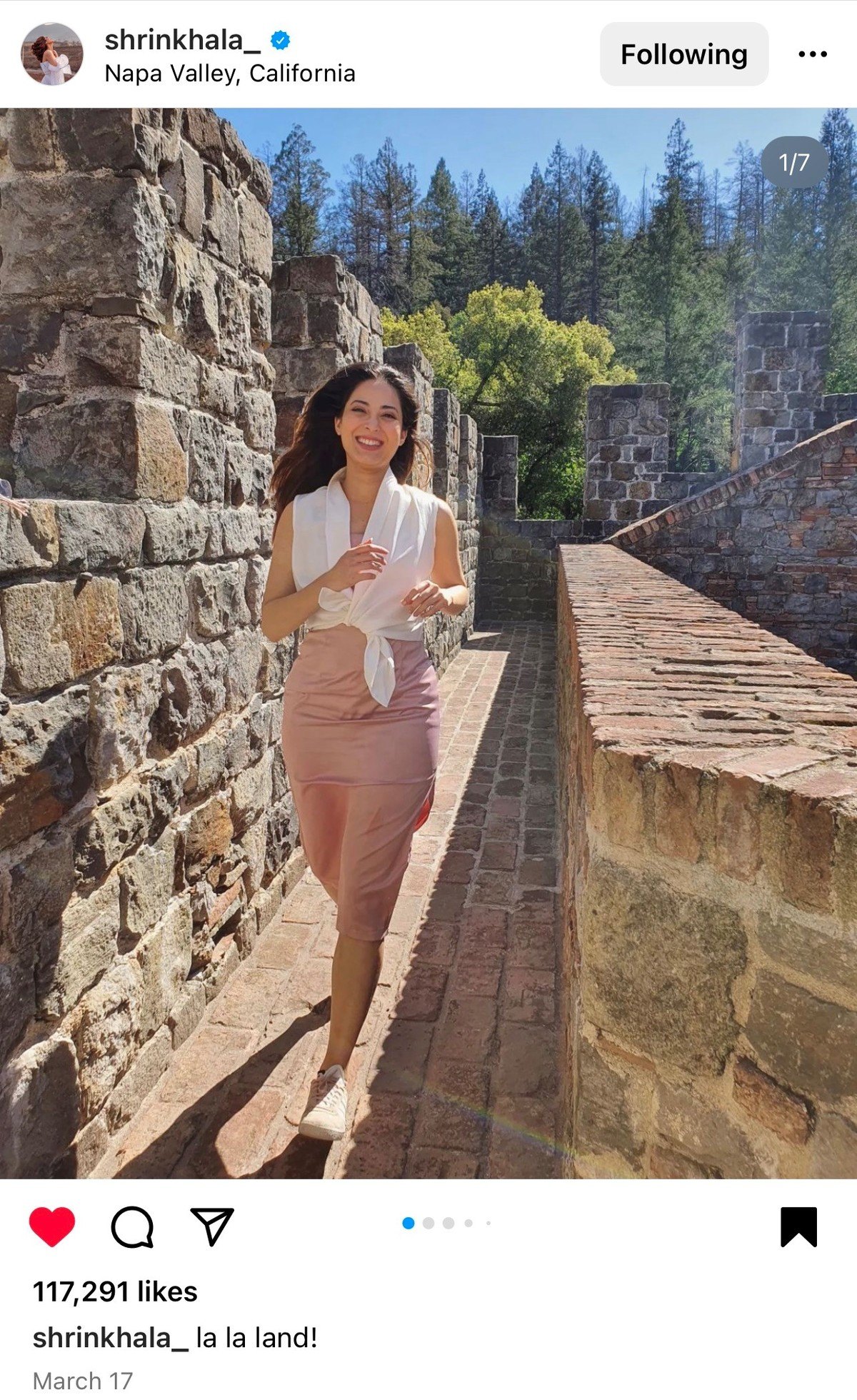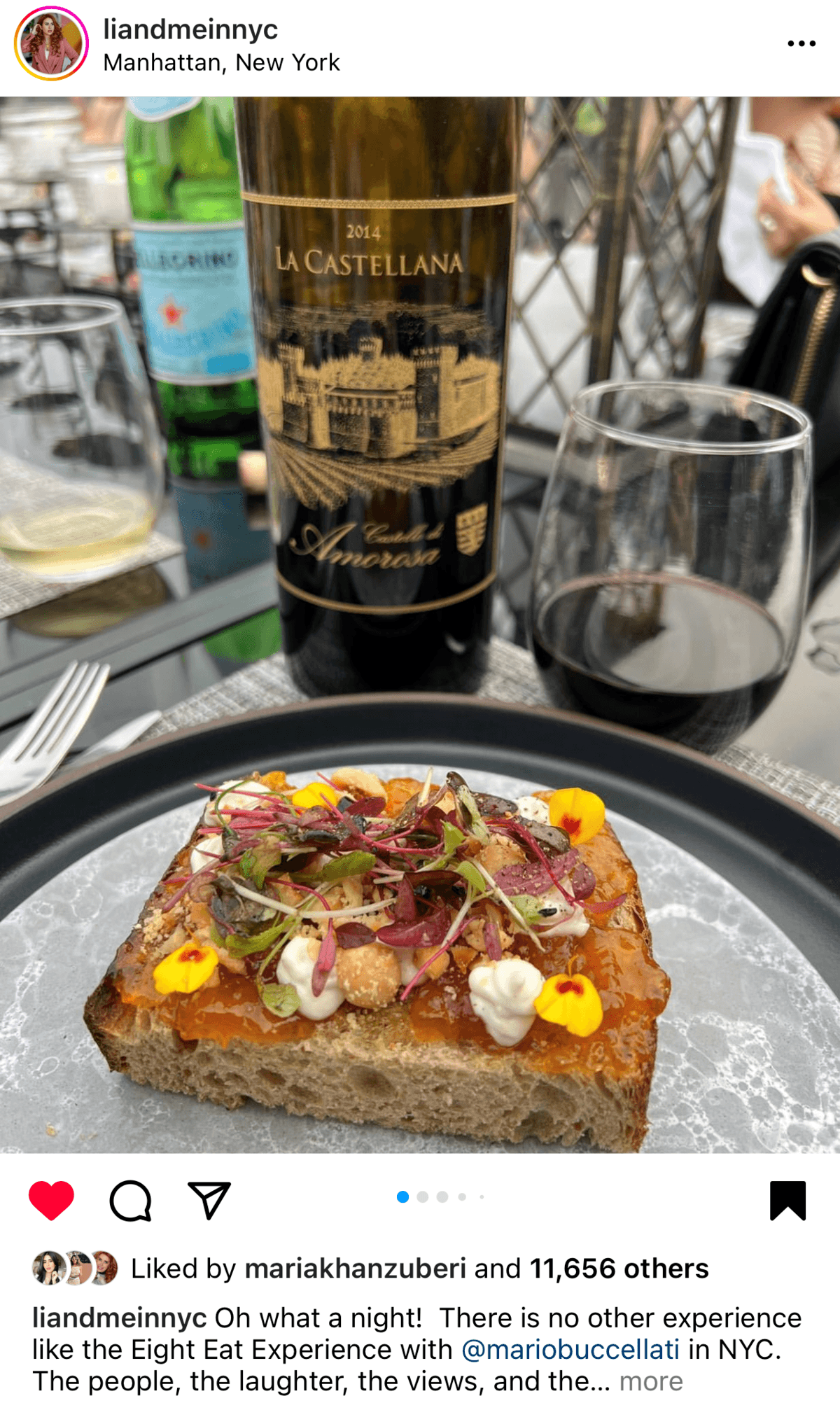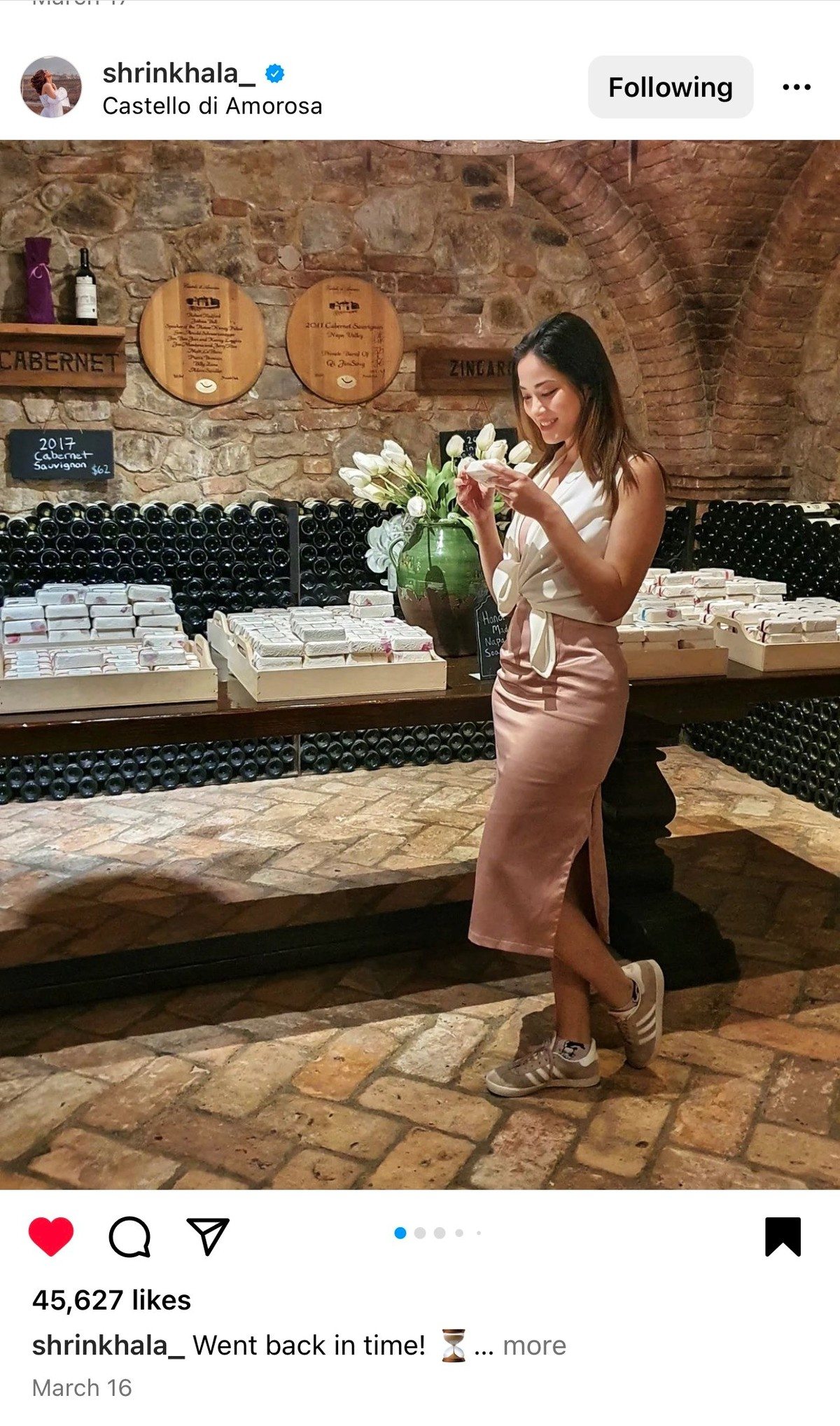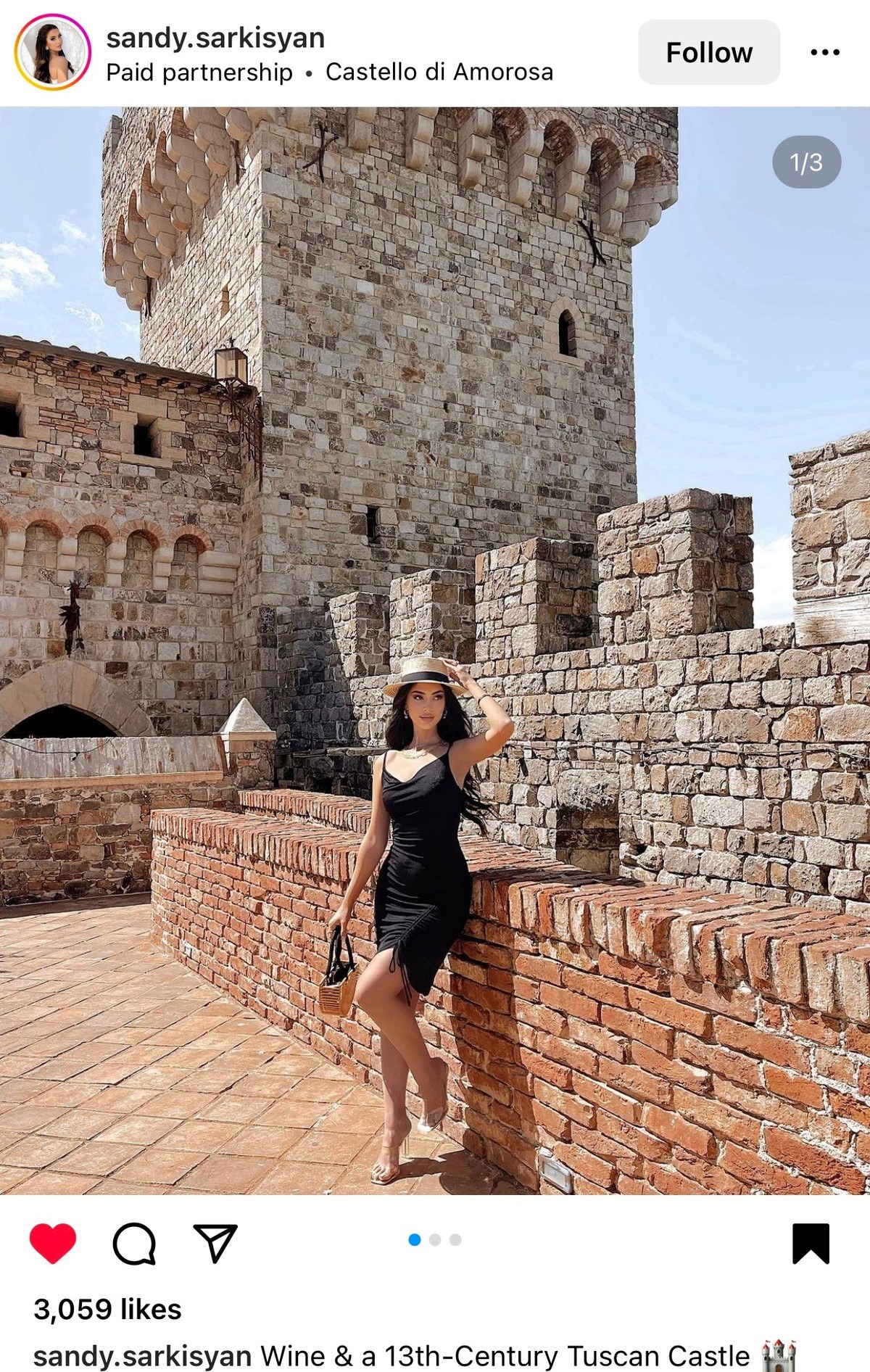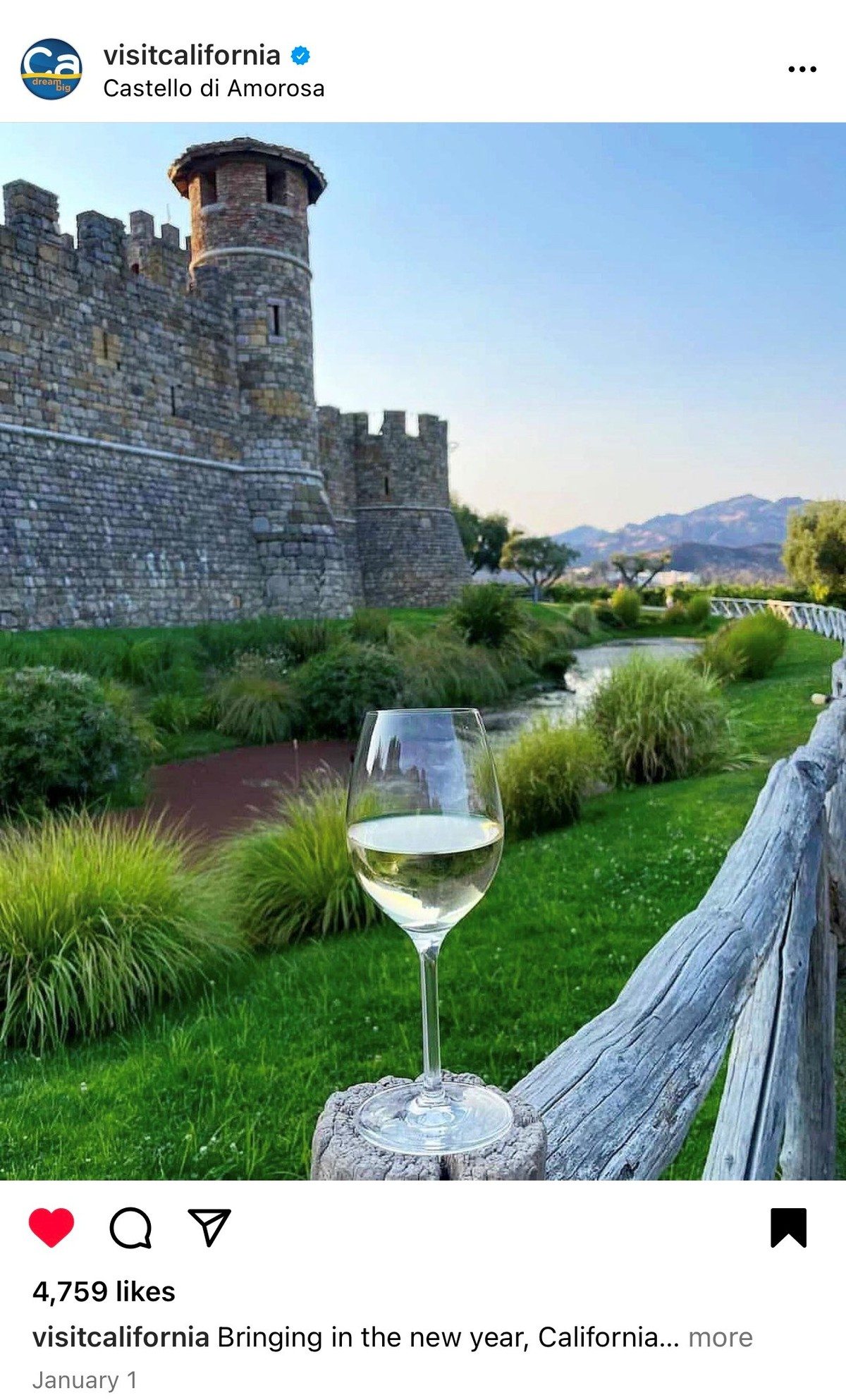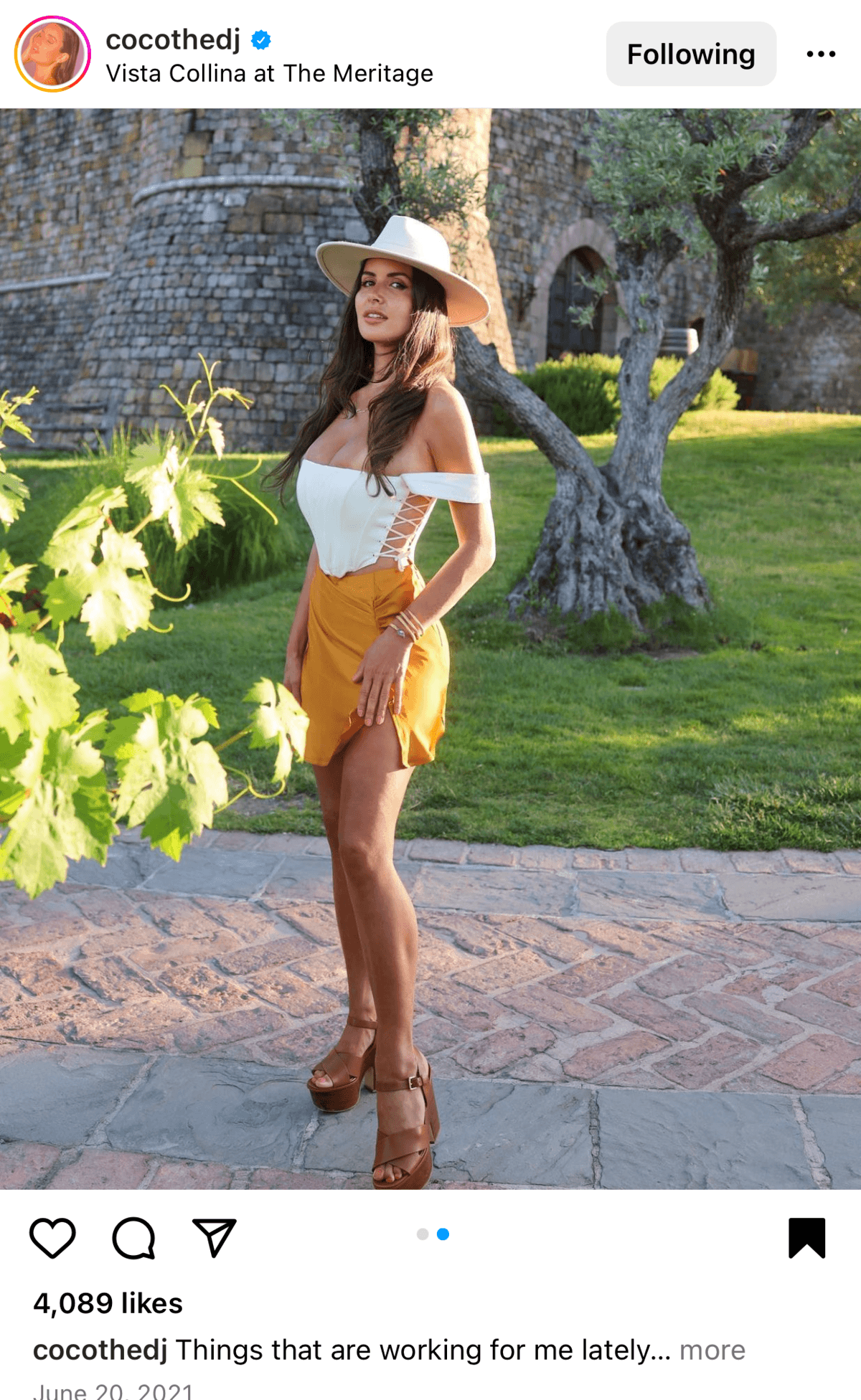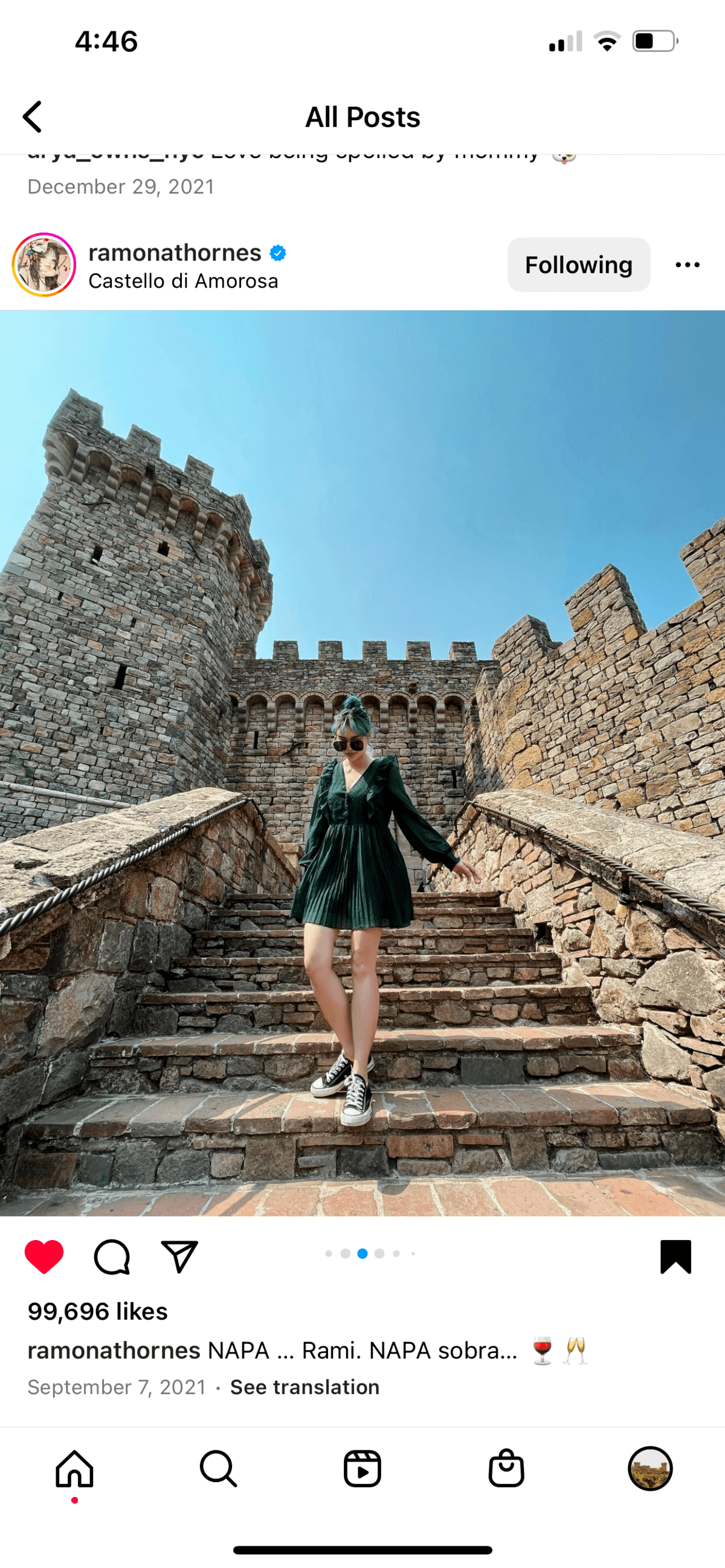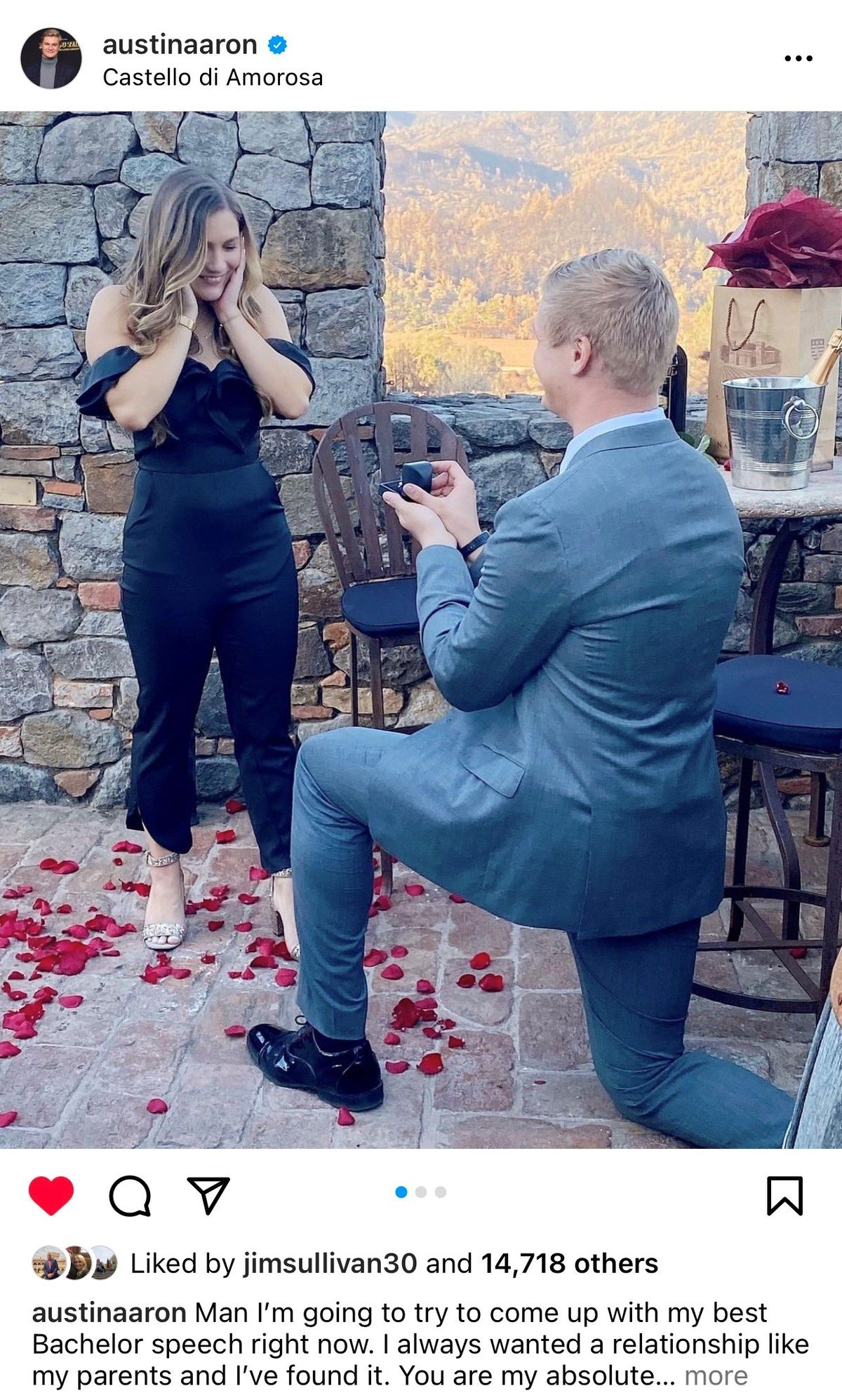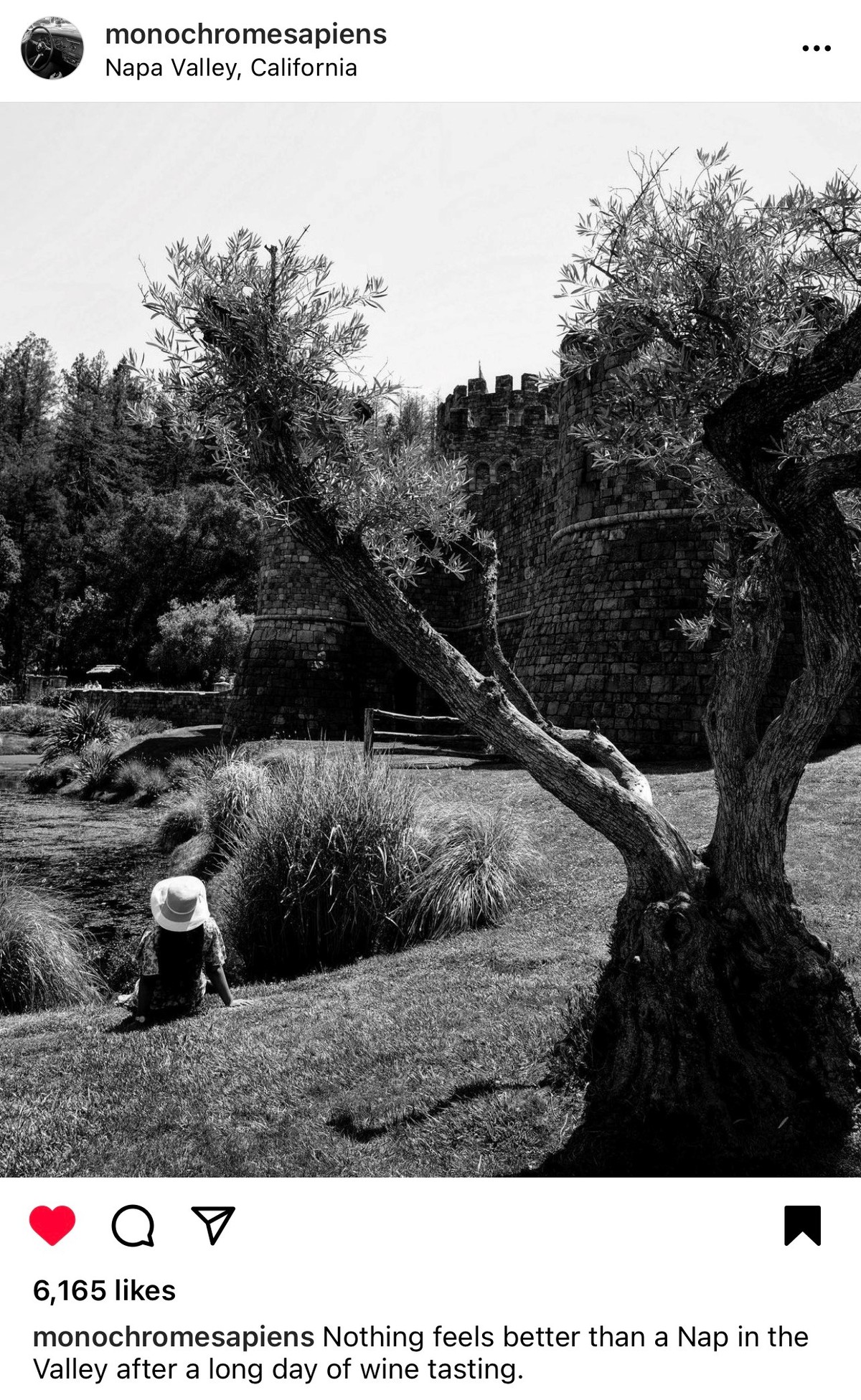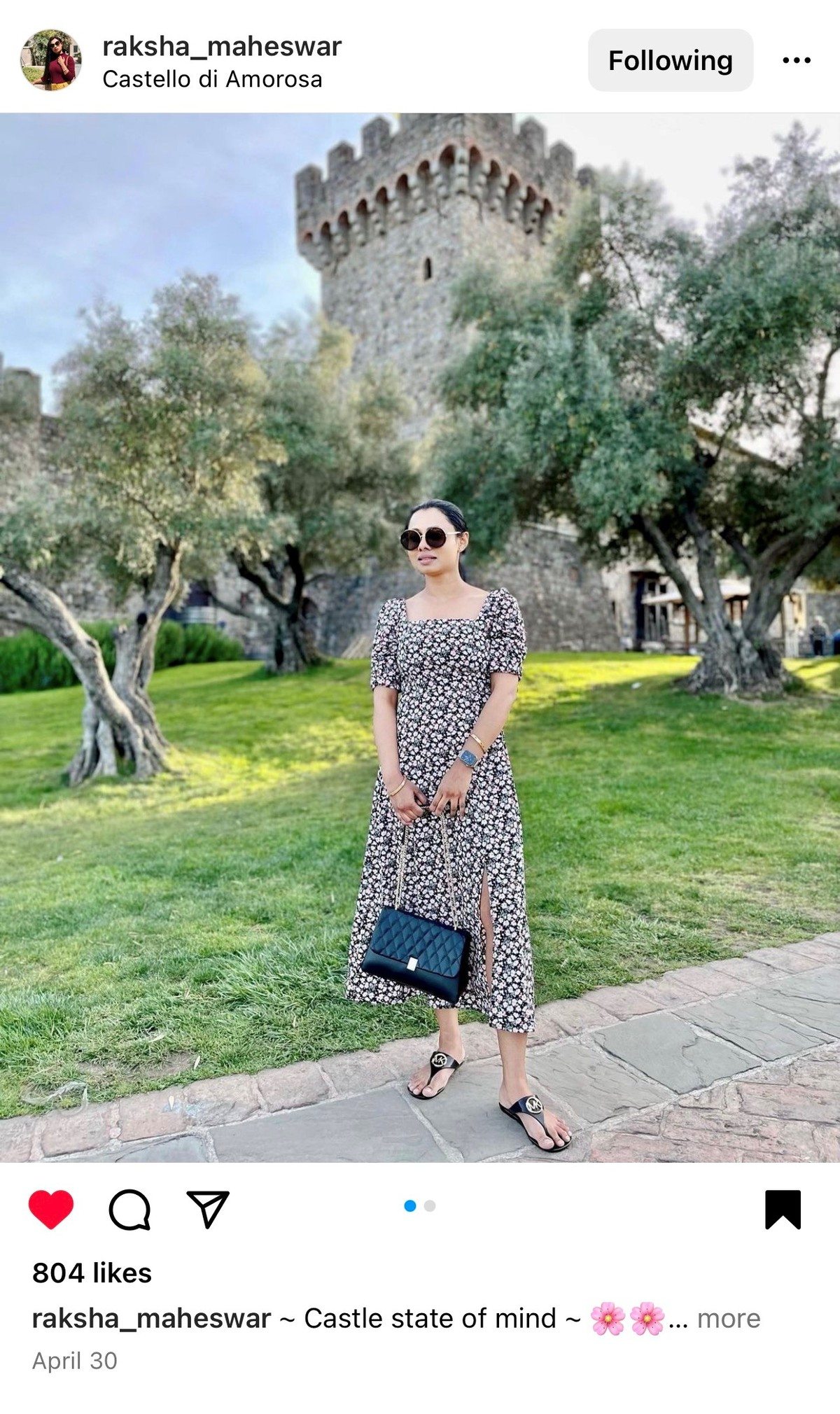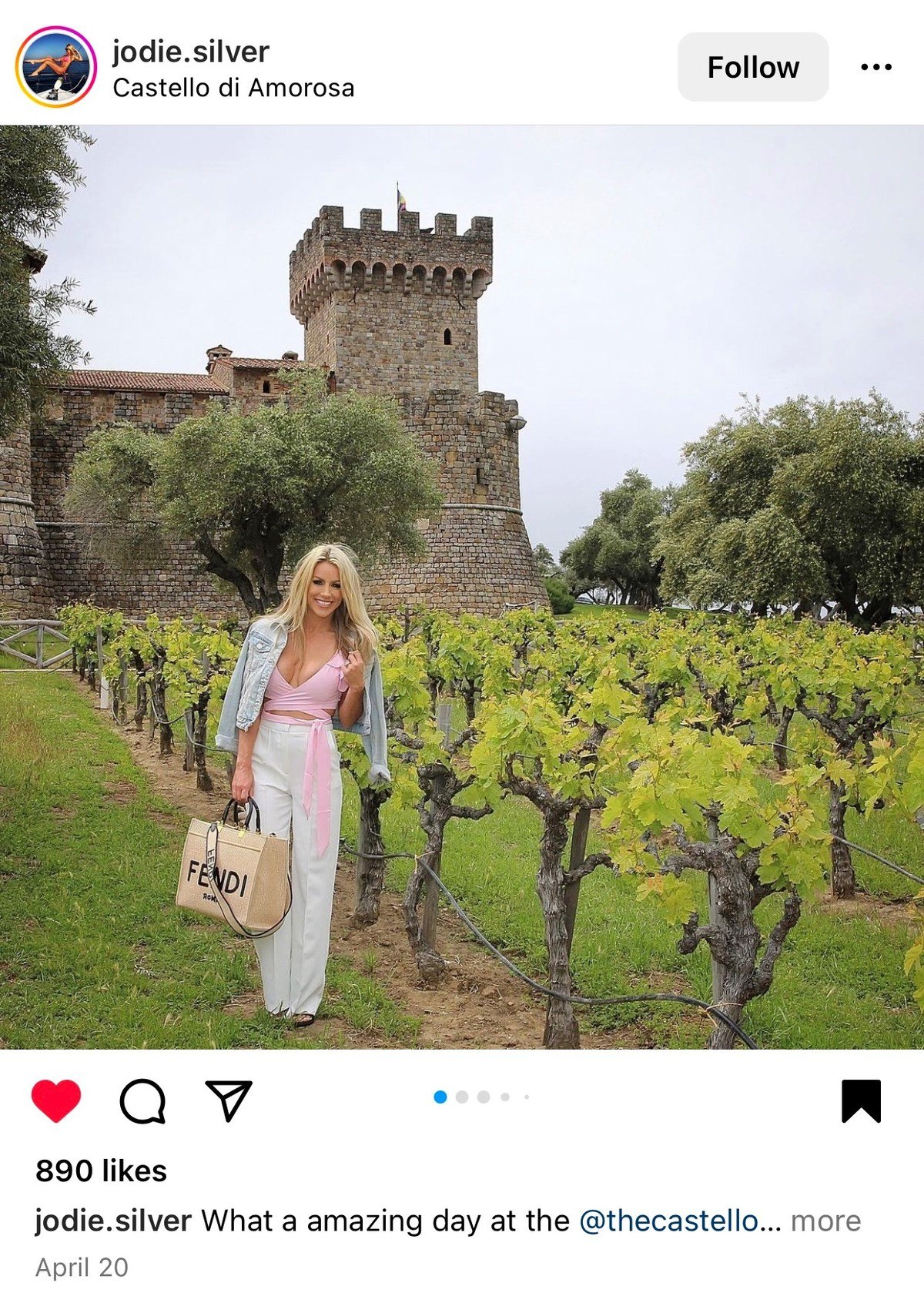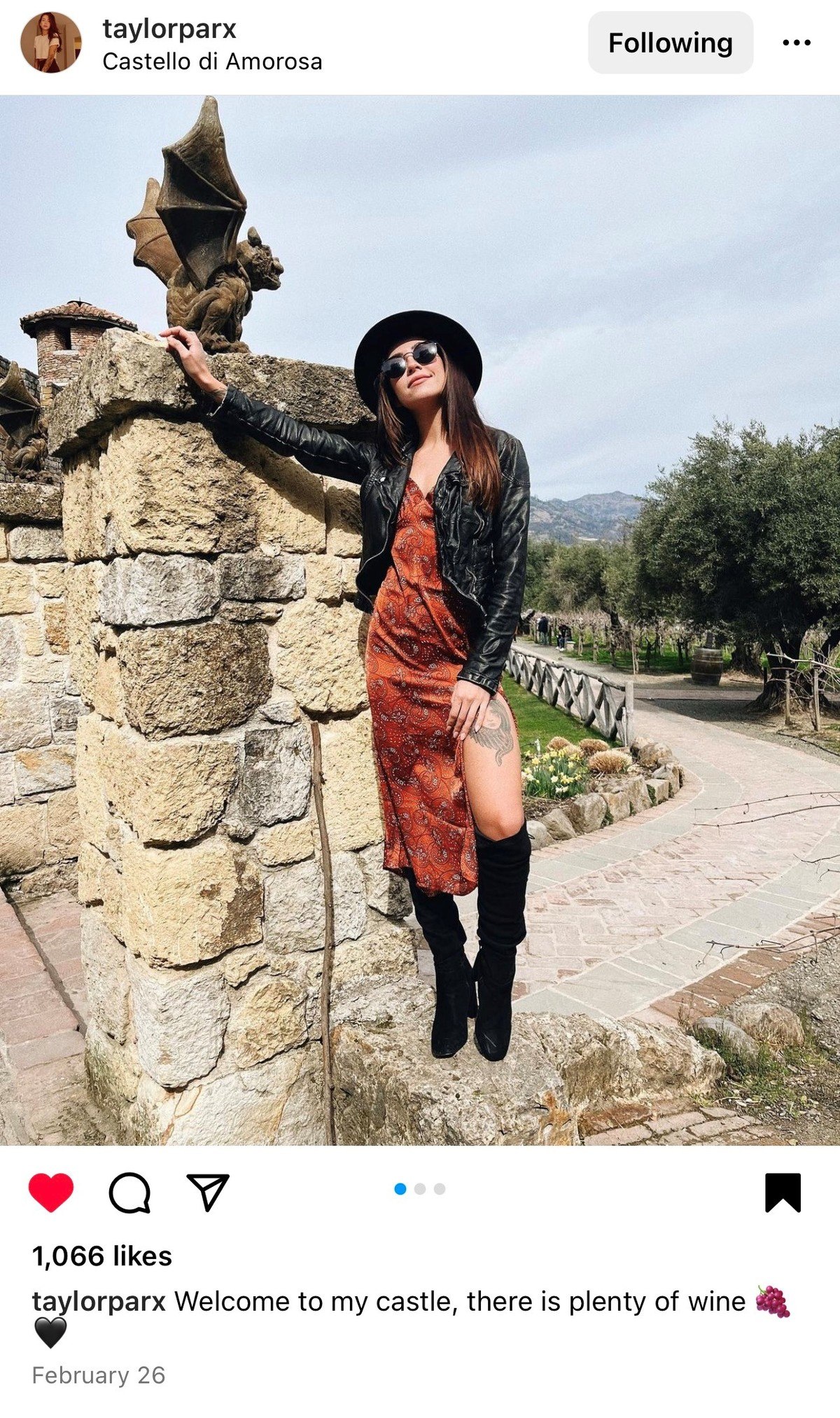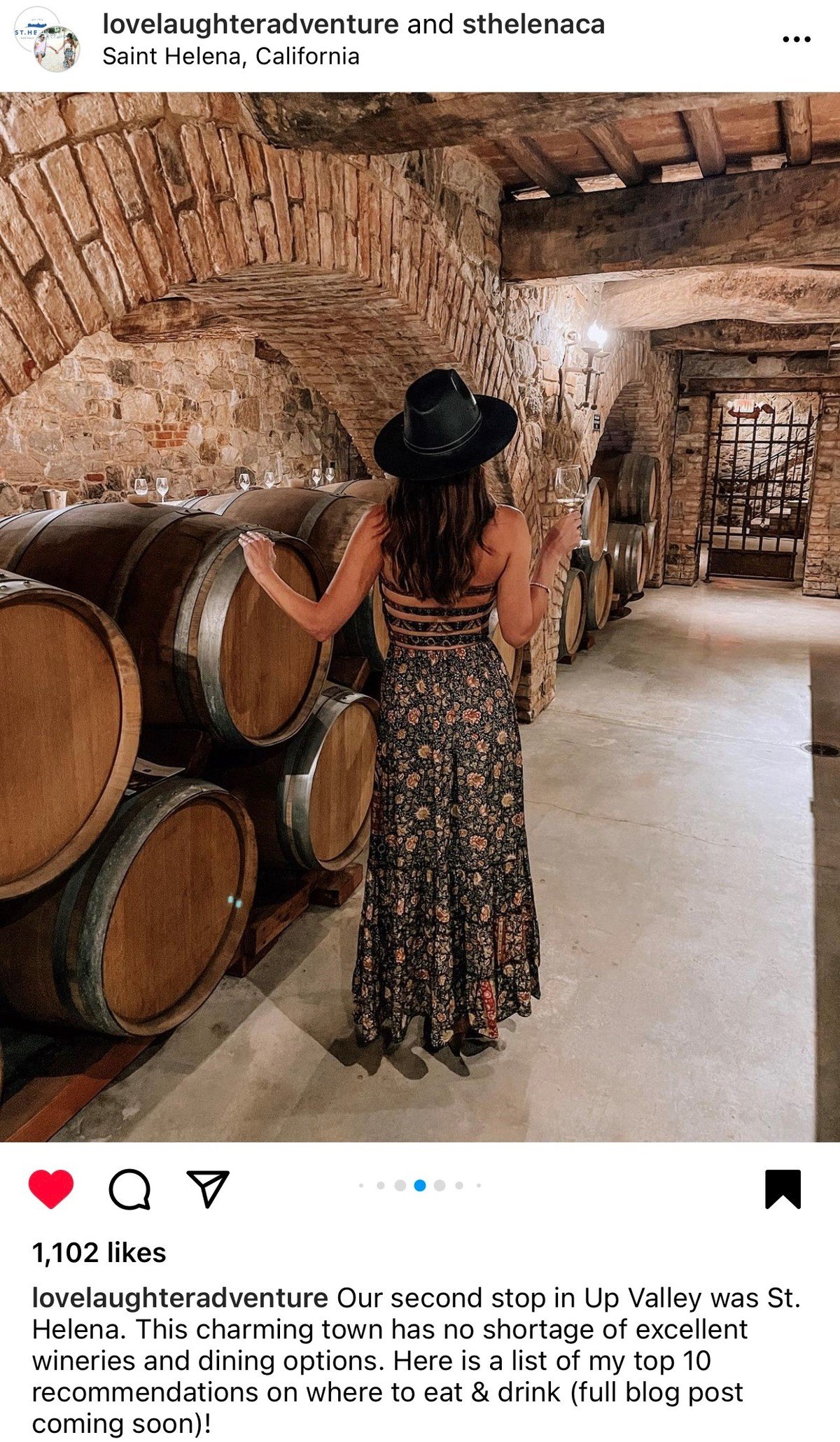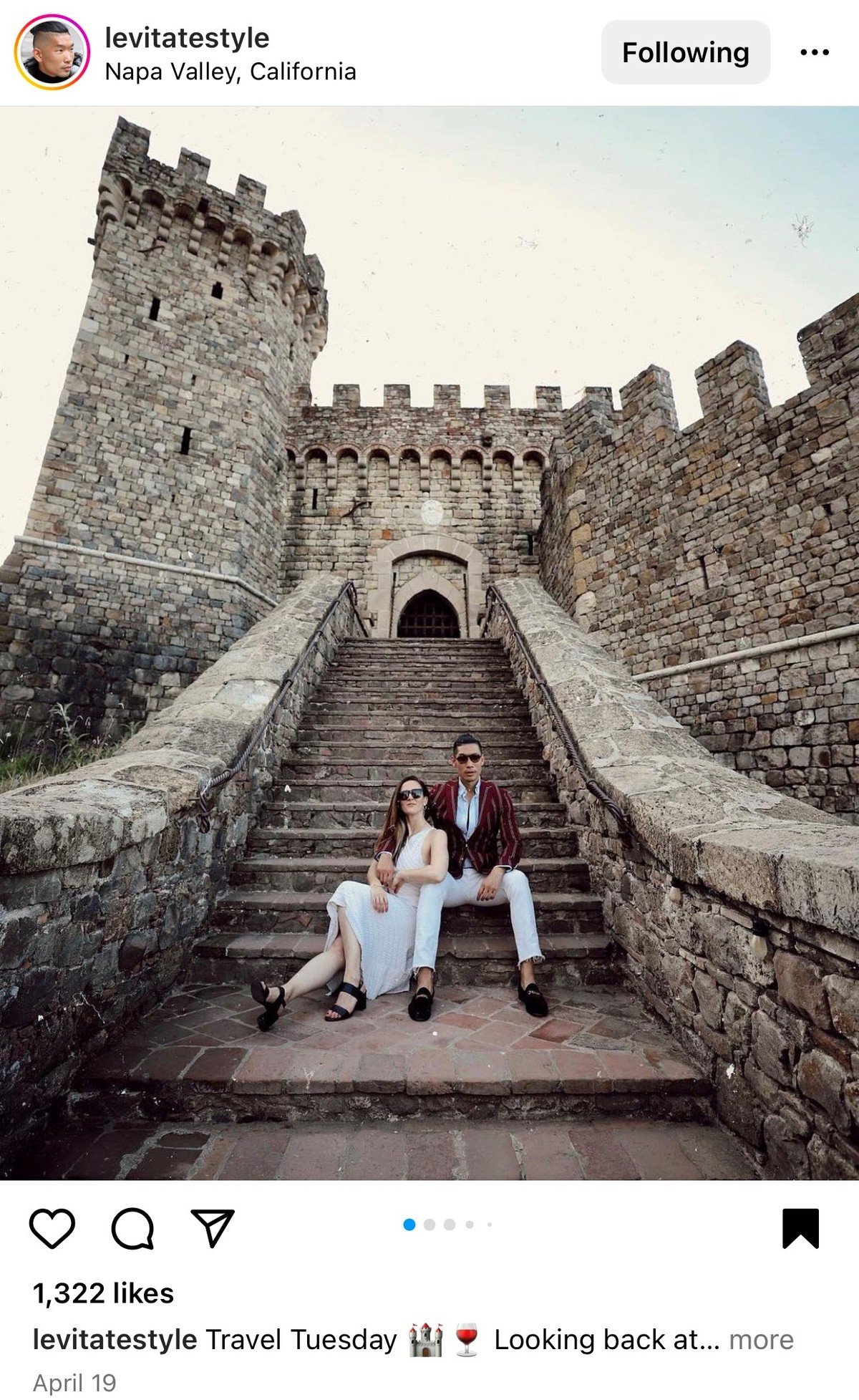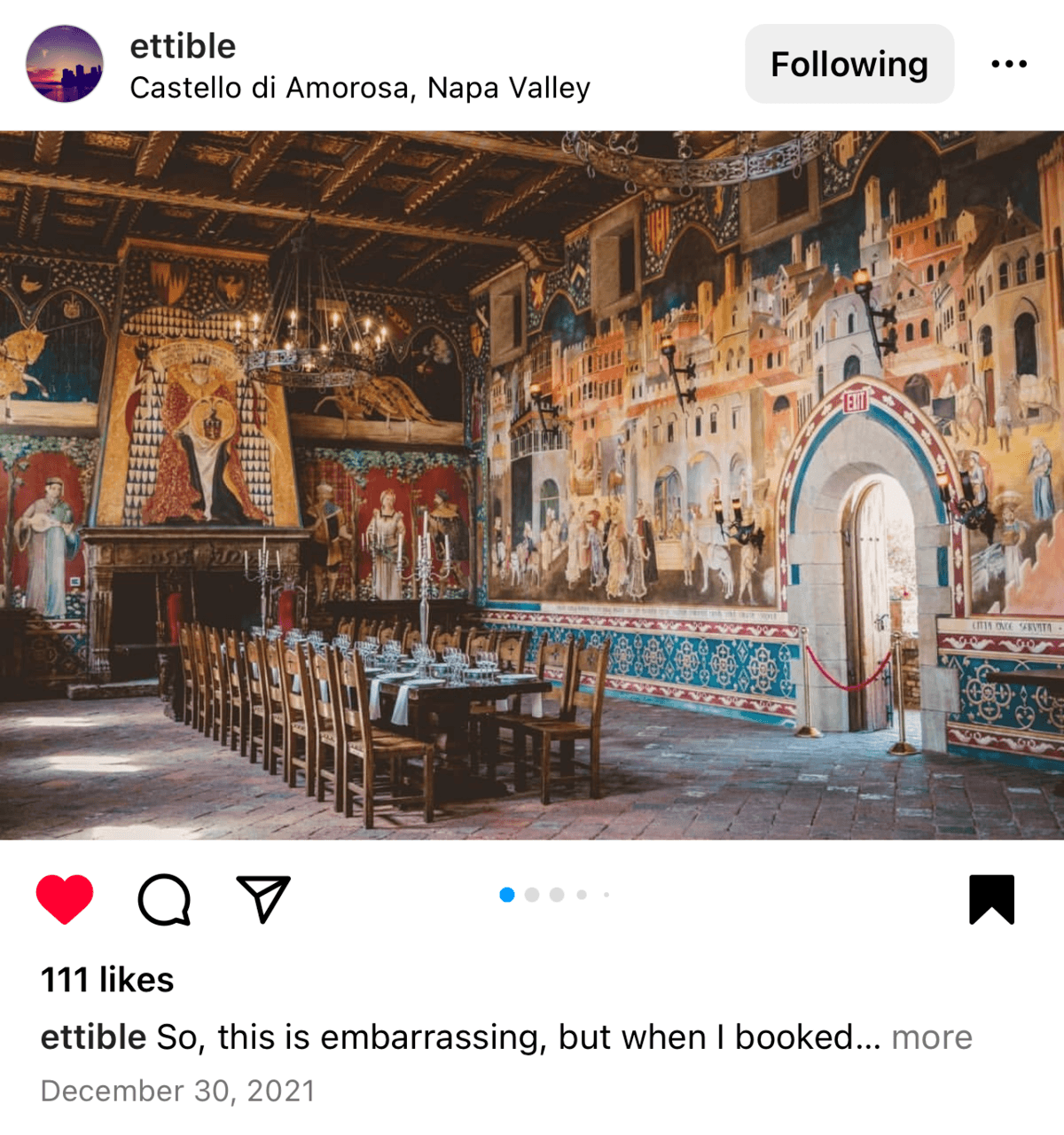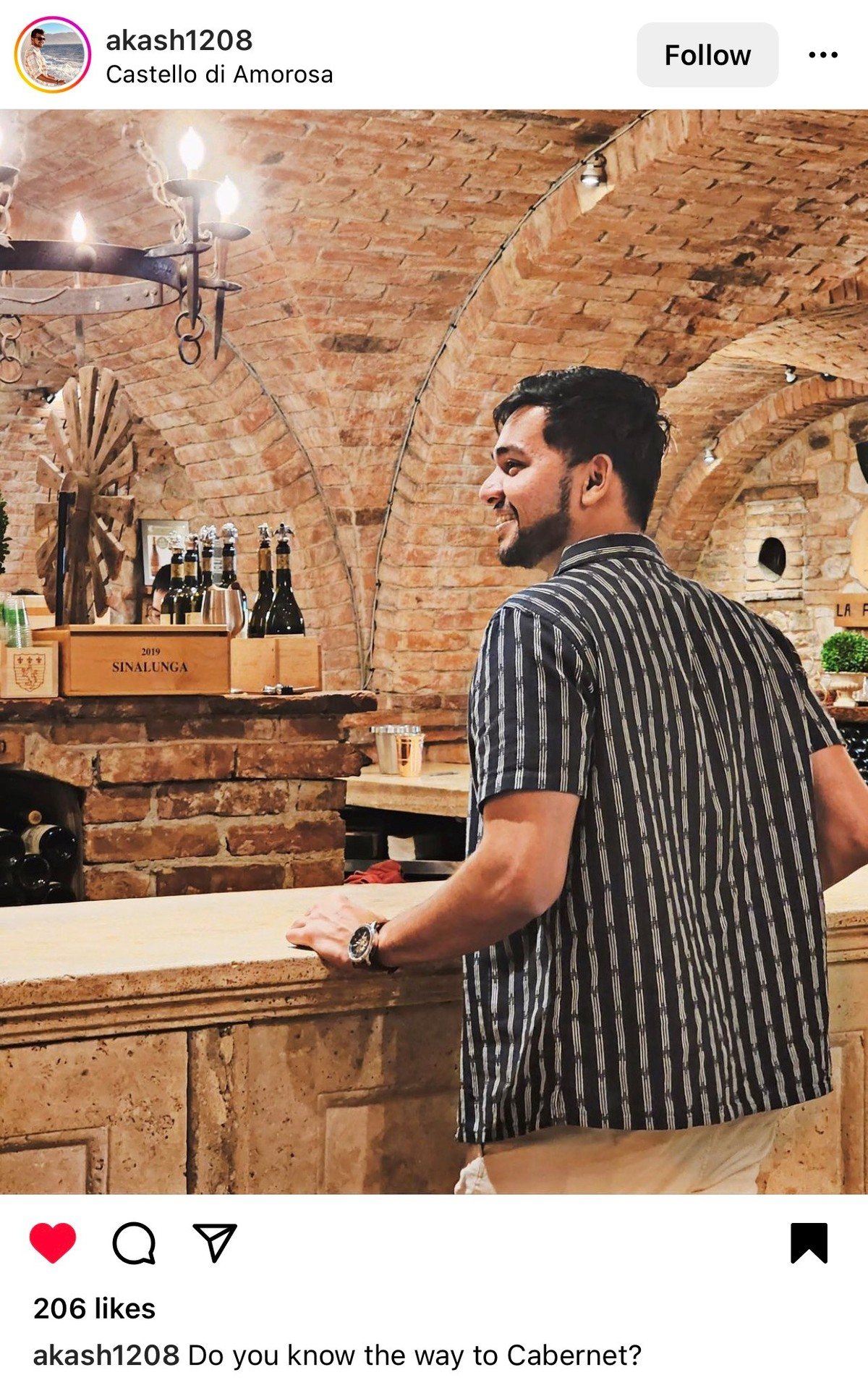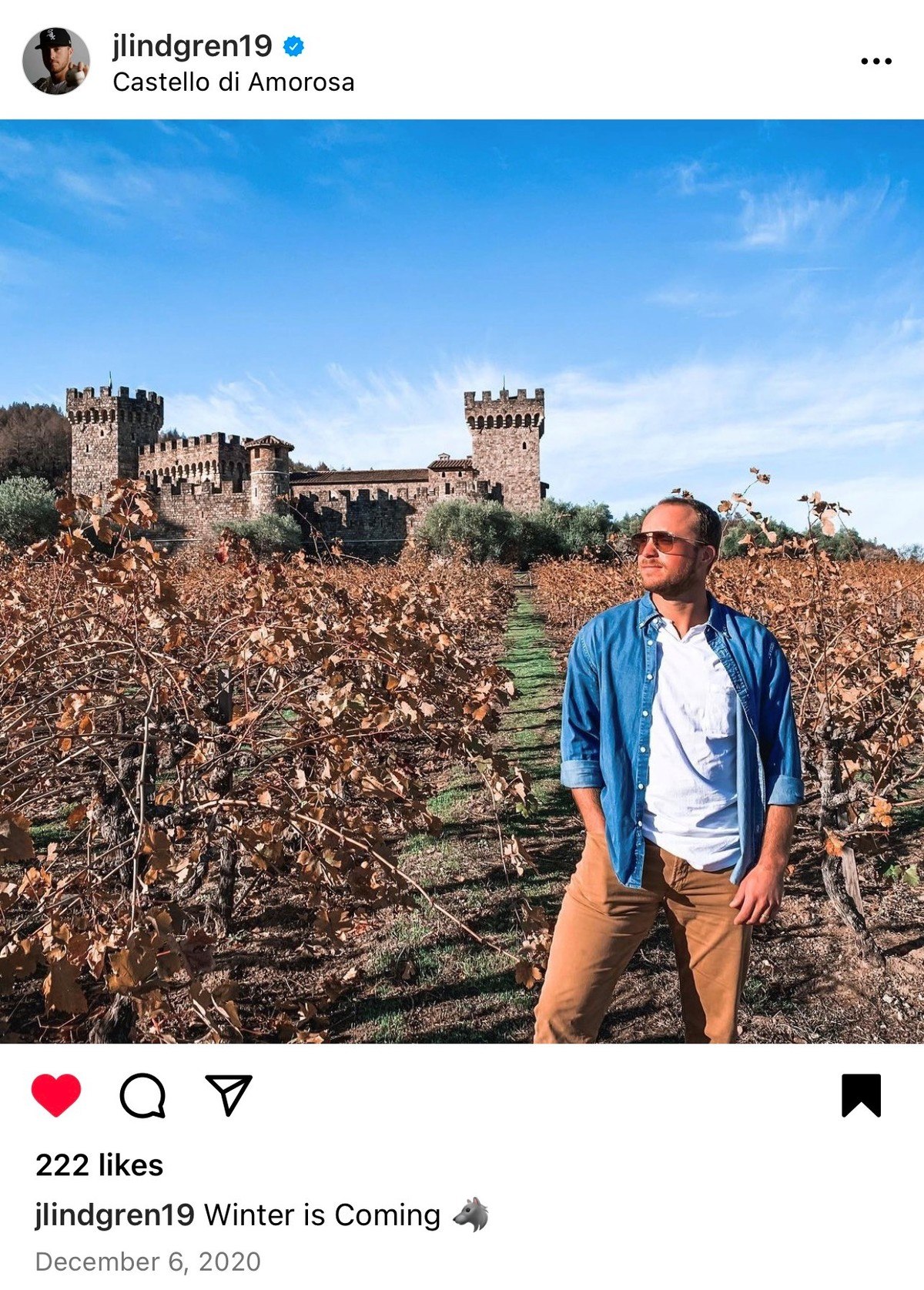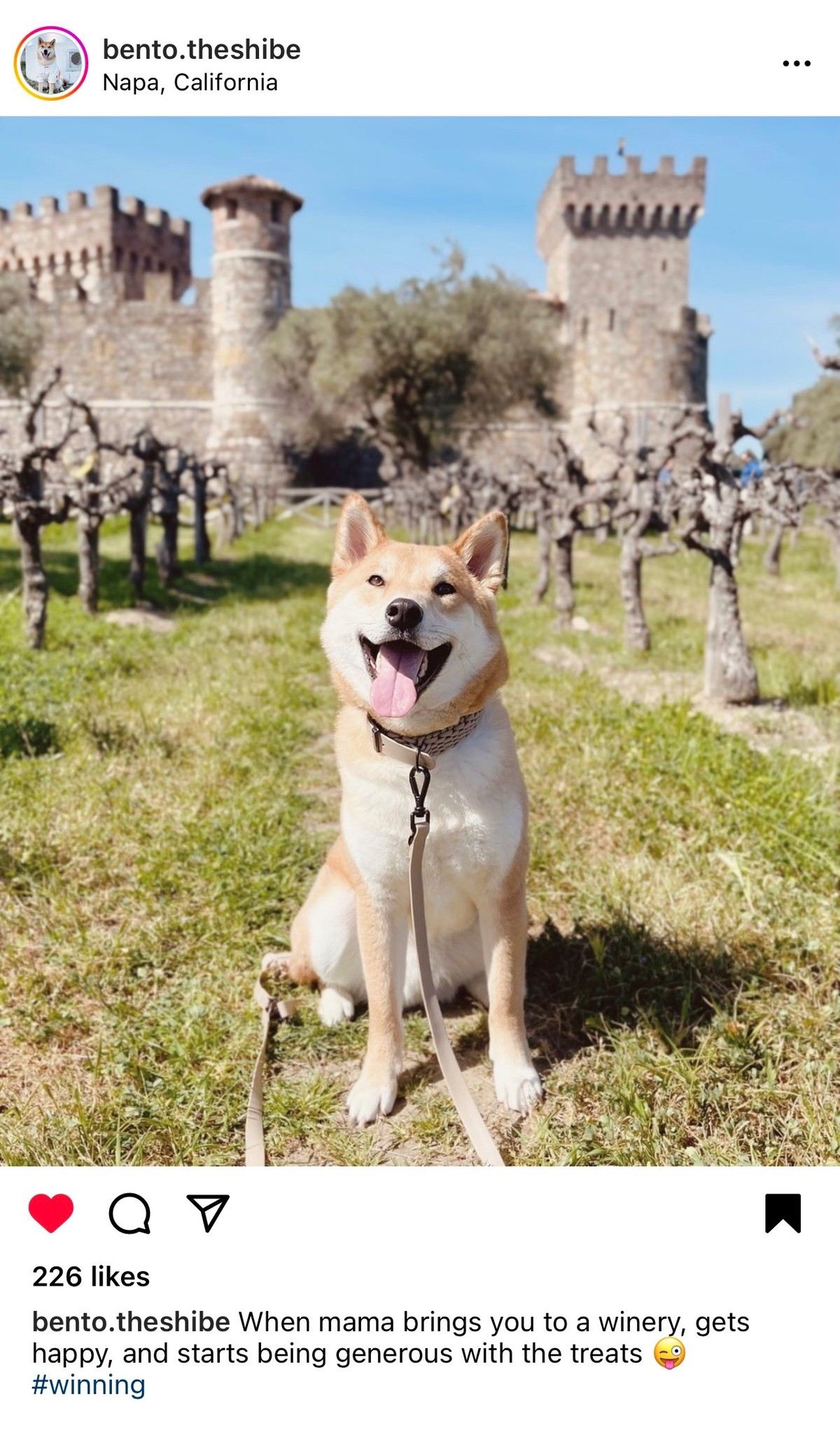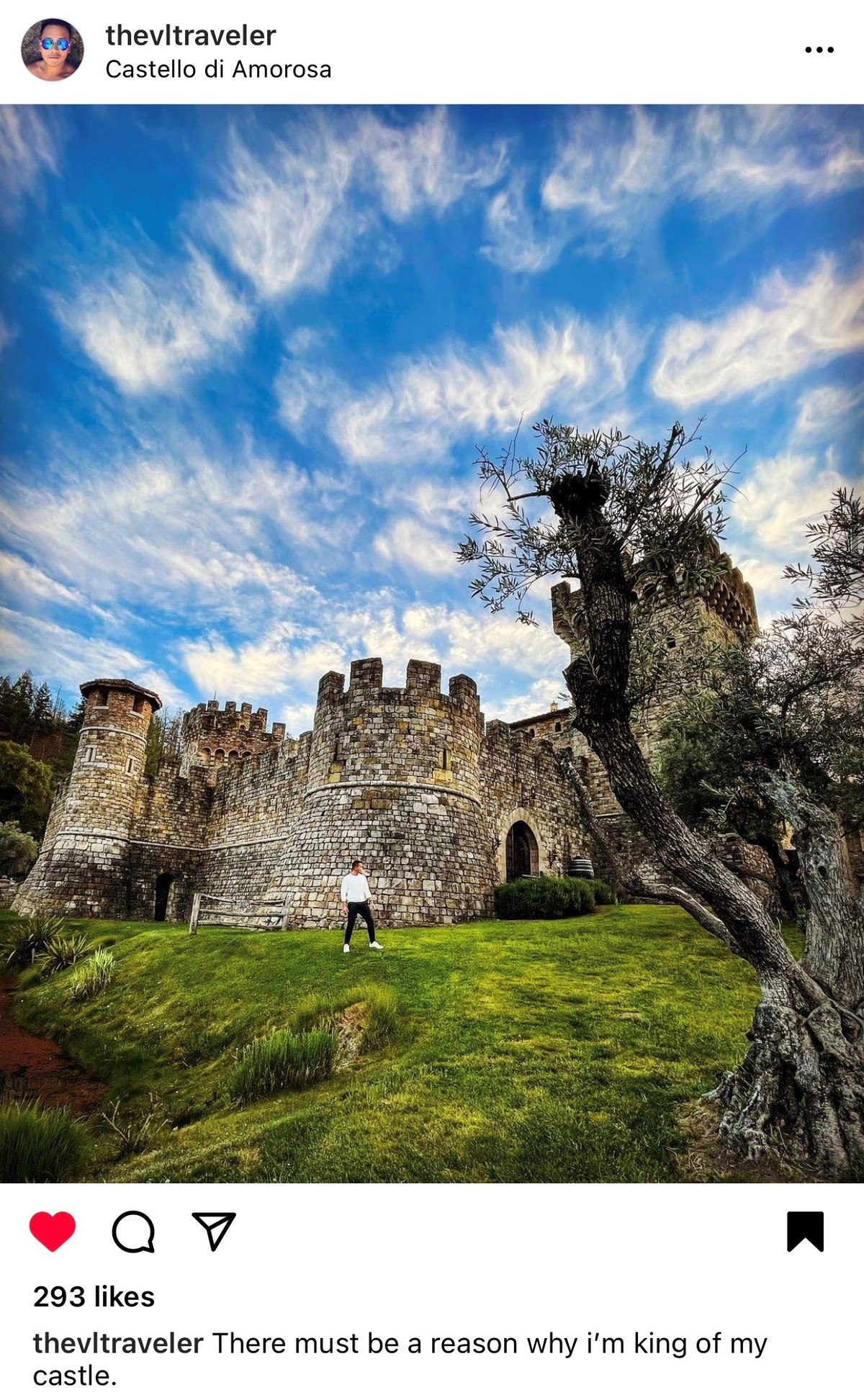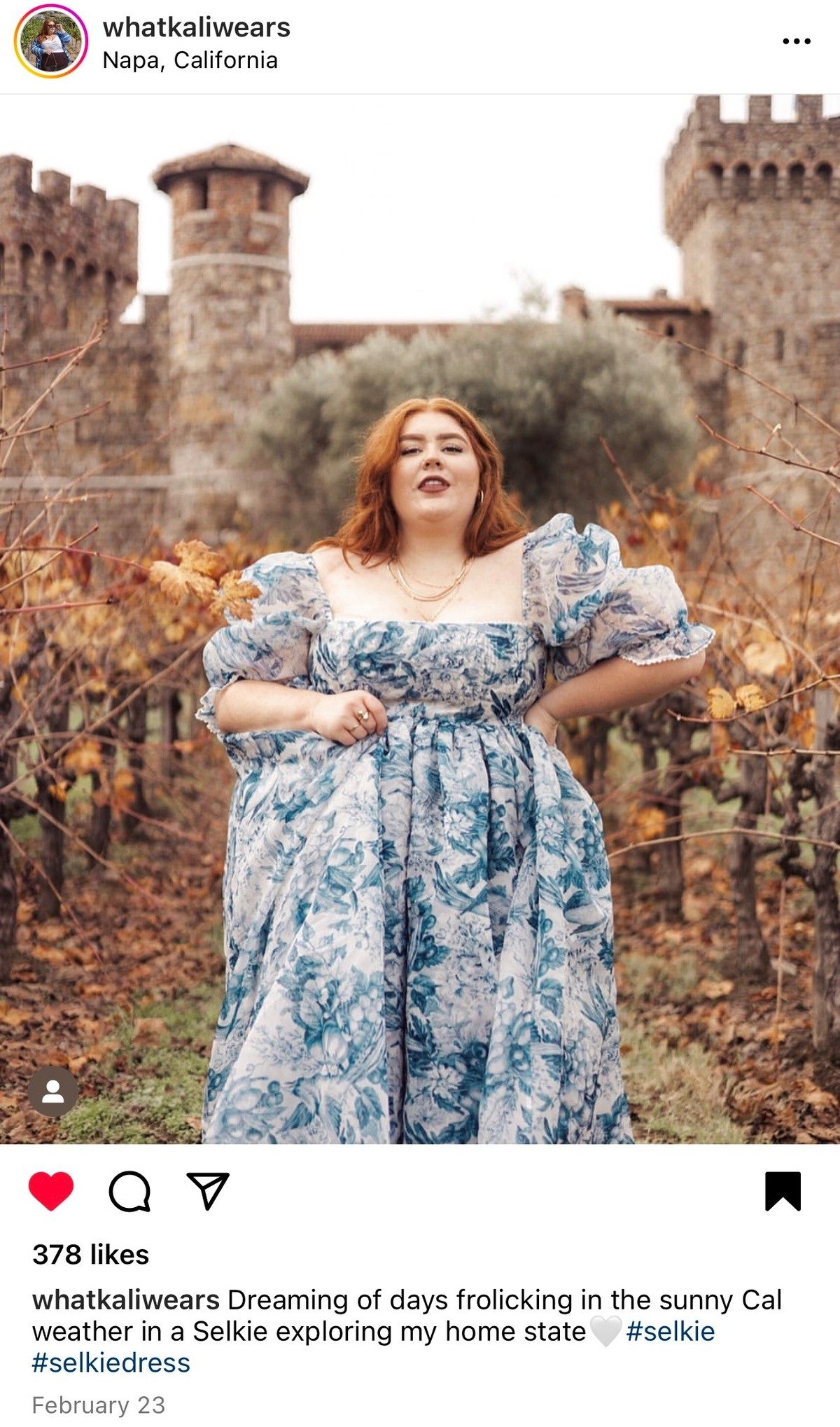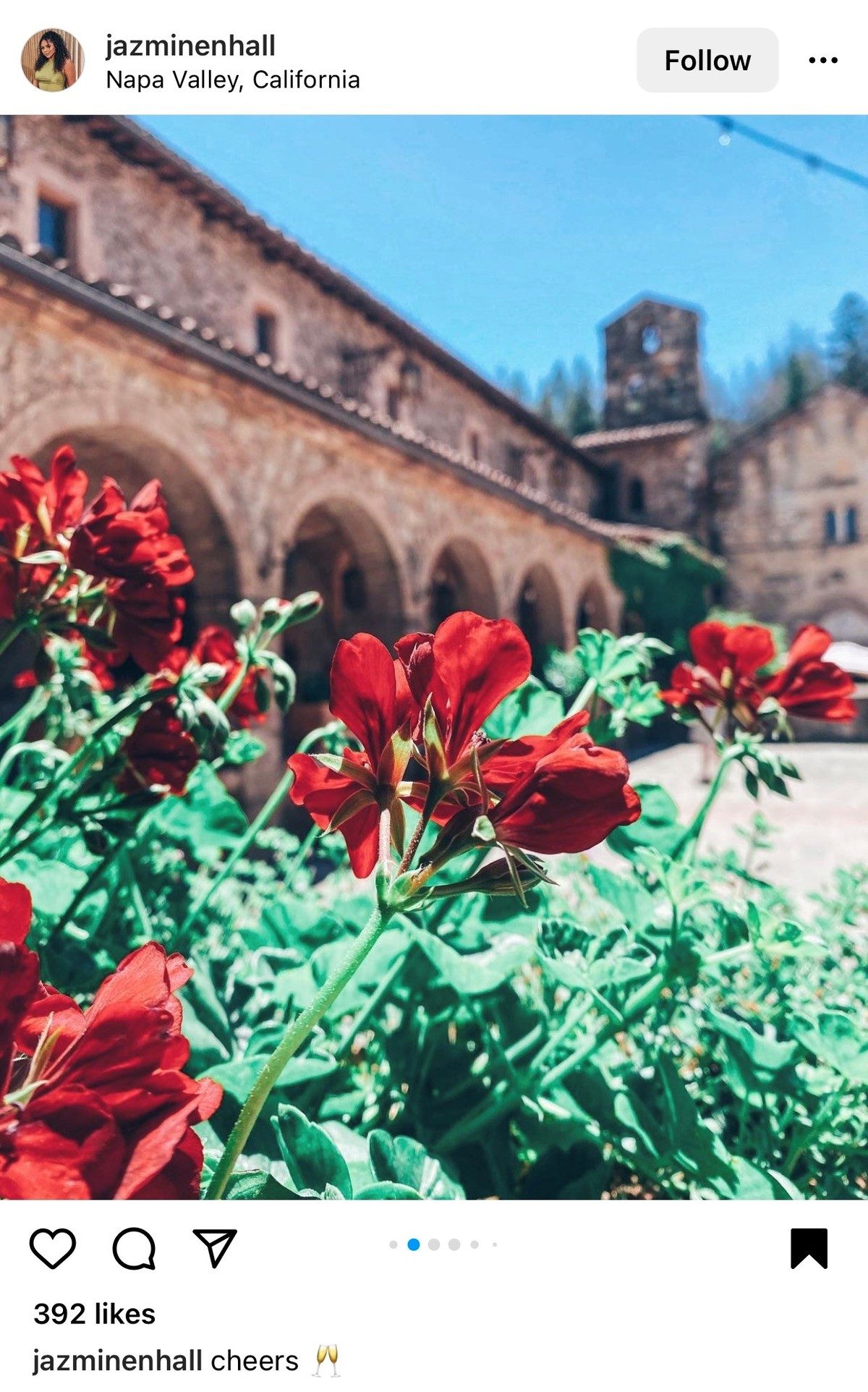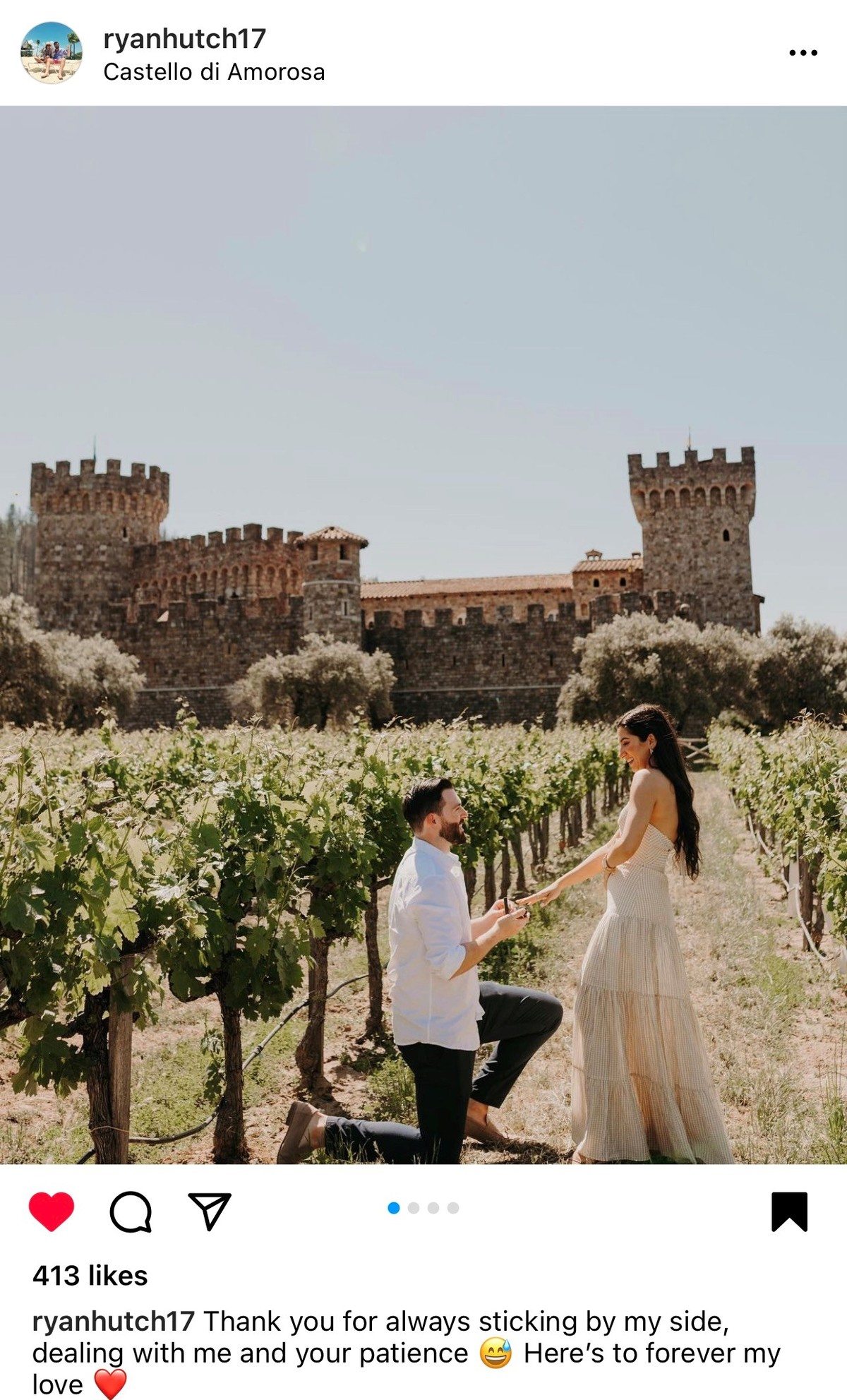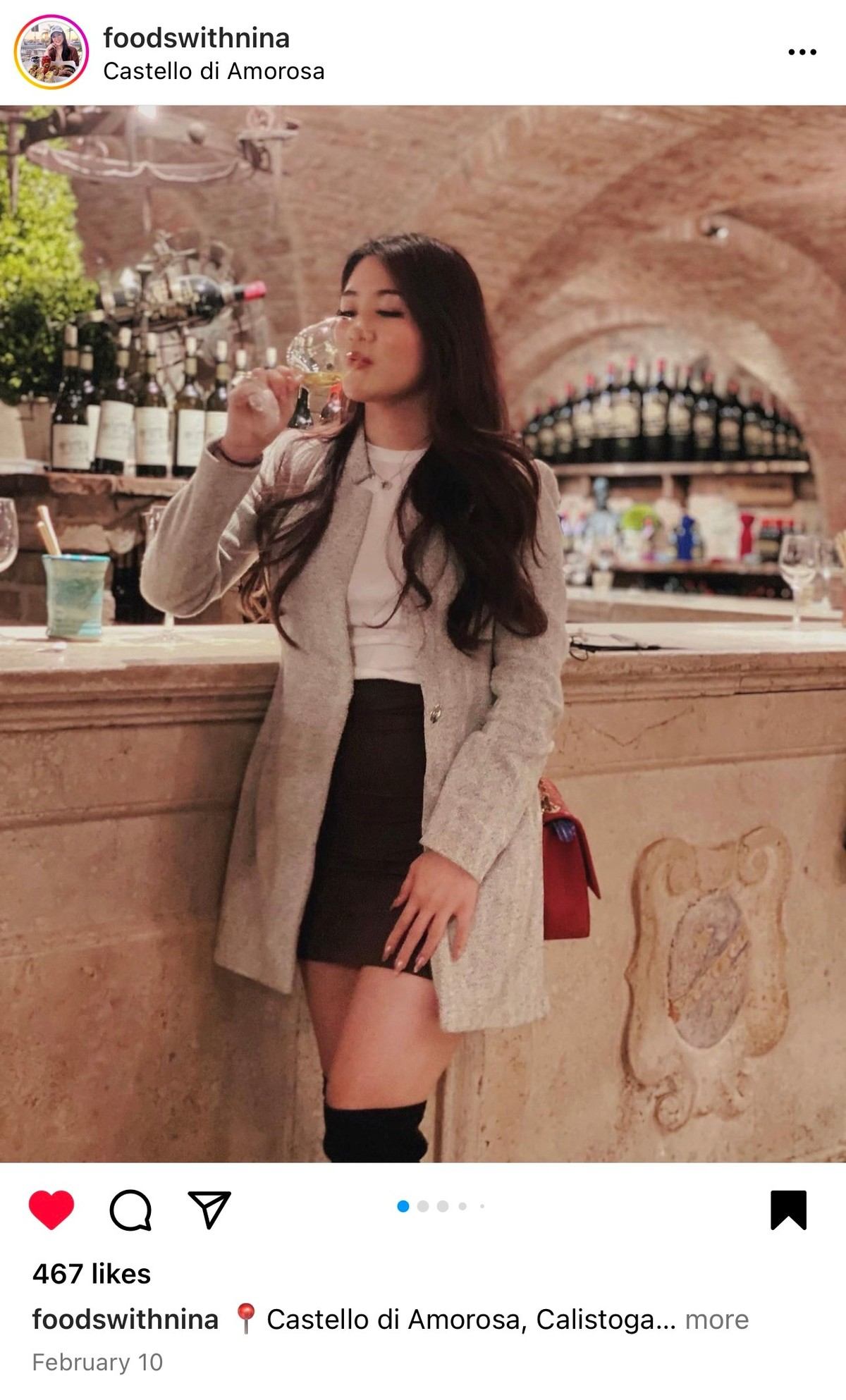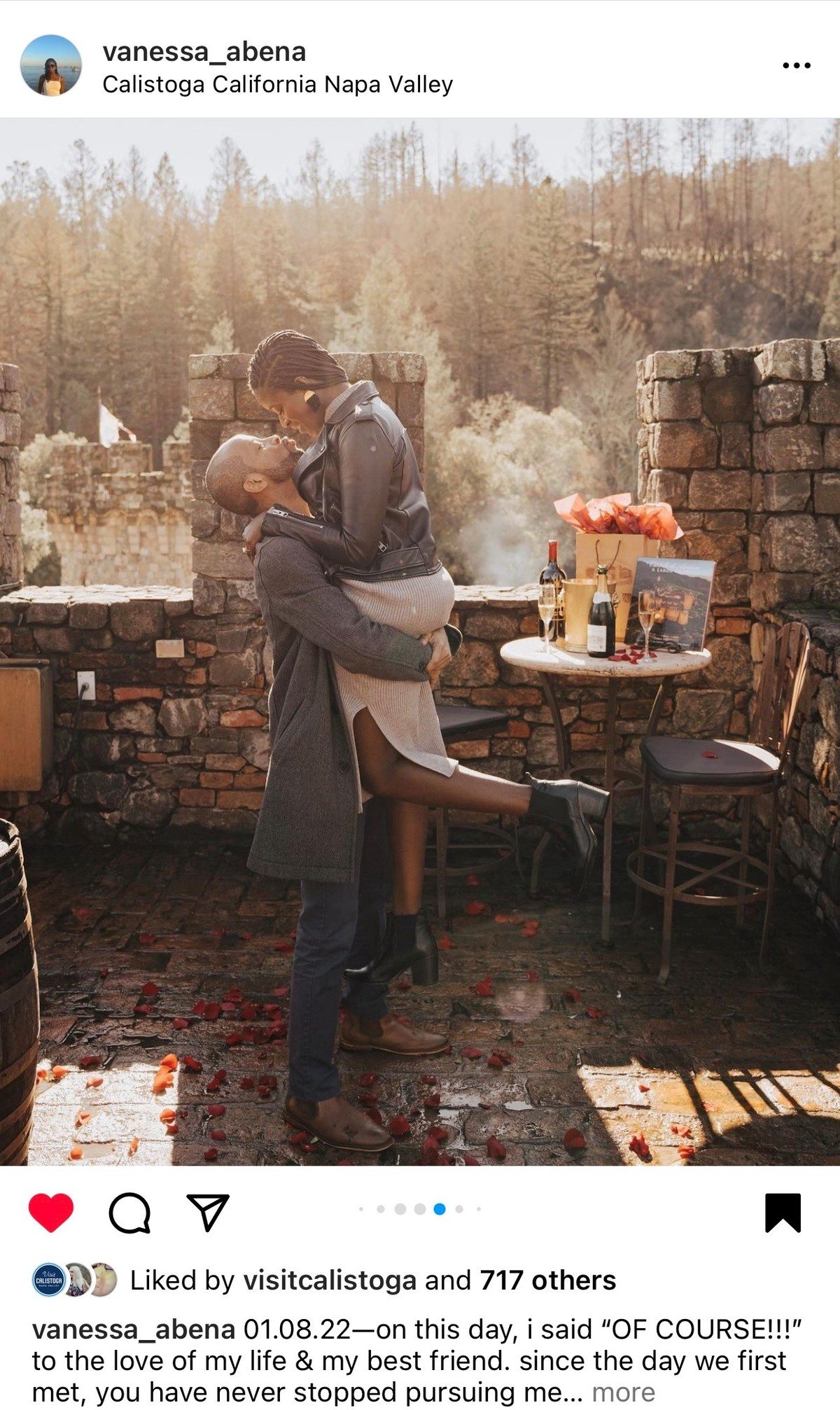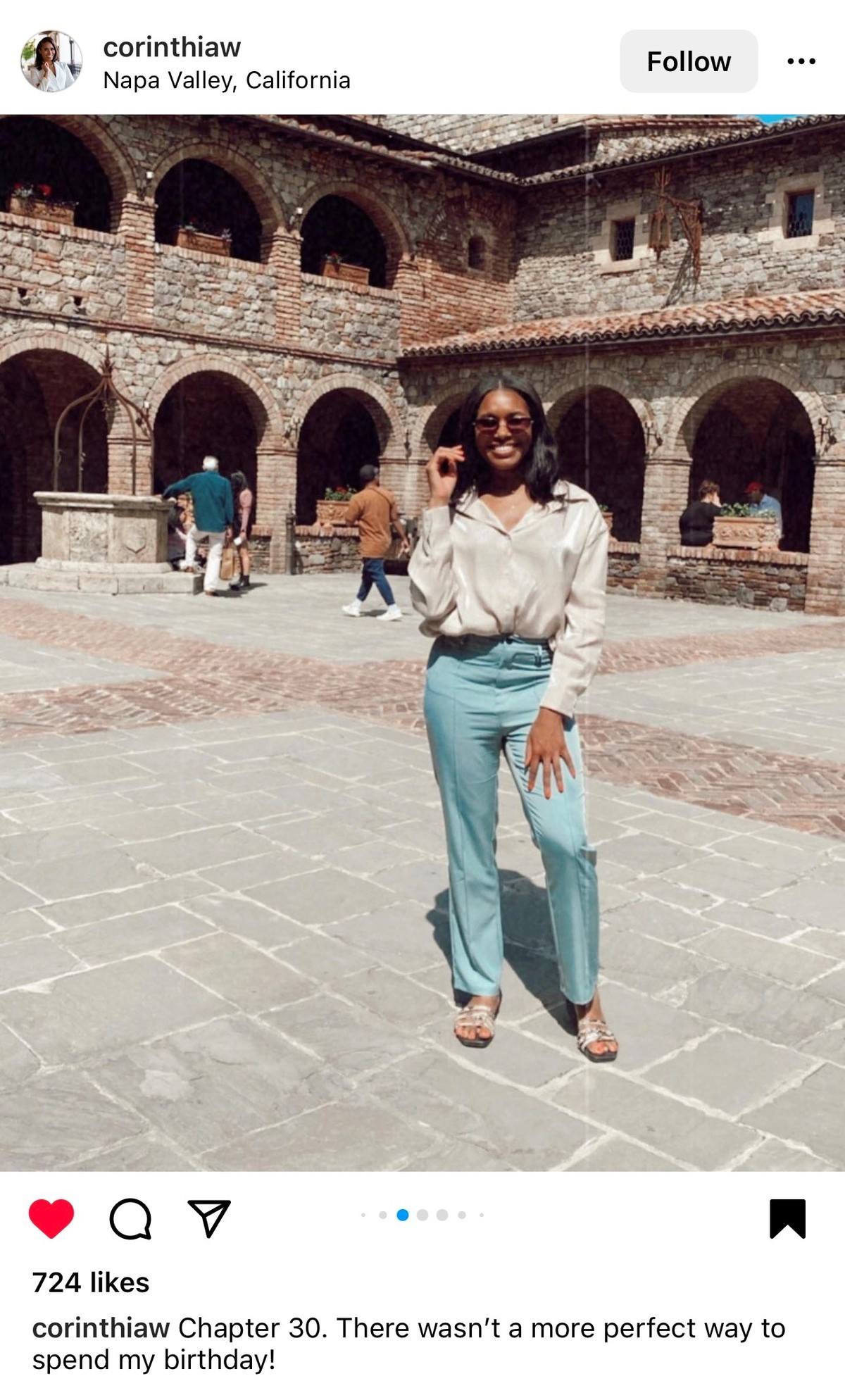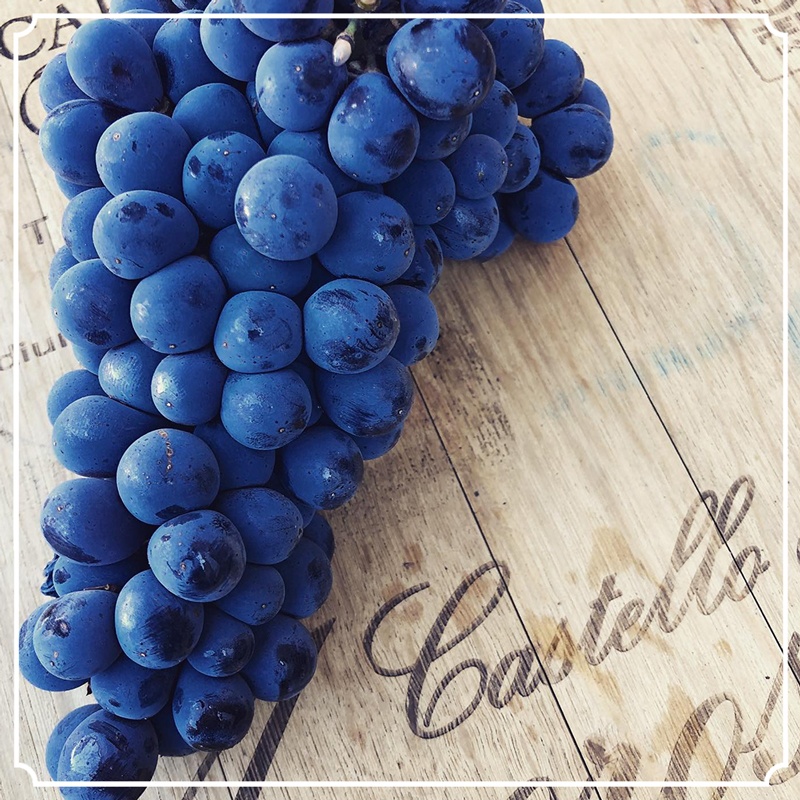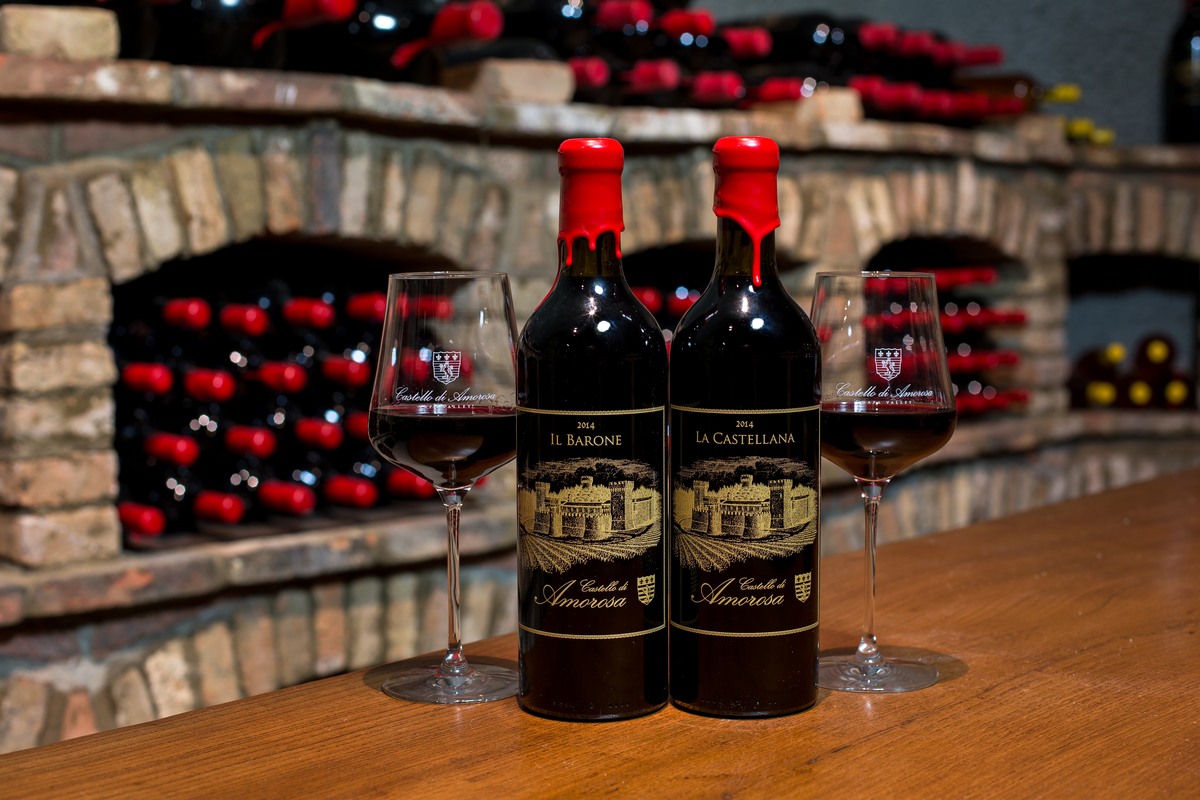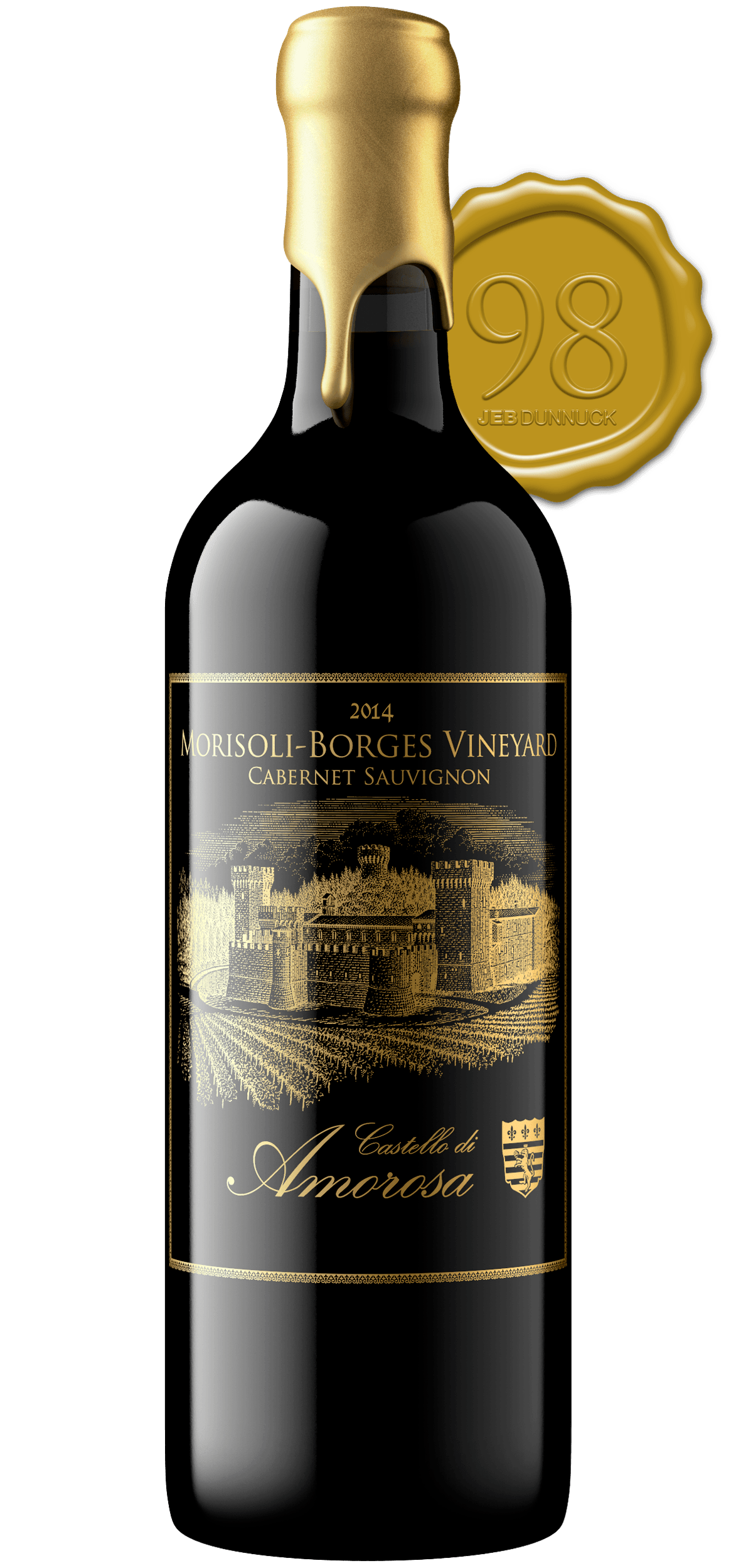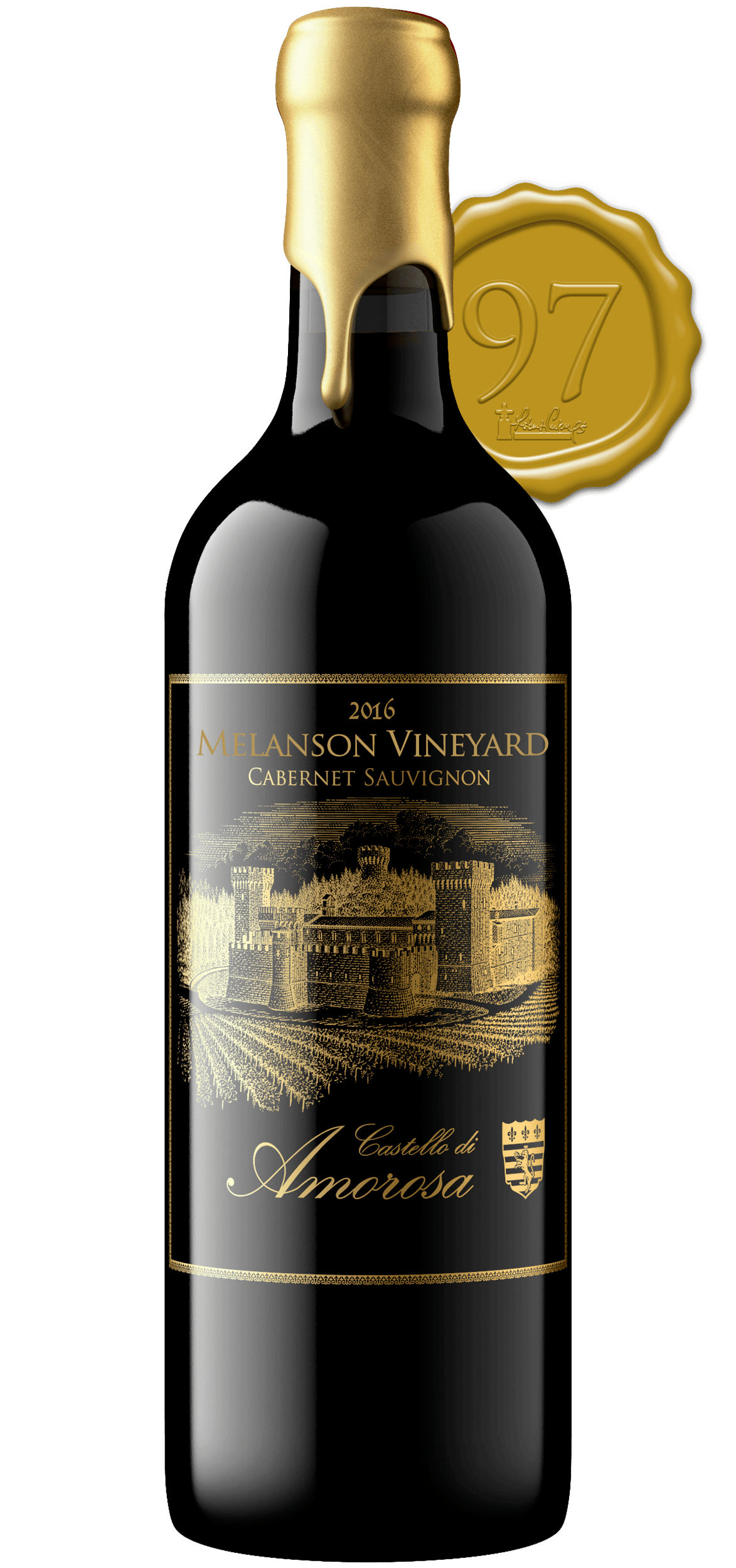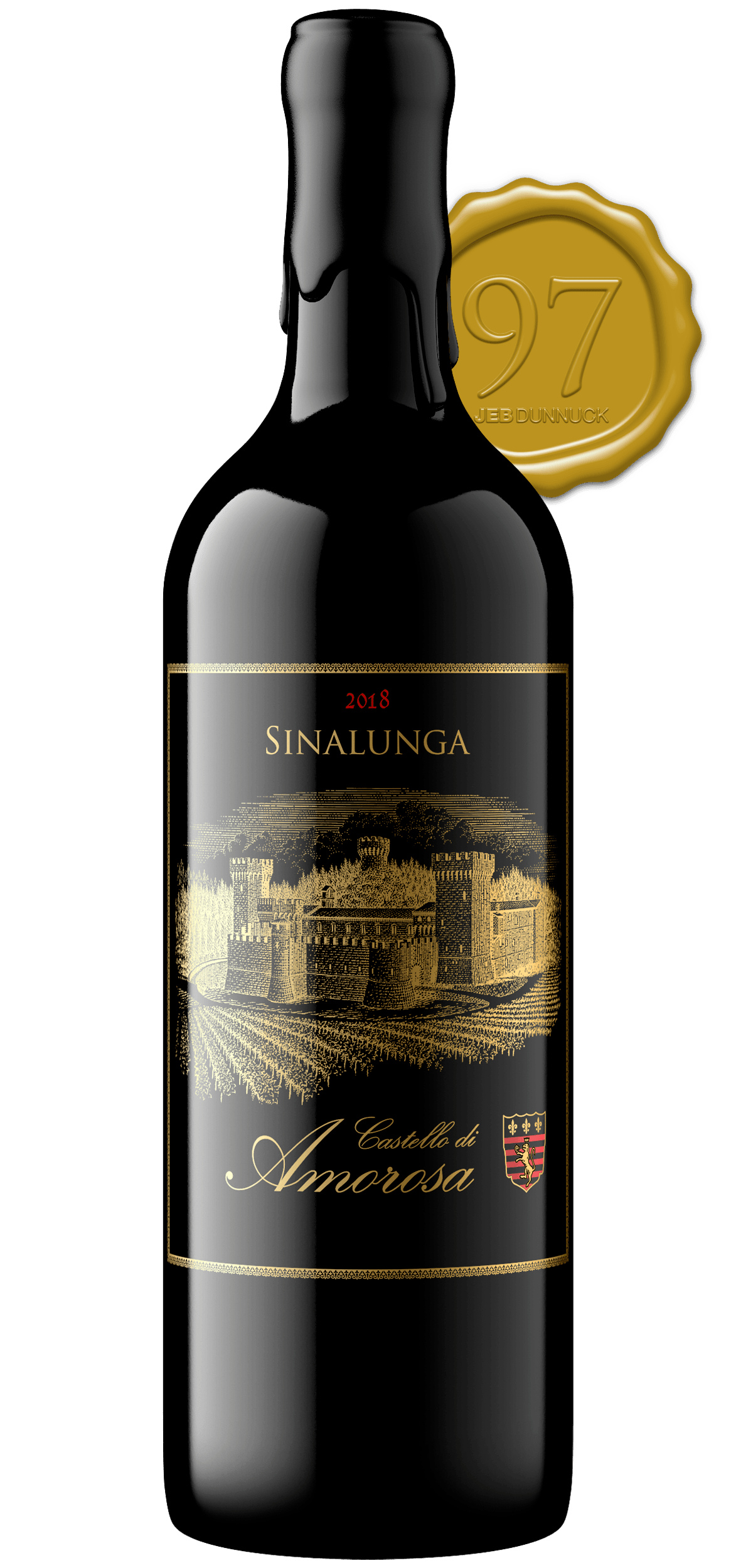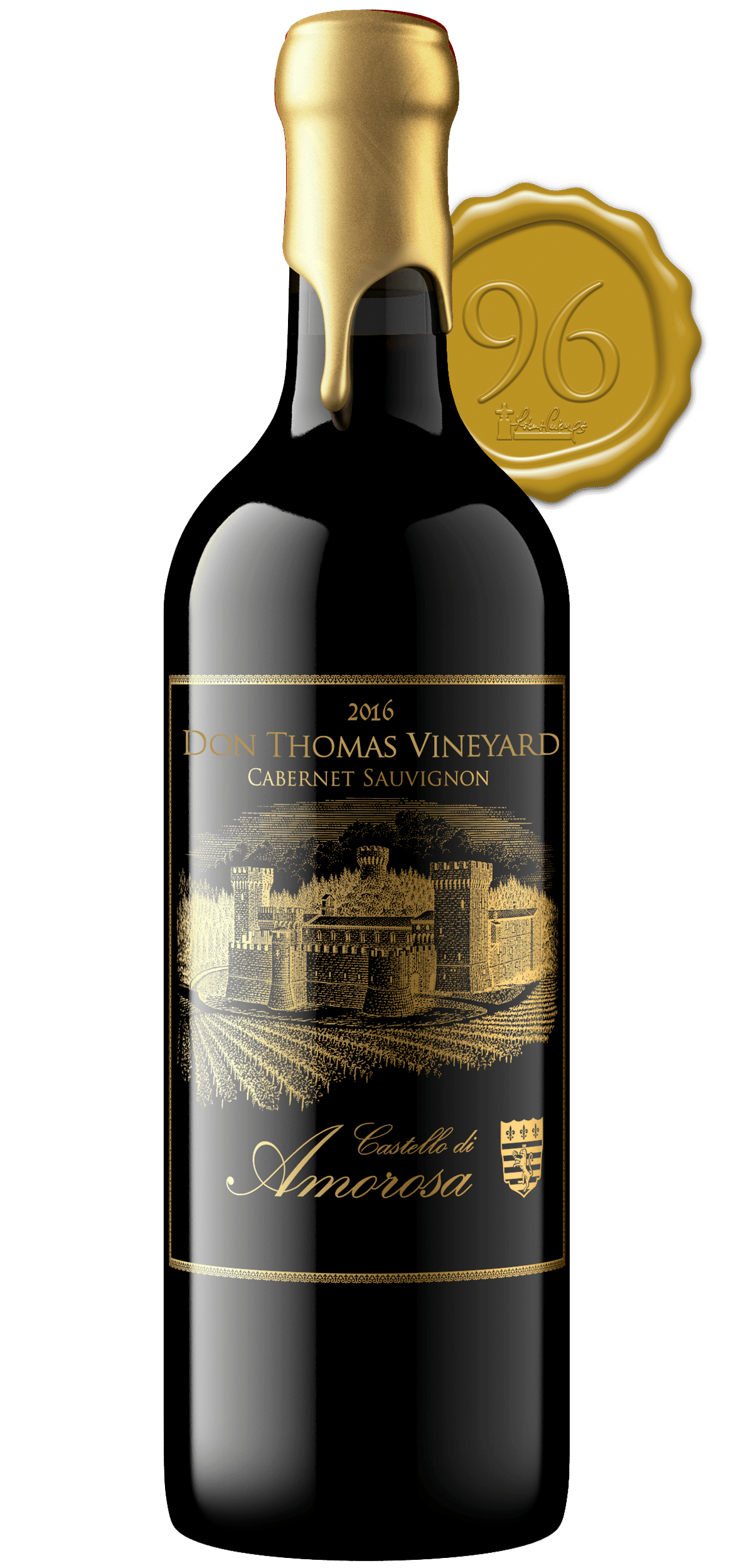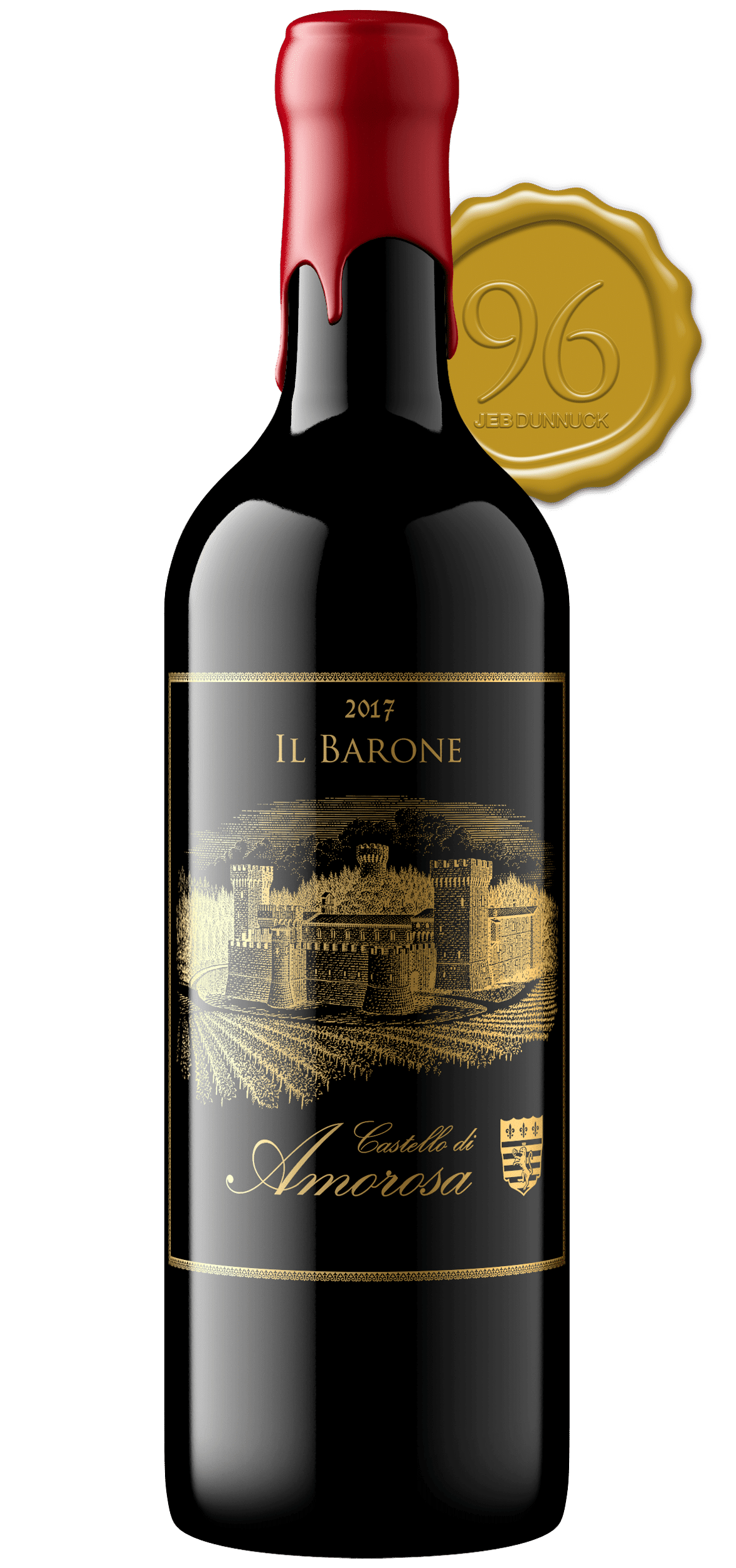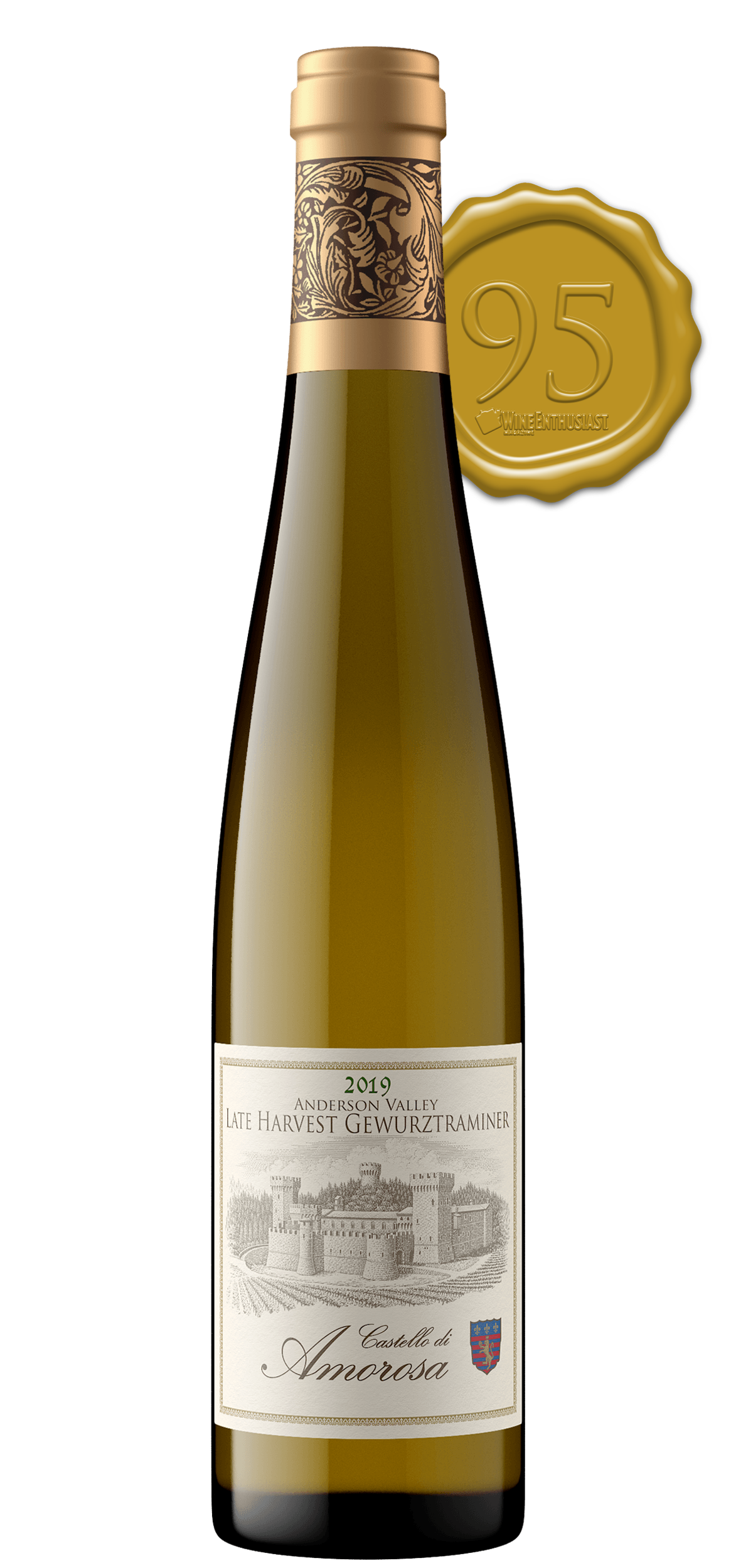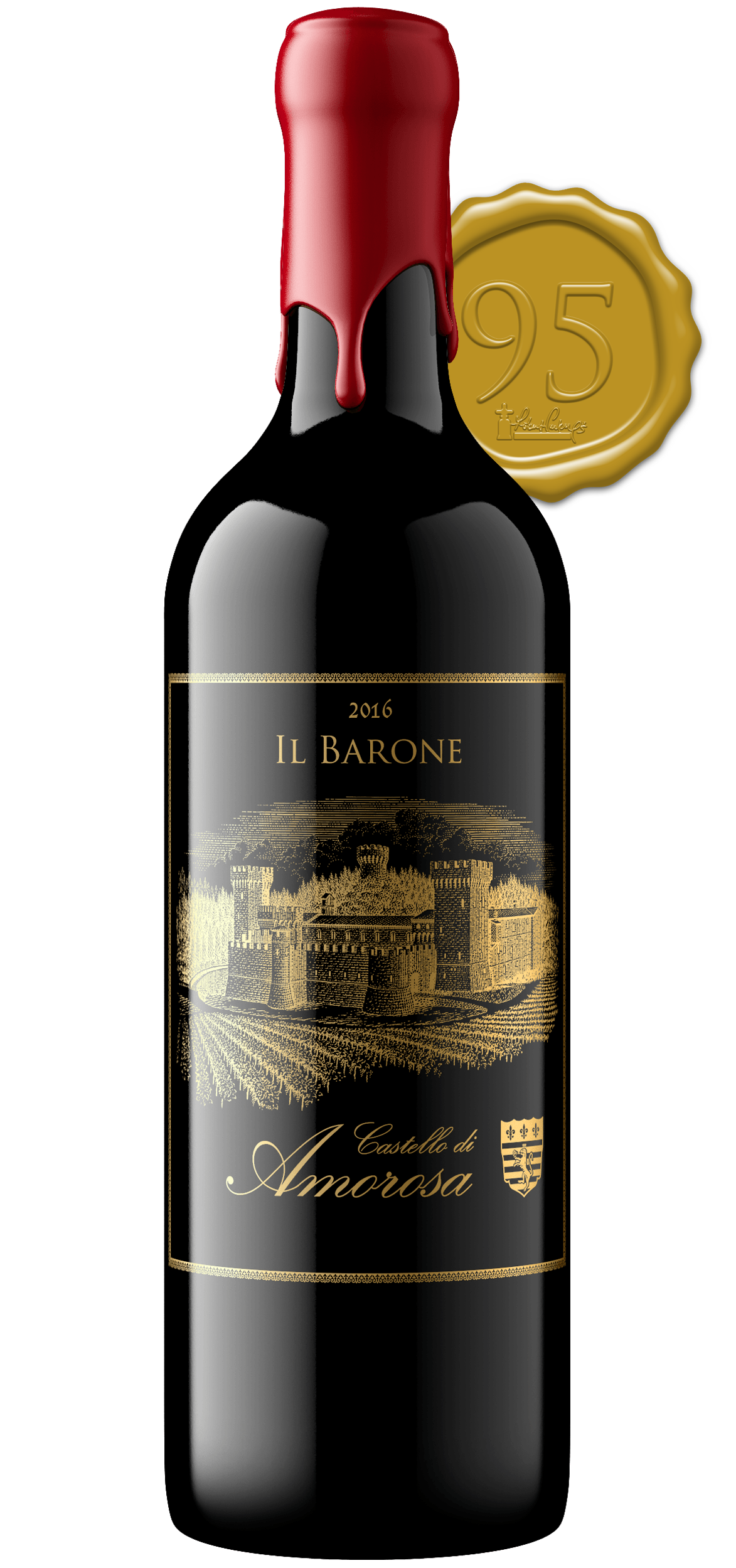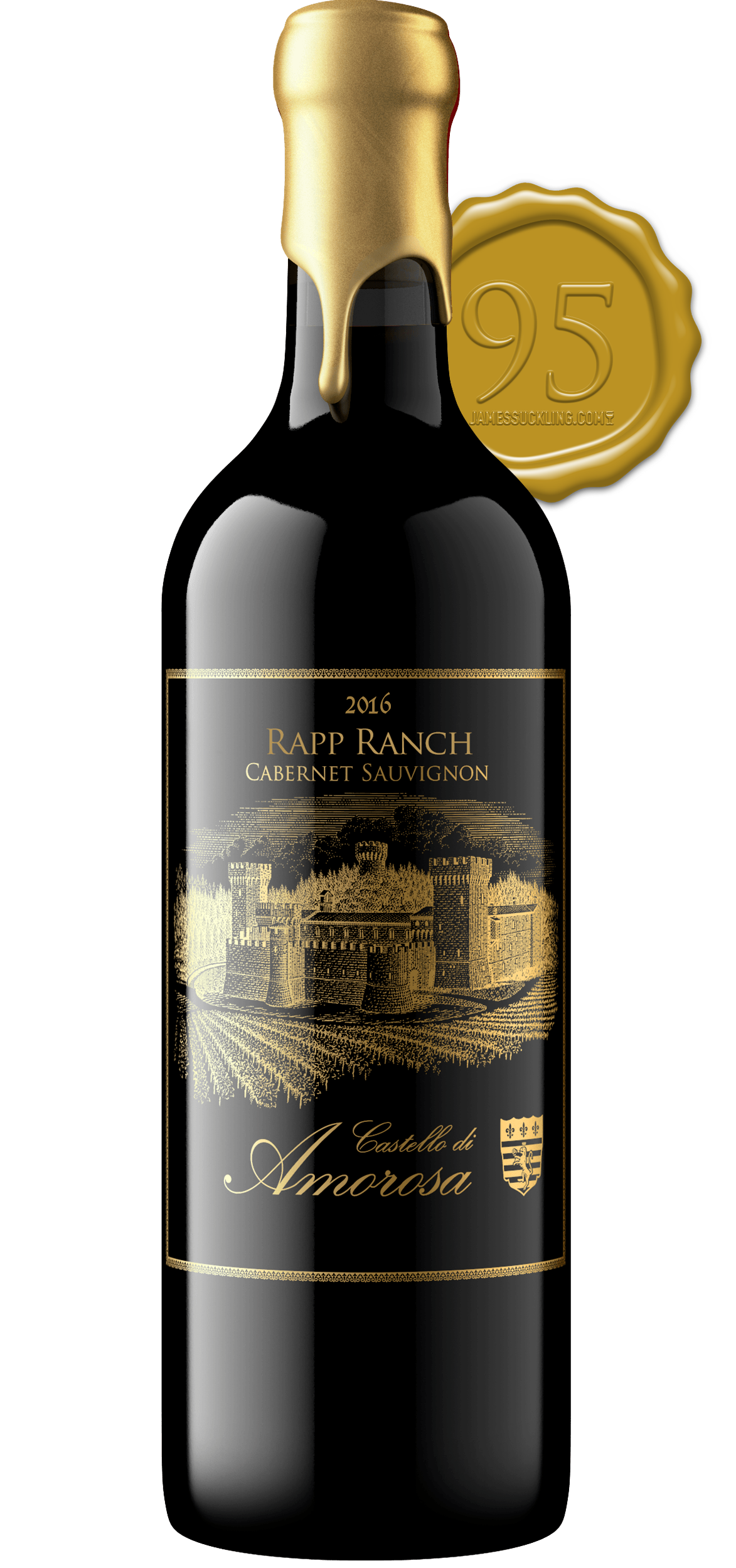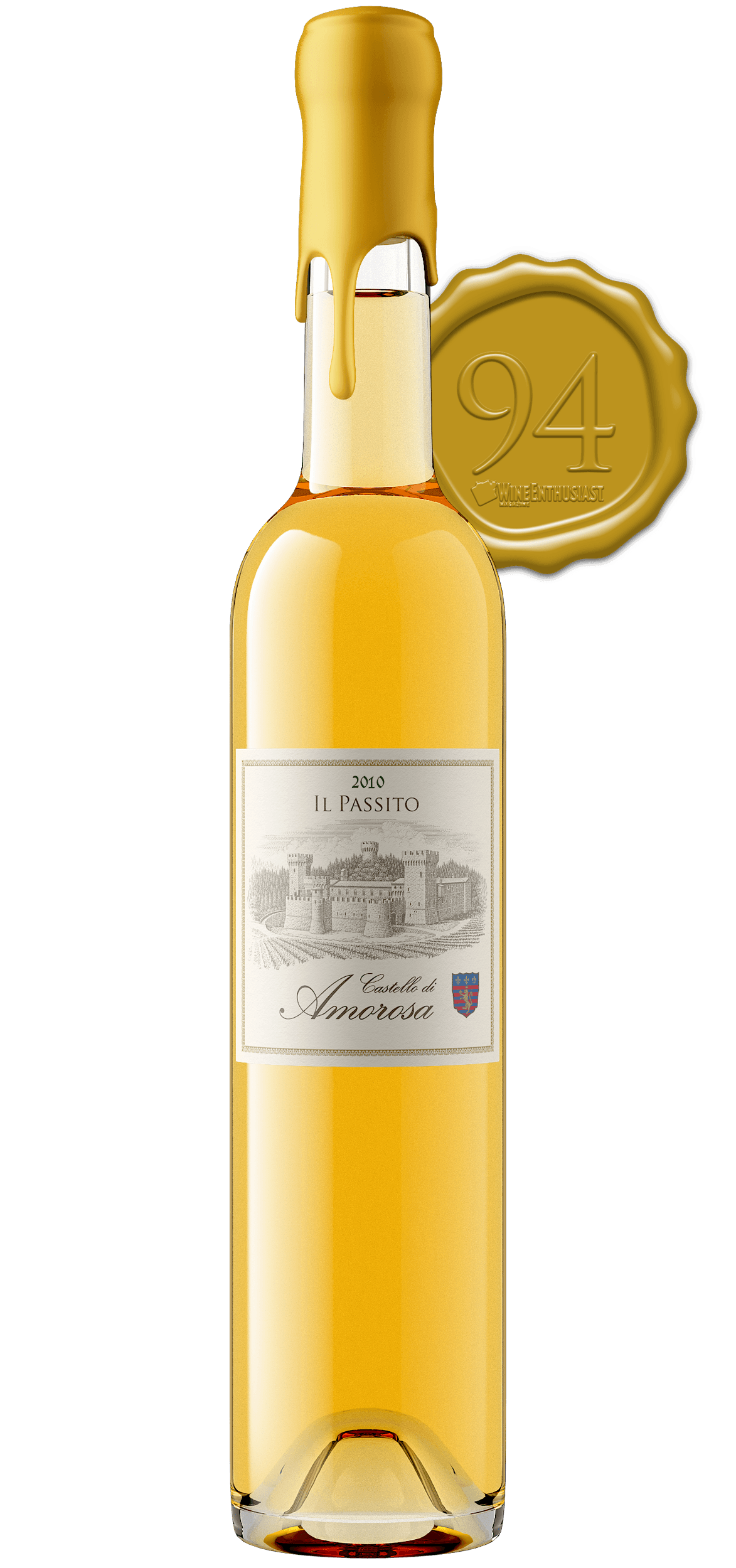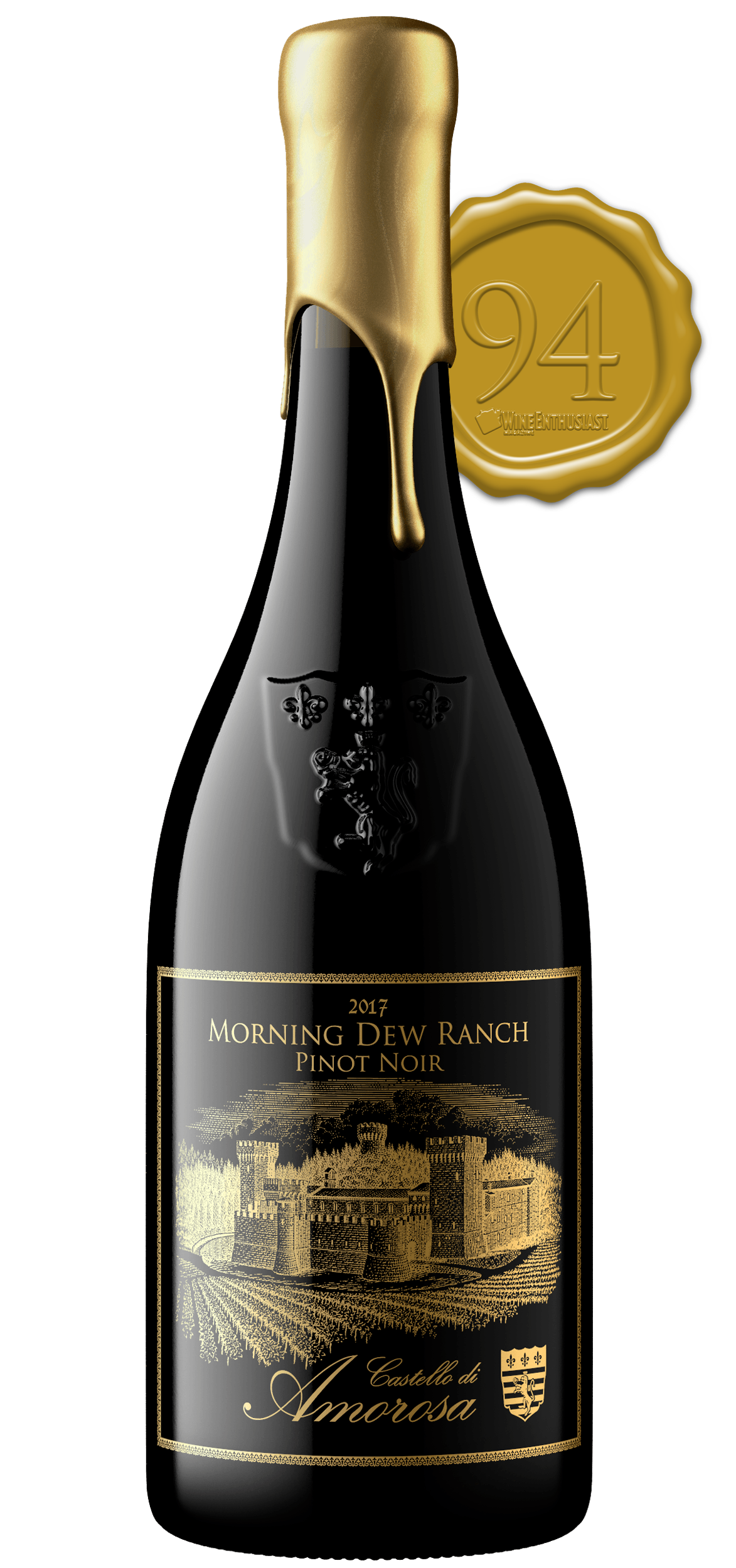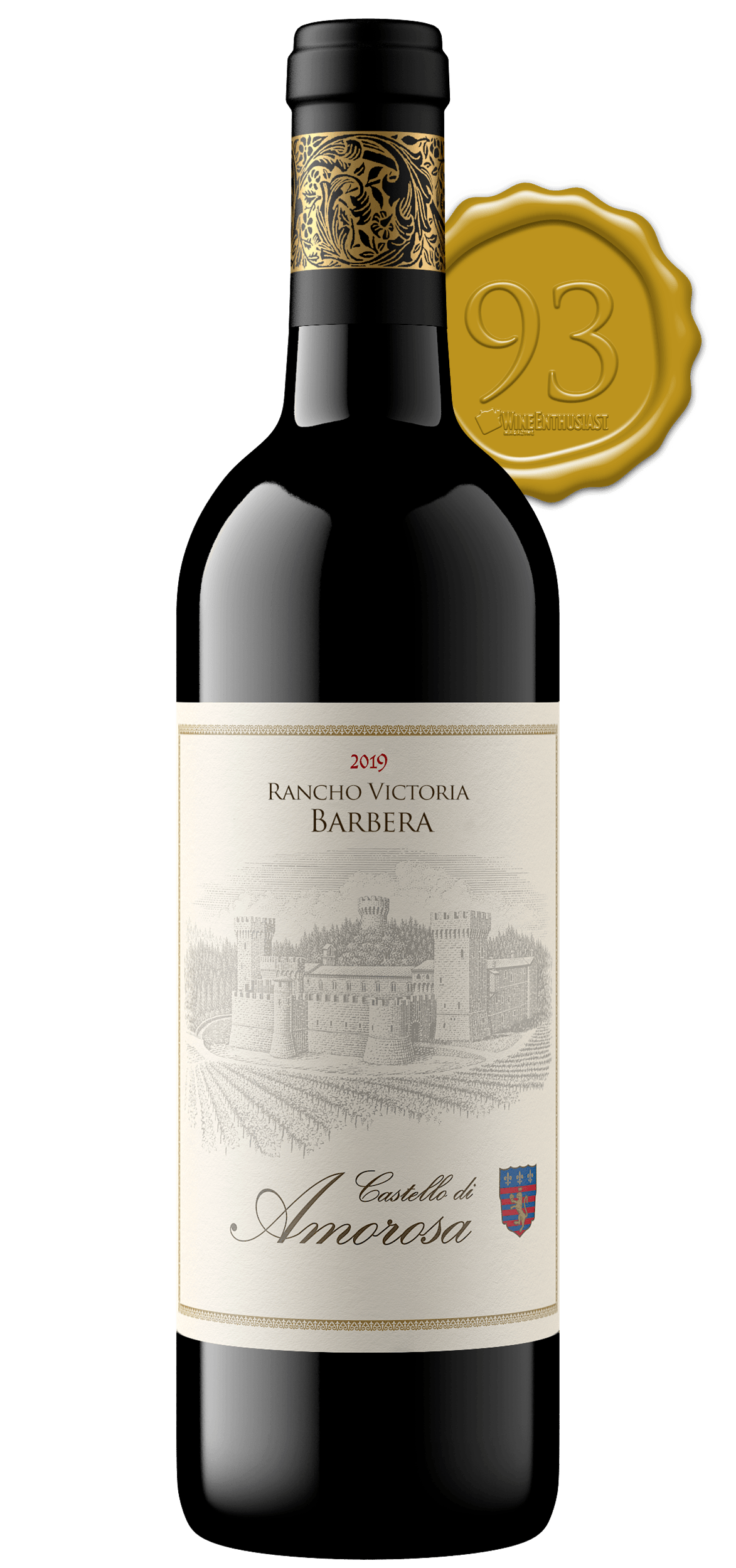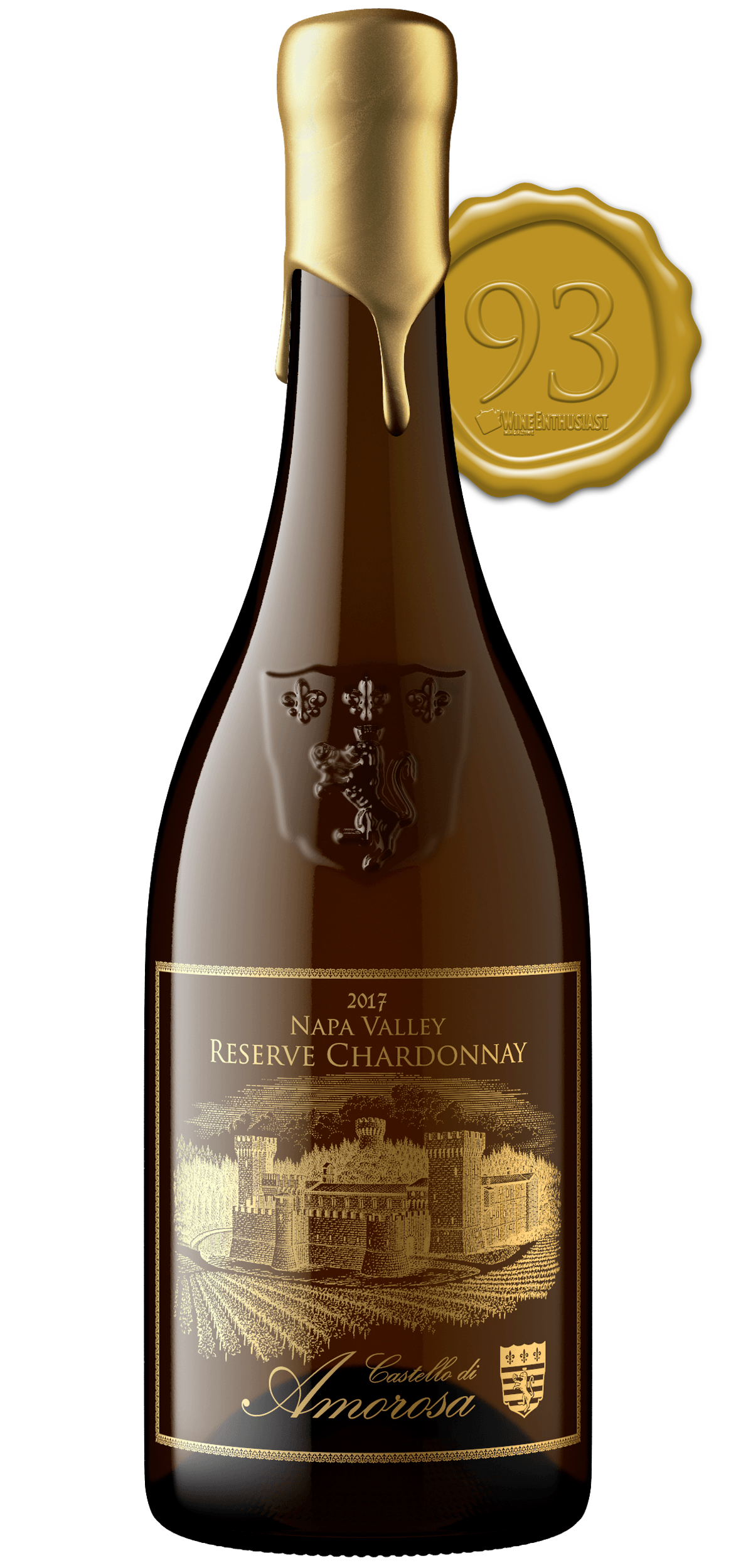#1 Instagram Winery in World

Most Instagrammed Winery In The World
Based on research we were identified as the top, most instagrammed winery in the entire world. We couldn’t have made it here without the support of our loyal guests & friends. We genuinely appreciate you for your support on Instagram and all social media networks. Our team guarantees to keep working toward making your experience the best it can be.
Thank you to the wonderful staff of The Thinking Traveller for conducting this research. Below this article you can find a link to the original article by Thinking Traveller. Based on their research, they found the 15 most Instagrammable vineyards in the world. Thinking Traveller is a luxury travel website specializing in upscale island villas in Italy, Greece, Corsica and Spain.
The American photo and video sharing social networking service Instagram founded in 2010 has been dominate since its inception. Instagram has long been a source of inspiration and aspiration photos, with reports analyzing the most picturesque places in the world. The accomplishment on Instagram is no small feat considering the myriads of wine producers all over the world.
The recent study found us #1 with 83,873 images under hashtag #castellodiamorosa. Impressive considering guests often tag us in different hash tags like #thecastello #castleoflove and so on!
We Appreciate every picture & moment you’ve spent at the Castle, keep sharing your beautiful photos. We can’t say it enough, thank you for visiting us, and we hope to see you soon. Don’t forget to follow our Instagram and tag us in your photos #castellodiamorosa!
Shared Instagram Photos
Explore some of our most shared visitor posts below.
The Love of Cheese & Wine

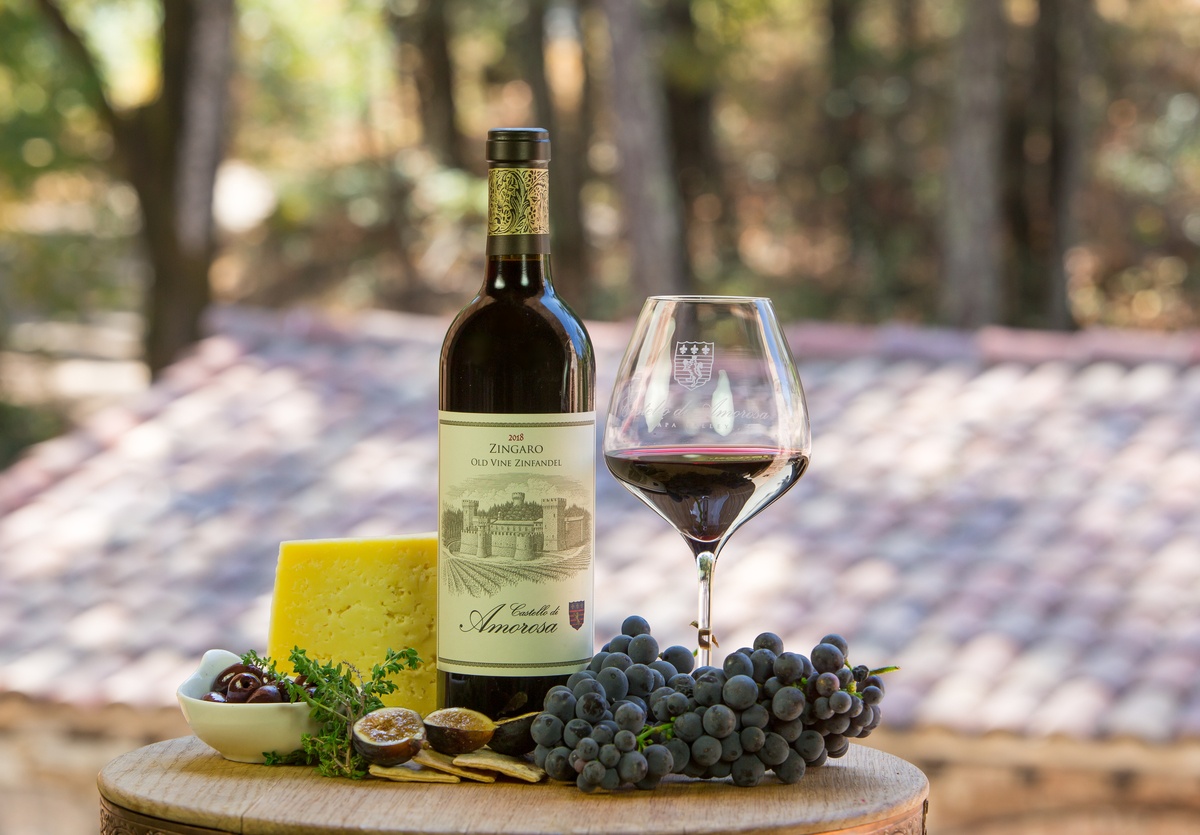
Wine & Cheese Pairings
Raise a glass to one of the best duos in history, Wine & Cheese. Many pairings that are considered classics, emerged from the centuries-old relationship between a region’s cuisine and their wines. This powerful duo remains the key to our heart and maybe some Castle doors. While enjoying our Castello wines, there are a few tried & true combinations that will standout.
There are many factors that go into the pairing of wine and cheese. The best pairings complement each other particularly well when considering texture, fat, acidity, and salt.
In addition to drying and concentrating the cheese, age introduces new flavors. Rind cheeses like Brie remain gooey and spreadable, but the cheese develops earthy notes after a few months of aging in the caves. Older cheeses like Gruyère acquire deep nutty flavors. Blue cheeses develop pungency from the mold in their veins. Washed-rind cheeses like Époisses develop a funky, flavor that you either love or hate.
Wines also run the spectrum from delicate to bold, and their depth and complexity can correlate with their age. Young wines are fresh and spirited, with lively aromas and bright flavors of fruits, flowers, citrus, herbs, or spice. Wines that have spent time in cask or bottle have had a chance to acquire more nuance. In addition to their primary fruit, they take on secondary notes of oak, toast, earth, oxidation, minerals, and more. Like cheeses, these wines tend to be more complex and savory than their younger counterparts.
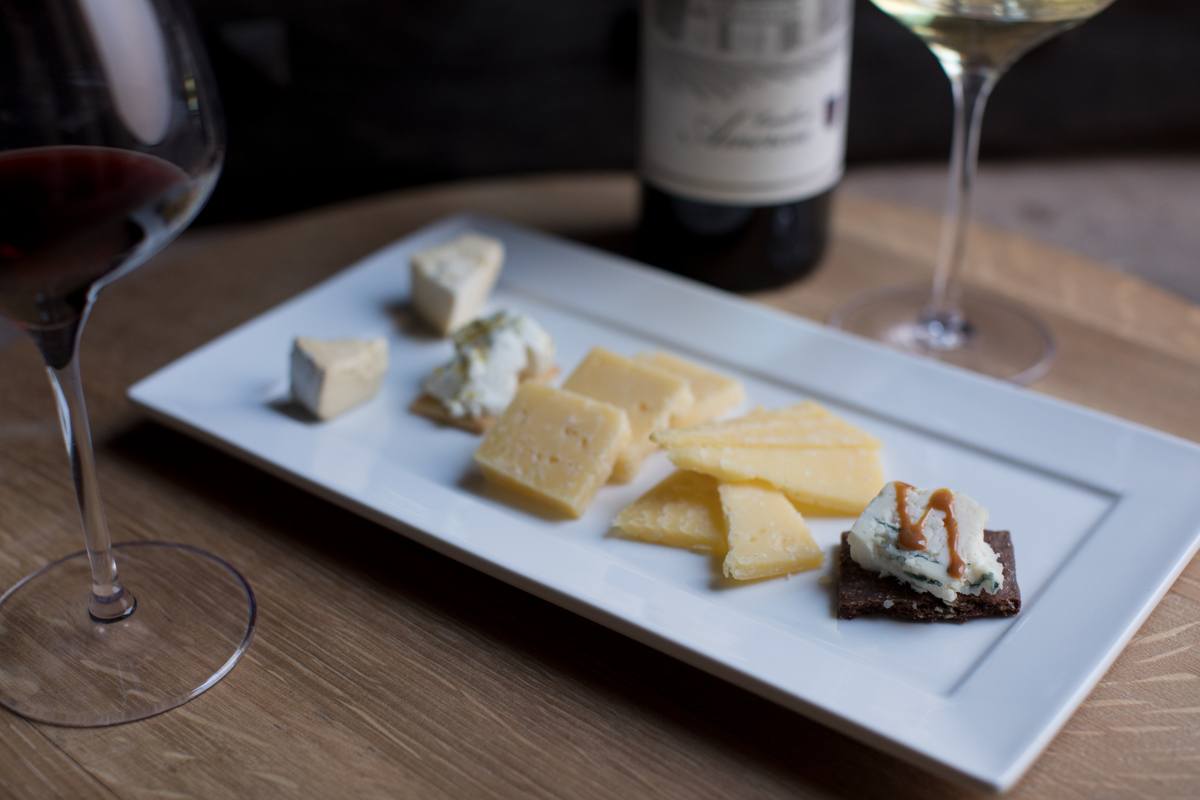
A Divine Pairing From The Gods
In a study at ChemoSens in France, researchers determined that cheese improved the perception of fruit aromas, reduced the duration of astringency of red wines, and heightened the taste of white wine. Cheese which is customarily high in fat, coats the mouth and blocks taste receptors to beverages. The acidity and sweetness of a well-paired wine can cut through this creamy barrier to create an excellent mouthfeel.
Cheeses vary in moisture content, fat content, texture and flavor. Wines also vary in acidity, sweetness, body, and structure. A few basic guidelines will bring you cheese & wine success.
The main concept behind pairings is that certain elements (such as texture and flavor) in both cheese and wine interact with each other, and thus finding the right combination of these elements will make the entire dining experience more enjoyable.
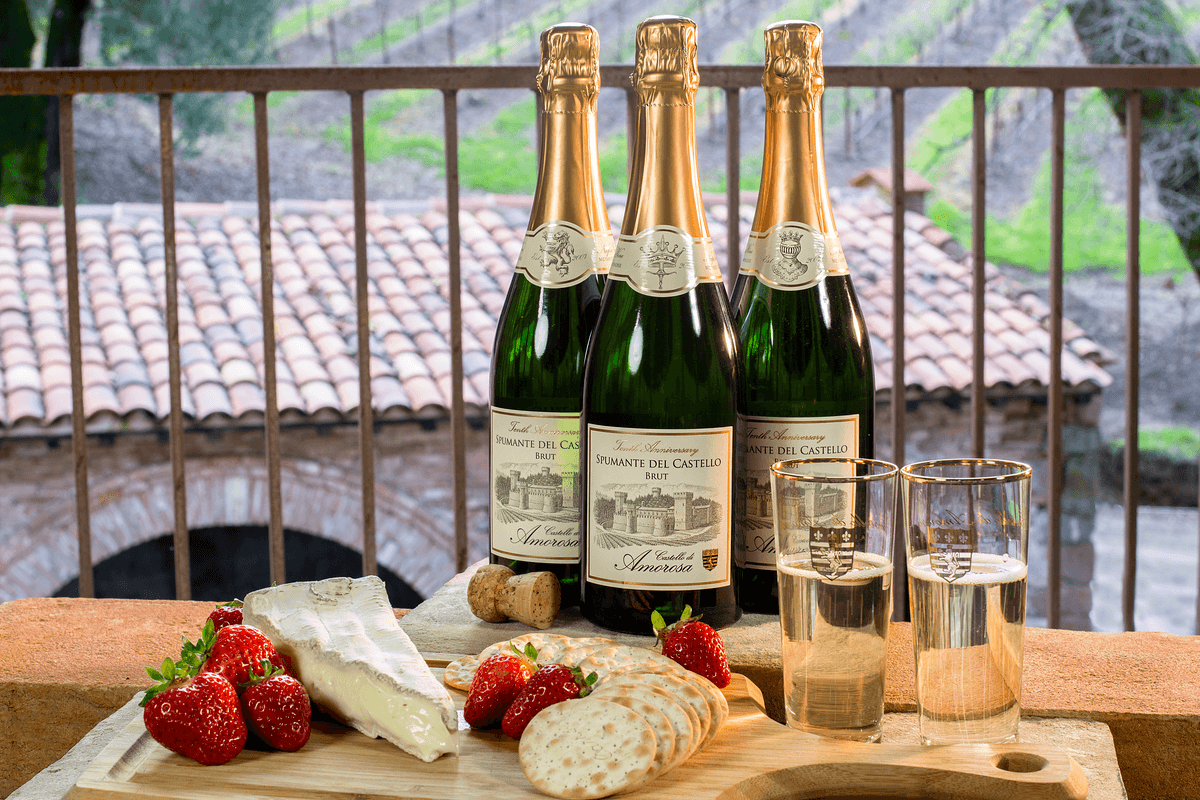
Rules of Cheese & Wine Pairing
Pair by flavor intensity. Consider the effect age has on the intensity of wine. We can see how young cheeses might partner best with sparkling crisp whites, dry rosés, and reds with good acidity. Older cheeses need wines with more body and complexity. The oldest cheeses, those that are the most rich and nutty, pair best with wines that have ample body and structure. Cheeses become bolder and more complex as they age, taking on concentrated flavors. If you have a 3 year aged cheddar, it’s going to have a richness to it that needs a wine with an equal amount of depth.
Pay Attention To Texture. Cheese changes drastically in texture, which is based on what type of milk, what style of cheese, and how long it has been aged for. Young, fresh, and rindless cheeses are soft, and when served at room-temperature can become gooey. Hard cheeses, on the other hand, need to be crumbled or cut.
Watch those tannins. Tannic rich red wines pair wonderfully with bold aged cheeses, tannins help bind to protein and fat. T same process makes tannic wines feel far too astringent with young cheeses; they tie up what little fat’s available, leaving you with a chalky and metallic aftertaste.
Salt loves sweet. Sweet wines balance the salty cheeses like Blue cheese, aged Gouda or Feta. The salt in the cheese increases the sweetness in the wine.
Cheese loves fruit and nuts. Fruits go very well with young cheeses like Brie. Sweet dried fruits are wonderful with salty cheeses like Blue, Buttery, bitter nuts are tasty with rich Cheddar.
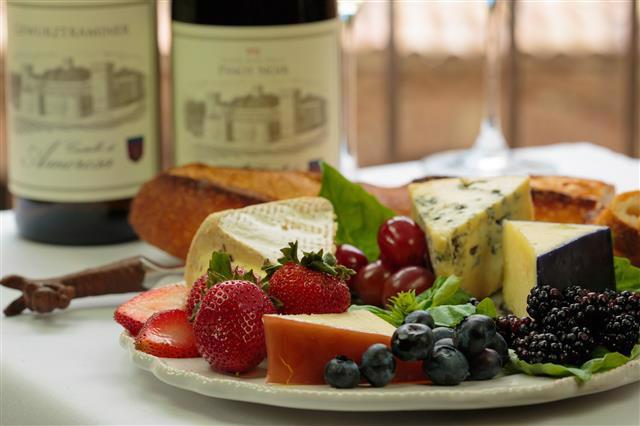
Castello Wine & Cheese Pairings Guide
Explore our favorite Castello wine & cheese pairings. Try these basic wine and cheese combinations at home.
- Cheddar – Cabernet Sauvignon
- Cotswald – Merlot
- Pecorino Toscano – Sangiovese
- Grueyere – Pinot Noir
- Brie – Spumante del Castello
- La Tur – Gewürztraminer
- Goat Cheese – Pinot Grigio
- Goat Cheese – Pinot Bianco
- Fiore Sardo – Vermentino
- Pepper Jack – Gioia
- Blue Cheese – Il Passito
- Gorgonzola – Moscato
Kick it up a notch. Add these elements to elevate a cheese pairing to a sweet and salty palate sensation. These items also make a great addition to any charcuterie board.
- Nuts – Buttery, bitter nuts are tasty with rich cheeses like Cheddar.
- Fruits – Fruits go very well with young cheeses like Brie. Sweet dried fruits are wonderful with salty cheeses like Blue cheese.
- Balsamic Reduction – Serve over hard cheeses or a Caprese Salad. A reduction of balsamic will elevate a cheese pairing to a sweet and salty palate sensation.
- Honey – This is an elegant addition to any wine & cheese board. Honey adds a fair bit of complexity to a long list of cheeses. The key to pairing honey and cheese is to pair a light honey with a mild cheese and more rounded flavored honey with a more intense cheese. Among the best honey & cheese pairings are Provolone cheese and Cabernet Sauvignon. Honey & blue cheese create a contrast that could create a fan of even the harshest blue cheese critics. Goat cheeses, Gorgonzola, Pecorino Romano, Brie all go great with honey.
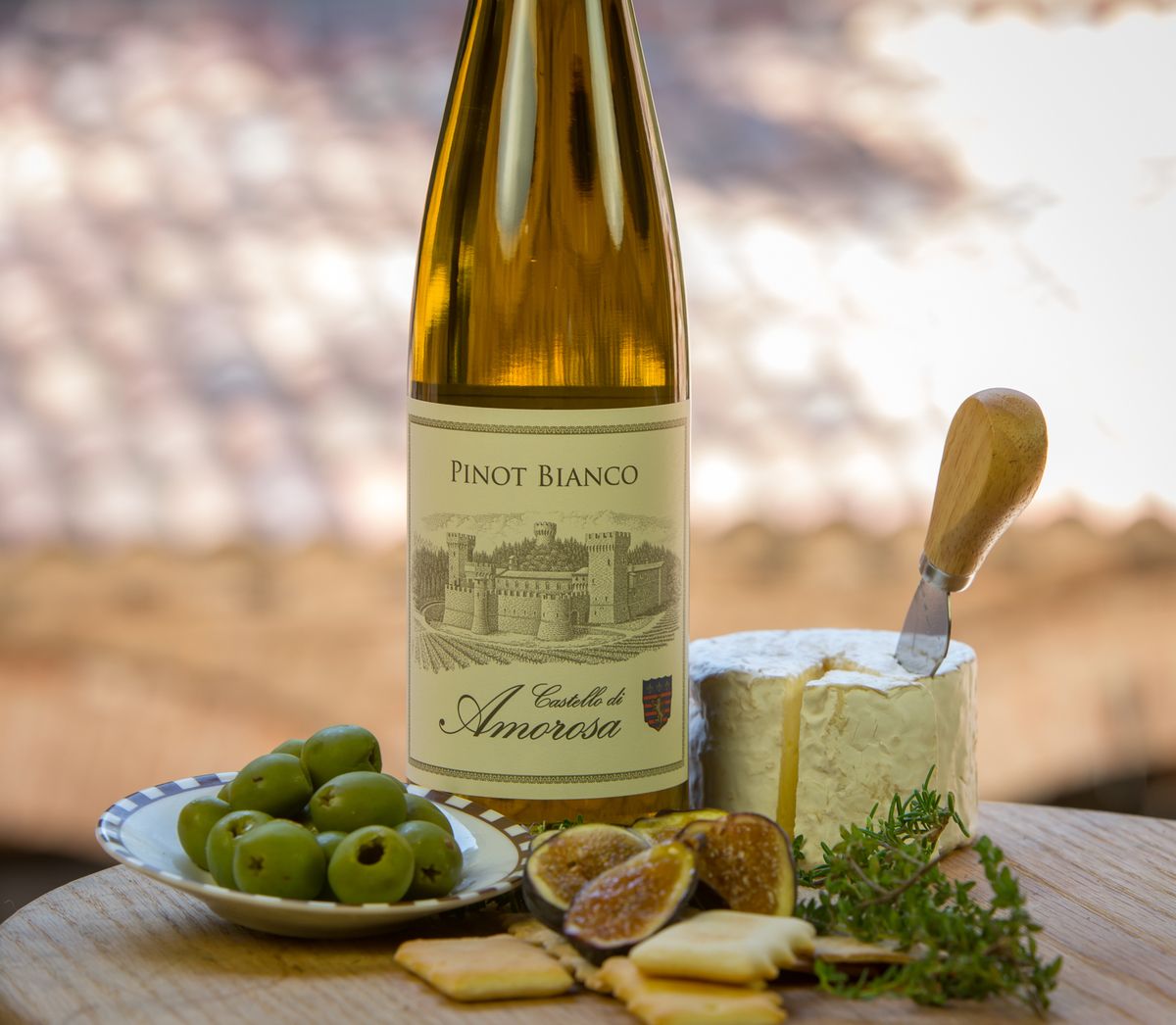
Cabernet Sauvignon & Cheddar
Americas most popular wine has a bevy of cheeses that work well. Complex flavors often stand up the best to sophisticated profile of Cabernet Sauvignon. Your best cheese for this wine is aged Cheddar which will stand up to the strong cheddar with its lingering after taste.
Why it works: These semi-hard/hard style cheeses help to elevate the dark fruit flavors of the wine. However try to remember the bigger the oak in the wine, the fewer the cheese choices you have.
Also try: Aged Gouda, Comté
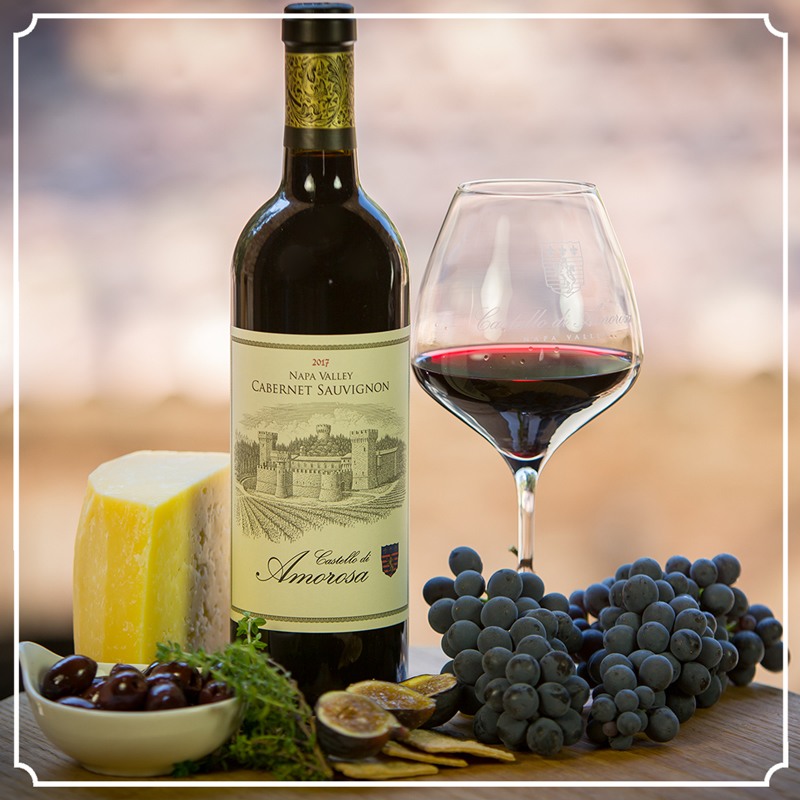
Merlot & Cotswald
This is where rich fatty cheeses can play, cheddar or my fave, Cotswald which I lovingly call Baked potato cheese as it is creamy, buttery, and full-flavored like cheddar. The cheese has chives and onions so it is rich & savory. Perfect for the tannins in merlot.” – Castle Sommelier Mary Davidek
Why it works: Cotswald is a creamy Double Gloucester cheese laced with onion and chives. The rich creamy Cotswald plays well with the tannic Merlot.
Also try: Asiago, Brick, Muenster, Gouda and Colby
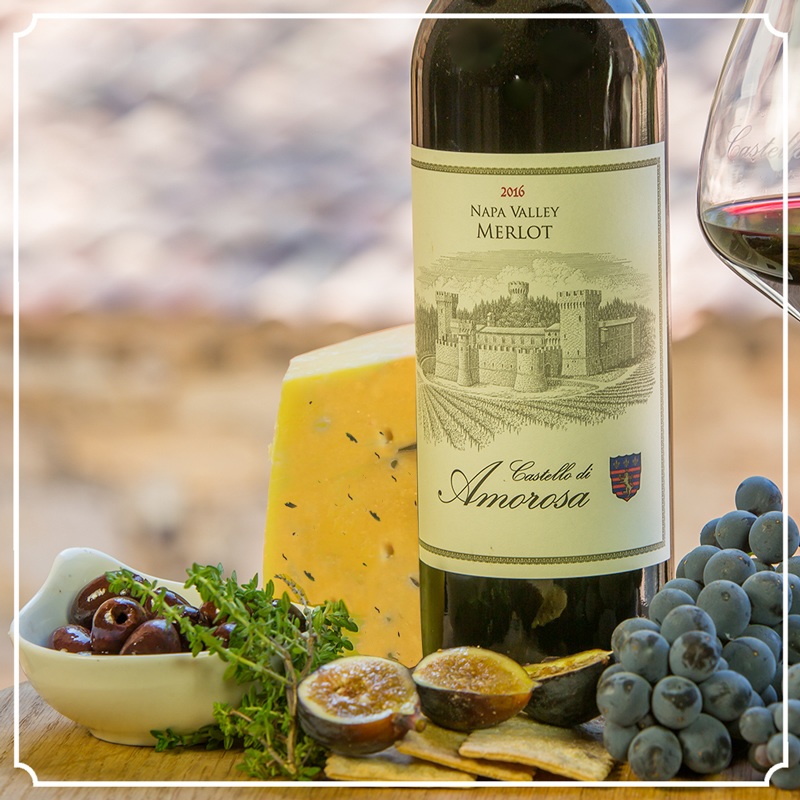
Sangiovese & Pecorino
Both eternally popular in Italy, the pair have been friends for well over 100 years. The beloved Italian grape brings bright cherry, earthy tomato, and savory garden herb to the table while the aged Parmigiano-Reggiano brings a rich complex nuttiness. Sangiovese also pairs well with the very popular Parmesan and Mozzarella.
Why it works: Sangiovese is known for its full body, acidity, and bold character. The complex character of a Pecorino brings a rich nuttiness with the vibrant acidity of Sangiovese.
Also try: Parmigiano, Grana padan, Fontina, Mozzarella
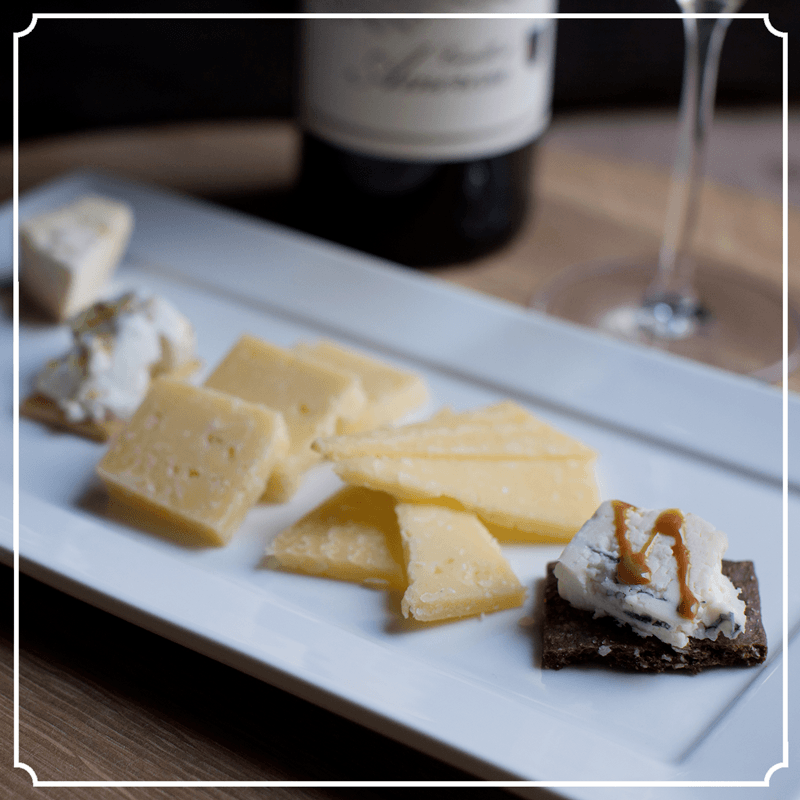
Pinot Noir & Grueyere
Pinot Noir works well with most soft cheeses but the nutty flavors of the Grueyere play a great contrast to the dark fruits in Pinot Noir. The subtle acidity and polished tannins further the complex relationship in the pairing.
Why it works: The berry fruit in the rich red wine complements the flavor of this medium-firm cheese without overpowering it. They both have just enough aroma and complexity to make things interesting.
Also try: Comté, Emmenthal, Goud
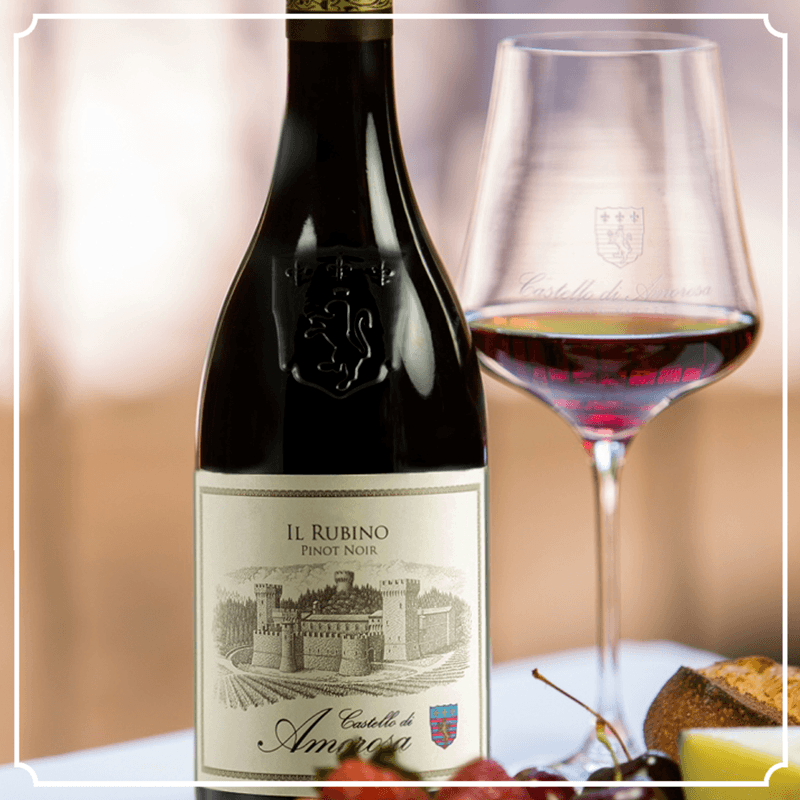
Spumante & Brie Cheese
Triple-cream soft cheeses (brie, Camembert) are the perfect match. But there are more great cheese pairings with Champagne and other sparkling wines.
Why it works: The sparkling wines crisp acidity plays well with the complex buttery and earthy flavors of Brie. The sparkling notes help temper the thick creamy texture and leave a refreshed mouthfeel.
Also try: Camembert, Roquefort
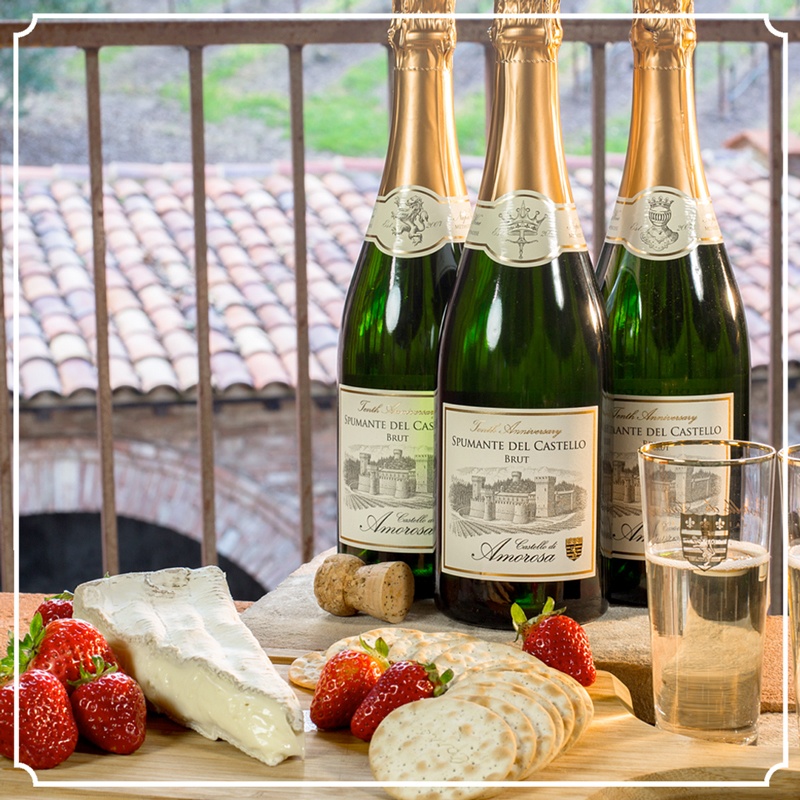
Gewürztraminer & La Tur
La Tur is an Italian triple cream from the Piedmont region of Italy and is made from an equal mixture of cow, sheep and goat milk. Typically with double and triple creams a bright white wine like dry Gewurztraminer can work best. Typically salty cheeses and Gewürztraminer are not the best together, so opt instead for mild cow’s milk cheeses.
Honey can be added to this duo for an extra flavor sensation.
Why it works: The heavy triple cream can be easily cut through by the bright dry Gewürztraminer, making for a refreshed palate and mouthfeel.
Also try: Muenster, Gruyère, Roquefort, Capocollo, Stilton, Gorgonzola, Gouda, Boursin, Swiss cheese, Pepper Jack
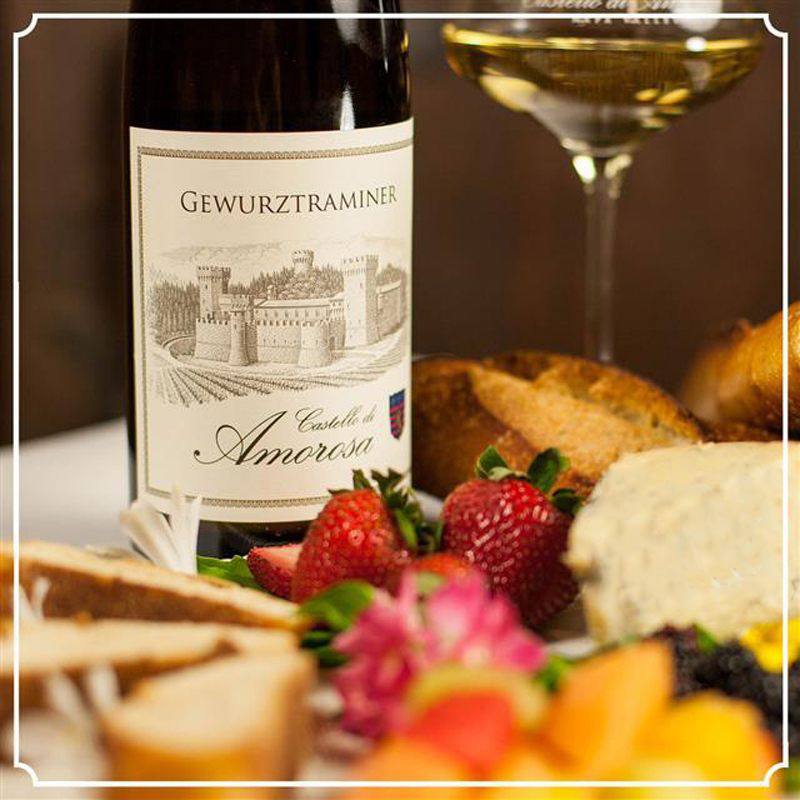
Pinot Bianco & Goat Cheese
“The tang sweetness combined with a creamy goat cheese like Sonoma chevre by Laura Chenel or Capricho de Cabra from Spain, drizzle a little of our Basil grape seed oil on it and total Goat love with Pinot Bianco.” – Castle Sommelier Mary Davidek
Why it works: The crisp acidity of Pinot Bianco is the perfect compliment to the creamy fatty notes of Goat Cheese.
Also try: Feta, Baby Swiss, Gouda, Majorero, Mahon, Dry Jack
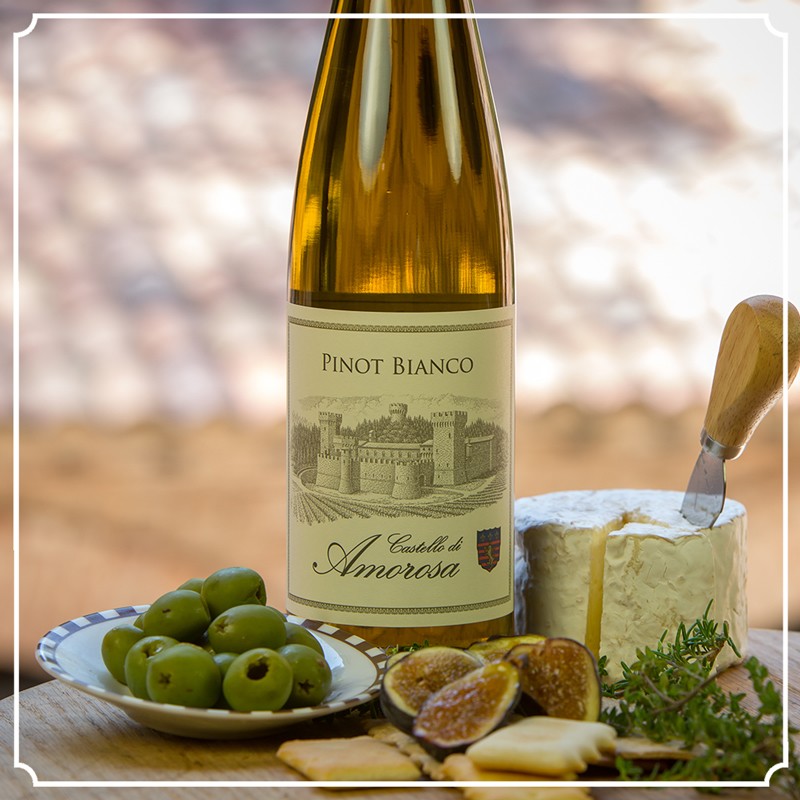
Pinot Grigio & Goat Cheese
Because of its tangy and salty flavor, it pairs well with the crisp fruitiness of Pinot Grigio.
Why it works: The crisp acidity of Pinot Grigio is the perfect compliment to the creamy fatty notes of Goat Cheese.
Also try: Fresh Mozzarella, Mild Cheddars, Brie, Baby Swiss
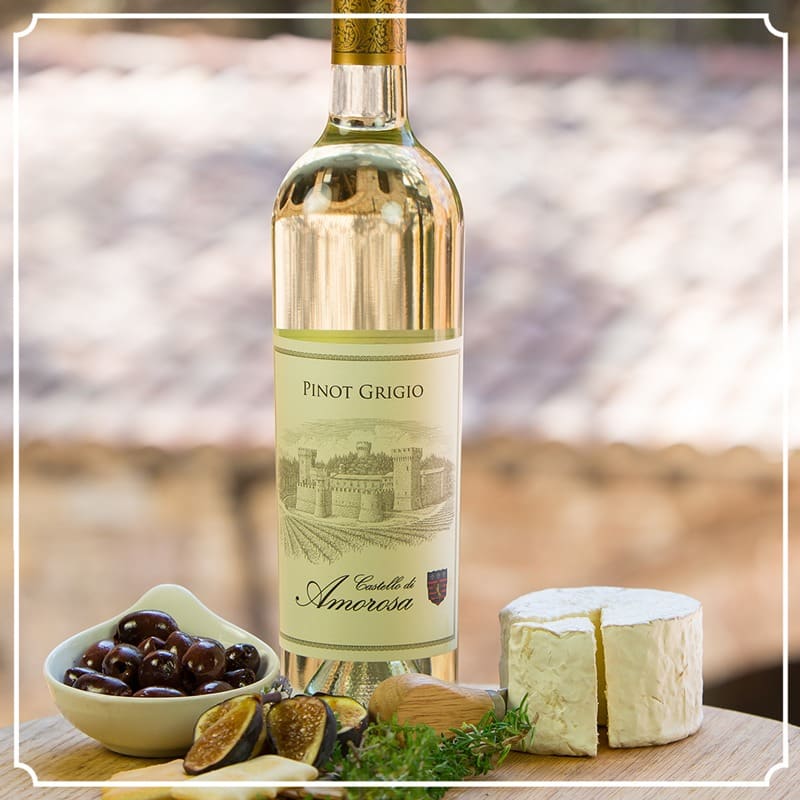
Vermentino & Fiore Sardo
Believed to date back to the Bronze Age, Fiore Sardo hails from the second largest island in the Mediterranean Sea, Sardinia, Italy. A lighter, crisper white wine like Vermentino, tends to be refreshing and fruity which works well with the semi-hard, smoked cheese.
When drinking Vermentino you should always avoid overly pungent fromage and focus on fresh cheeses.
Why it works: This is one of those hyper-regional parings. Both Vermentino and pecorino come from the small island of Sardegna, Italy. Engulfed by the salty sea, both the grape vines and the scrubby bush the sheep feed on take on similar light, savory, citrus, and salty characteristics.
Also try: Ricotta, Buffalo Mozzarella, Goat Cheese, Pecorino, Feta
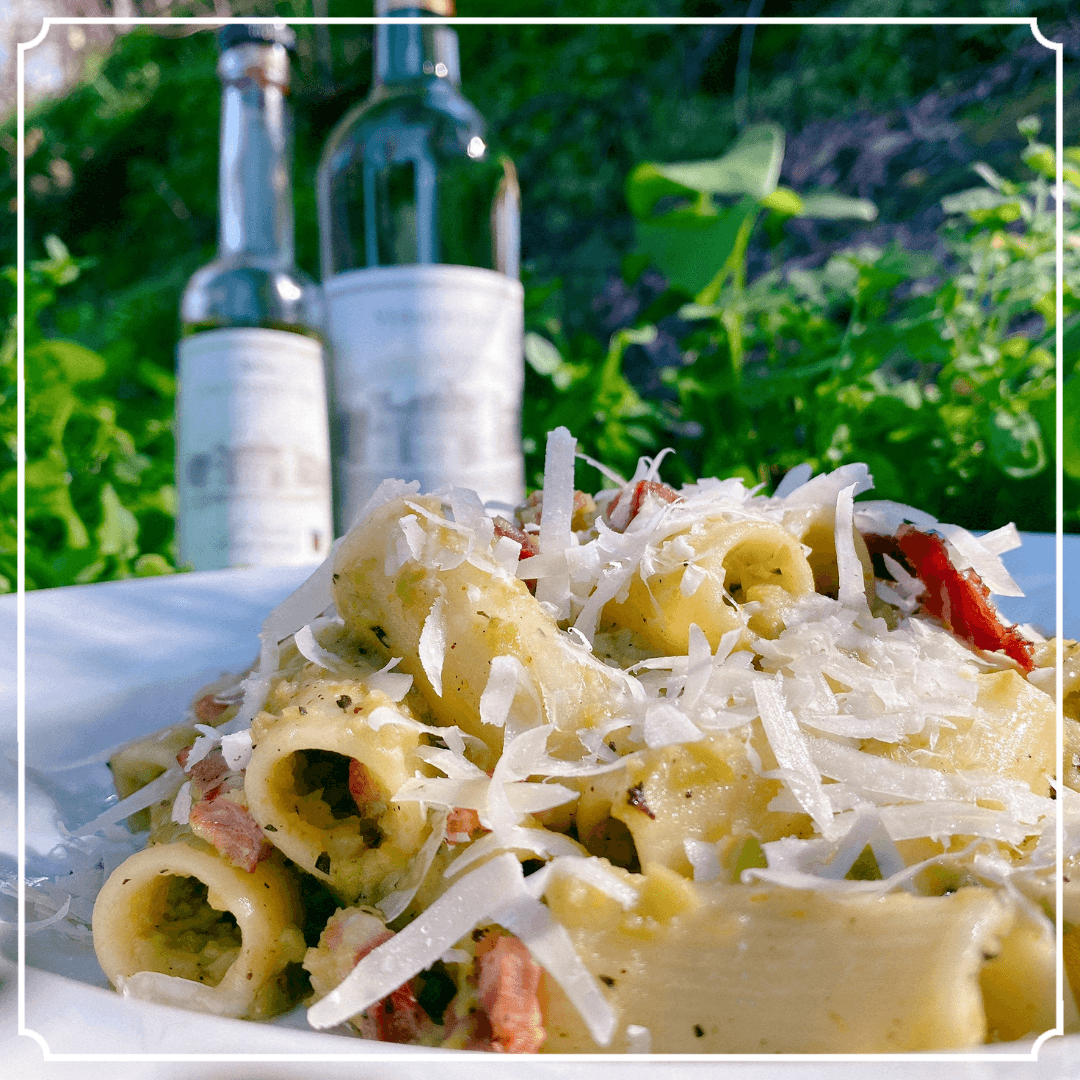
Gioia & Pepper Jack
Dry fruit rosé can handle a little spice and heat. This sangiovese based rosé is no different boasting bright berry and melon flavors. Rosé boasts a versatility that allows it to work well with several different cheeses.
Why it works: The bright fruit can help graze through the spicy notes of Pepper Jack.
Also try: Comté, Monterey Jack
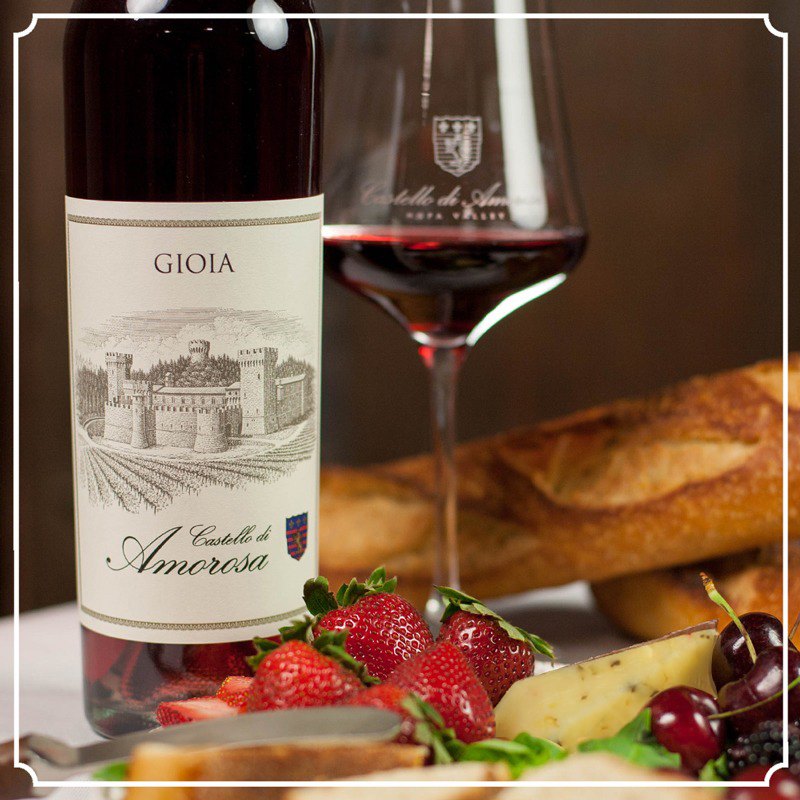
Il Passito (Sauterne Style) & Blue Cheese
Big salty cheese pair wonderfully with the sweet flavors from the sauterne. The sweetness of Il Passito is an excellent foil for the sharp savory flavors of a number of famous and strongly-flavored cheeses.
Why it works: Balance plays a big role in making these combinations so special.
Also try: Blue Cheese (Stilton or Roquefort), Port Salut, Red Square, Triple Cream Brie, Epoisse
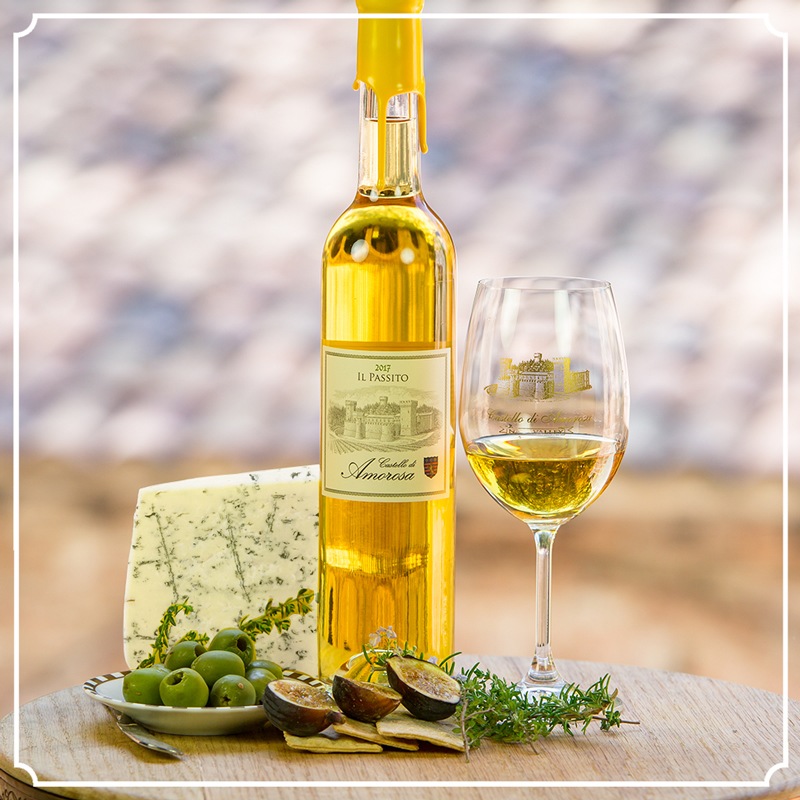
Moscato & Gorgonzola
Moscato is a sweet, fruity wine with hints of candied peach, orange blossom, and honeydew melon. Gorgonzola is a blue cheese that ranges from creamy and soft to firm and crumbly. It’s full-flavored with earthy undertones of saltiness. The age of Gorgonzola determines the overall creaminesss. This wine & cheese pairing is also tremendous with the addition of honey.
Why it works: The sweet notes of the Moscato is balanced perfectly with the salty flavors from Gorgonzola.
Also try: Munster
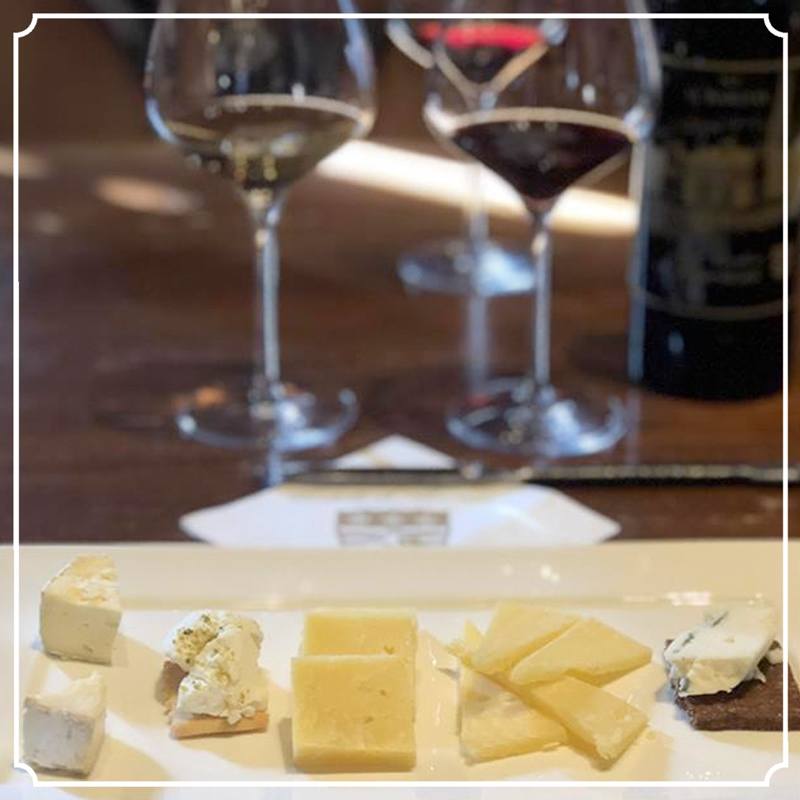
Highest Rated Wines

Highest Rated Wines Ever: Napa Valley
Over 15 years in the Napa Valley, we have received a bevy of high scores from highly acclaimed writers and reviewers. Here are the 10 highest scoring wines in Castle history. While our Cabernet Sauvignon dominates the top spots, we included a few sweet & white wines in this top 10. Each wine is a tremendous representation of not only the outstanding vintage year, but also each unique vineyard. It is a haunted game in which each vintage is measured against the ghosts that have gone before it.
These highly collectable wines have tremendous aging potential, you can explore more of our wine accolades here or you can shop top scoring wines here. A big thank you to the reviewers and staff of Wine Enthusiast Magazine, Wine Spectator Magazine, James Suckling, Vinous Media, Wine Review Online & Jeb Dunnuck.
1) 2014 Morisoli-Borges, Cabernet Sauvignon, Napa Valley – 98 Points
Sustainably farmed by the 4th generation, much of the vineyard was planted to Cabernet Sauvignon in the late 1980s with a smaller area redeveloped in 2006. This wine comes from a blend of these “old” and “young” blocks, and it expresses the Rutherford appellation’s famous “dust” character, with its unique soft, silky tannins. A truly outstanding vintage year for the Rutherford bench.
98 Points – Jeb Dunnuck
“The 2014 Cabernet Sauvignon Morisoli-Borges Vineyard comes from a site located in Rutherford, on the valley floor. It too is inky colored and offers a sensational bouquet of crème de cassis, blueberries, graphite/lead pencil shavings, tons of crushed rocks and hints of violets. Layered, gorgeously pure, concentrated and always elegant and silky, with no sense of heaviness, enjoy this blockbuster anytime over the coming 3-4 decades. (Expected Maturity: 2018–2058)”
Tasting Notes: Crème de cassis, blueberries are complemented by pencil shaving and hints of violets.
Vintage Notes: The 2014 Napa Valley wine grape harvest was a year of exceptional quality. The winter was one of the driest on record in Napa Valley, with approximately half of the normal rainfall. However, rains in late February and early March provided water to the vines just as they were beginning bud break. The spring was warm and berry sizes were smaller and with more concentrated flavors, and the overal quality, depth of flavor, and excellent balance and maturity in the grapes bodes well for the vintage. – Brooks Painter, Director of Winemaking
2) 2016 Melanson, Cabernet Sauvignon, Napa Valley – 97 Points
This 10.5 acre vineyard sit in peaceful isolation on a boulder-strewn hillside with remarkable views of Lake Hennessey and the Valley floor below. Embracing the rugged terroir, they are committed to working with the assets Mother Nature has given them: rich Sobrante Loam soils loaded with volcanic rock, elevations averaging 1,200 feet and distinct southern and western exposures. The gift of elevation places the vineyards above the fog line and allows them to receive maximum sun exposure throughout the day providing even ripening. The resulting fruit shows a higher skin to fruit ratio, than its land bound counterparts.
97 Points – The Wine Advocate
“Made of 100% Cabernet Sauvingon, the 2016 Cabernet Sauvignon Melanson Vineyard has a deep purple-black color and stunning perfume of candied violets, chocolate-covered cherries, potpourri and menthol over a warm cassis and crushed black plums core plus a waft of garrigue. Medium to full-bodied, the palate is built like a brick house, with a firm, grainy texture and tons of freshness lifting the densely packed fruit to a good long finish. Drink 2020 – 2038.”
Tasting Notes: Highlighted by flavors of dark cherry, cassis, and plums complemented by chocolate.
Vintage Notes: Following the very small 2015 harvest, it was heartening to see the vines recover and bounce back to produce not only extremely high quality fruit but also some bounty in 2016! Harvest was earlier than expected, and we observed optimum flavor and phenolic development progress as we harvested. Across the board, acids are firm and pH is slightly lower, so the wines should be well-structured with very good aging potential. This is an exciting vintage with a lot to like! – Brooks Painter, Director of Winemaking
3) 2018 Sinalunga, Cabernet Sauvignon, Napa Valley – 97 Points
Dario Sattui’s love for the Sinalunga area prompted him to explore its back roads, medieval structures and outlying villages. Without this intense passion for the monastery and the Sinalunga area, it is likely the Castle would never have been built. Thirty years later, this same passion has inspired us to craft an exceptional wine, in very limited quantities, to be honored with the name Sinalunga. This Cabernet epitomizes the love, passion, quality, dedication, and attention to detail that went into the making of Castello di Amorosa.
97 Points – Jeb Dunnuck
“Lots of cassis, graphite, lead pencil, and scorched earth notes emerge from the 2018 Cabernet Sauvignon Sinalunga, another powerful, concentrated 2018 from Castello di Amorosa. One of the more structured, tannic wines in the lineup, it has full-bodied richness, a wonderfully pure, layered texture, and terrific balance. Bottles need a good 4-6 years of bottle age, but it should evolve for 30 years or more.”
Tasting Notes: Plush aromas of cassis, dark cherry, and pomegranate complemented by graphite and led pencil.
Vintage Notes: Winter provided a record-breaking rainfall – a welcome end to the 4-years of drought. Bloom and fruit set in May occurred under ideal conditions. Summer was warm but the vines weathered the heat well and maturity moved along at a steady pace. A short but intense heat wave during the first part of September brought brix levels up dramatically and winemakers waited for the pH, acids, flavor and color development in the grapes to catch up to sugar accumulation. The 2018 wine quality shows a lot of bright acidity and fresh varietal aromas in the white wines, and deep color, sweet fruit flavors. Looking like it will be another classic year! – Brooks Painter, Director of Winemaking
4) 2016 Don Thomas, Cabernet Sauvignon, Napa Valley – 96 Points
This 6 acre vineyard, planted exclusively to Cabernet Sauvignon, is nestled in the rolling hills that define the western border of the Rutherford AVA in Napa Valley. Located at the valley’s widest point, Rutherford receives more sunlight during the day than other parts of the valley. This, combined with a wide variance of daytime to nighttime temperatures (average fluctuation of 12 degrees in the summer months) allows the fruit to ripen at a steady pace, and helps to make the Rutherford AVA the most famous of Napa Valley’s nested appellations for growing Cabernet Sauvignon. Our Don Thomas is among our most rare releases, in fact we have never released it online.
96 Points – The Wine Advocate
“Composed of 100% Cabernet Sauvignon, the 2016 Cabernet Sauvignon Don Thomas Vineyard is deep purple-black in color and features vibrant notes of crushed wild blueberries, black raspberries and red and black currants with wafts of rose hips, raspberry leaves, unsmoked cigars and pencil shavings. Medium to full-bodied, the palate is tautly structured with ripe, grainy tannins and beautiful freshness framing the red and black fruit layers, finishing long and mineral laced. Drink 2020 – 2039.”
Tasting Notes: Hints of crushed blueberries, black raspberry, and pomegranate complemented by rose and cigars.
Vintage Notes: Harvest was earlier than expected, and we observed optimum flavor and phenolic development progress as we harvested. Across the board, acids are firm and pH is slightly lower, so the wines should be well-structured with very good aging potential. This is an exciting vintage with a lot to like! – Brooks Painter, Director of Winemaking
5) 2017 Il Barone, Cabernet Sauvignon, Napa Valley – 96 Points
Our highest scoring Il Barone that has been released. Our pride and joy is sourced from the top vineyards in Napa Valley. Highlighted by powerful structured tannins. An exceptional Napa Valley Cabernet Sauvignon with excellent long-term aging potential. This reserve Cabernet Sauvignon routinely scores 93+ Points, and has shown a great consistency from year to year.
96 Points – Jeb Dunnuck
“The 2017 Cabernet Sauvignon Il Barone (there’s 5% Merlot in the blend) is a selection geared to be a rich, powerful wine and it succeeds admirably, offering full-bodied richness and depth, awesome tannin quality, no hard edges, and a complex notes of black and blue fruits, Asian spices, chocolate, and earthy, forest floor nuances. It’s another brilliant wine in this lineup.”
Tasting Notes: Hints of dark cherry, cassis, and pomegranate highlighted by asian spices and chocolate.
Vintage Notes: Winter provided a record-breaking rainfall – a welcome end to the 4-years of drought. Bloom and fruit set in May occurred under ideal conditions. Summer was warm but the vines weathered the heat well and maturity moved along at a steady pace. A short but intense heat wave during the first part of September brought brix levels up dramatically and winemakers waited for the pH, acids, flavor and color development in the grapes to catch up to sugar accumulation. The 2017 wine quality shows a lot of bright acidity and fresh varietal aromas in the white wines, and deep color, sweet fruit flavors. Looking like it will be another classic year! – Brooks Painter, Director of Winemaking
6) 2019 Late Harvest Gewürztraminer, Anderson Valley – 95 Points
Our highest scoring sweet wine ever is a succulent and deliciously sweet white wine loaded with aroma and flavor, made in a “Noble Rot” dessert, or very sweet, style. Typically harvested at nearly 32 Brix or more with residual sugar levels close to 13%, this succulent dessert wine is a perennial favorite. A regal dessert wine made from overripe grapes which develop Botrytis cincerea, or “Noble Rot”, shriveling the skins and enhancing sugar, acid and flavor intensity. The resulting harvest in late autumn is vastly diminished in yield, resulting in more concentration and flavor. Made in the style of some of the world’s greatest dessert wines, such as Sauternes and the “dried grape” white wines of Sicily such as “Passito di Pantelleria”. Ideal with after dinner desserts of chocolate torte, crème brulee or baked fruit with an artisanal cheese selection.
95 Points – Wine Enthusiast, Cellar Selection
“Dripping with honey, apricot and poached pear flavors, this luscious and extremely sweet wine coats the palate and lingers for minutes on the finish. It’s a delicious, low-alcohol indulgence that is made from late-harvest grapes shriveled on the vine. Best through 2030. Cellar Selection”
Tasting Notes: Deep straw in color, the wine displays hints of honey, apricot and pear.
Vintage Notes: Bloom and fruit set in May occurred under ideal conditions. Summer was warm but the vines weathered the heat well and maturity moved along at a steady pace. A short but intense heat wave during the first part of September brought brix levels up dramatically and winemakers waited for the pH, acids, flavor and color development in the grapes to catch up to sugar accumulation. – Brooks Painter, Director of Winemaking
7) 2016 Il Barone, Cabernet Sauvignon, Napa Valley – 95 Points
Another great hit in our long line of Il Barone vintages. A blend of the Castello’s top high-end Cabernet Sauvignon vineyards from the best growing regions of Napa Valley. The majority of the fruit in this vintage came from the Rutherford AVA, a region famed for producing beautifully structured and complex Cabernet Sauvignon.
95 Points – Wine Advocate
“A blend of 87% Cabernet Sauvignon with small splashes of Merlot, Petit Verdot, and Malbec, the 2016 Cabernet Sauvignon Il Barone is deep purple-black in color and has quite an earthy/savory nose to begin, revealing notions of black truffles, char-grilled meats, black olives and cumin seed over a core of crème de cassis and stewed plums. Full-bodied, concentrated, and packed with black fruit and savory layers, it has a rock-solid, grainy frame and just enough freshness to lift the long finish. Drink 2020 – 2037.”
Tasting Notes: Plush aromas of dark cherry, black raspberry, and pomegranate complemented by bittersweet chocolate and nutmeg.
Vintage Notes: From the outstanding vintage year of 2016. Following the very small 2015 harvest, it was heartening to see the vines recover and bounce back to produce not only extremely high quality fruit but also some bounty in 2016! Harvest was earlier than expected, and we observed optimum flavor and phenolic development progress as we harvested. Across the board, acids are firm and pH is slightly lower, so the wines should be well-structured with very good aging potential. This is an exciting vintage with a lot to like! – Brooks Painter, Director of Winemaking
8) 2016 Rapp Ranch, Napa Valley – 95 Points
Our initial vintage of Rapp Ranch Cabernet Sauvignon from the Coombsville AVA in Napa Valley. The wine is inky purple in color, with an imposing structure that frames a mouthful of savory spices, blackberries, and wild herbs. Located in the heart of the Coombsville AVA, Rapp Ranch has long been established as a premier horse ranch in the rural countryside of southern Napa Valley. The defining characteristics of Coombsville, are the long, cool growing seasons that reward patient winemakers with intensely concentrated and complex wines.
95 Points, James Suckling
“A very deep and intense wine with a gorgeous core of ripe fruit and velvety tannins and a beautiful finish. Full-bodied and flavorful. Energetic finish. Reserved. Better in 2020.”
Tasting Notes: Savory spices, blackberries, and wild herbs.
Vintage Notes: From the outstanding vintage year of 2016. Following the very small 2015 harvest, it was heartening to see the vines recover and bounce back to produce not only extremely high quality fruit but also some bounty in 2016! Harvest was earlier than expected, and we observed optimum flavor and phenolic development progress as we harvested. Across the board, acids are firm and pH is slightly lower, so the wines should be well-structured with very good aging potential. This is an exciting vintage with a lot to like! – Brooks Painter, Director of Winemaking
9) 2010 Il Passito, Late Harvest, Napa Valley – 94 Points
This rare sauterne style wine was grown in the Yountville AVA of Napa Valley. 2010 marked one of the best vintages for late harvest varietals. A delicate and light honey sweet dessert wine, made in the fine sauterne style. At the time of scoring, it was the highest scoring sweet wine in Castle history.
94 Points, Editor’s Choice, Wine Enthusiast Magazine
“Made from Sémillon and Sauvignon Blanc, this wine is luxurious and sweet, while maintaining great balance to keep from being too unctuous. It has a brilliant deep-gold color, generous aromas like toasted peanuts and marmalade, and flavors that are honeyed and floral. It feels nicely viscous, coating the sides of the mouth and helping the flavors linger for long moments on the finish.”
Tasting Notes: The wine displays bright aromas of honey, vanilla bean, and citrus zest with rich butterscotch-caramel undertones.
Vintage Notes: The 2010 growing season in Napa Valley began cool and wet. Higher acidities and fresh fruit tones, a consequence of the unusually cool season, make the vintage especially compelling. It was ideal conditions for late harvest wines.
10) 2017 Morning Dew Ranch, Pinot Noir, Anderson Valley – 94 Points
Named a top 5 Pinot Noir vineyard by Wine Enthusiast Magazine. This Castello Estate vineyard was purchased in 2015. The 12 acre vineyard, located just west of the town of Philo in Anderson Valley, is in a very cool microclimate and divided into 9 blocks of Pinot Noir planted with DRC, 115, 777, Rochioli, 23, and 828 clones. Located in a very cool microclimate in the steep hillsides overlooking Anderson Valley. It will be sustainably farmed by our Vineyard Team and Manager, David Bejar.
94 Points, Editor’s Choice Jim Gordon, Wine Enthusiast Magazine
“Tempting fruit flavors run deep and long in this full-bodied, focused and concentrated wine made from a vineyard established by Burt Williams of Williams Selyem. Black cherry and rhubarb ring clear as a bell while subtle clove, ginger and cinnamon add complexity. A mouth-filling texture and lingering finish complete the picture.”
Tasting Notes: Rhubarb, black cherry, and clove are complemented by a touch of cinnamon.
Vintage Notes: Winter provided a record-breaking rainfall – a welcome end to the 4-years of drought. Bloom and fruit set in May occurred under ideal conditions. Summer was warm but the vines weathered the heat well and maturity moved along at a steady pace. A short but intense heat wave during the first part of September brought brix levels up dramatically and winemakers waited for the pH, acids, flavor and color development in the grapes to catch up to sugar accumulation. The 2017 wine quality shows a lot of bright acidity and fresh varietal aromas in the white wines, and deep color, sweet fruit flavors. Looking like it will be another classic year! – Brooks Painter, Director of Winemaking
Bonus: 2019 Barbera, Sierra Foothills – 93 Points
Barbera is the third most planted red grape in Italy, where winemakers have relied on it since the 13th century to produce robust wines that age beautifully. Very popular among our red varietals, this wine has been known to sell out fast.
93 Points, Editor’s Choice – Wine Enthusiast Magazine
“Review Coming Soon.”
Tasting Notes: Blueberry, and pomegranate are complemented by hints of toasted sage.
Vintage Notes: Bloom and fruit set in May occurred under ideal conditions. Summer was warm but the vines weathered the heat well and maturity moved along at a steady pace. A short but intense heat wave during the first part of September brought brix levels up dramatically and winemakers waited for the pH, acids, flavor and color development in the grapes to catch up to sugar accumulation. – Brooks Painter, Director of Winemaking
Bonus: 2017 Chardonnay Reserve, Napa Valley – Contest Winner
Our reserve Chardonnay is made from the best vineyards in the southern end of Napa Valley. Several of our past Reserve Chardonnay vintages have scored 90+ points. This 2017 vintage may have been the best, taking home the SF Chronicle title for white wine.
Winner SF Chronicle Competition & 93 Points, Editor’s Choice – Wine Enthusiast Magazine
Our 2017 Reserve Chardonnay was named the White Sweepstakes Winner in the 2019 San Francisco Chronicle Wine Competition, which is the largest competition of wines from across the United States, Canada, and Mexico. Over 64 professional wine judges evaluated over 6,800 wines from 1,132 wineries. Bob Fraser, Executive Director of the competition, elaborated on this achievement, stating “along with the Red Sweepstakes, the White Sweepstakes is very difficult to attain for a winery because it is competing against over 2,500 other outstanding white wines from a multitude of viticultural areas in North America.
Tasting Notes: Lush notes of baked apple, ripe pear, fall spices, and toasted almond.
Vintage Notes: Winter provided a record-breaking rainfall – a welcome end to the 4-years of drought. Bloom and fruit set in May occurred under ideal conditions. Summer was warm but the vines weathered the heat well and maturity moved along at a steady pace. A short but intense heat wave during the first part of September brought brix levels up dramatically and winemakers waited for the pH, acids, flavor and color development in the grapes to catch up to sugar accumulation. The 2017 wine quality shows a lot of bright acidity and fresh varietal aromas in the white wines, and deep color, sweet fruit flavors. Looking like it will be another classic year! – Brooks Painter, Director of Winemaking
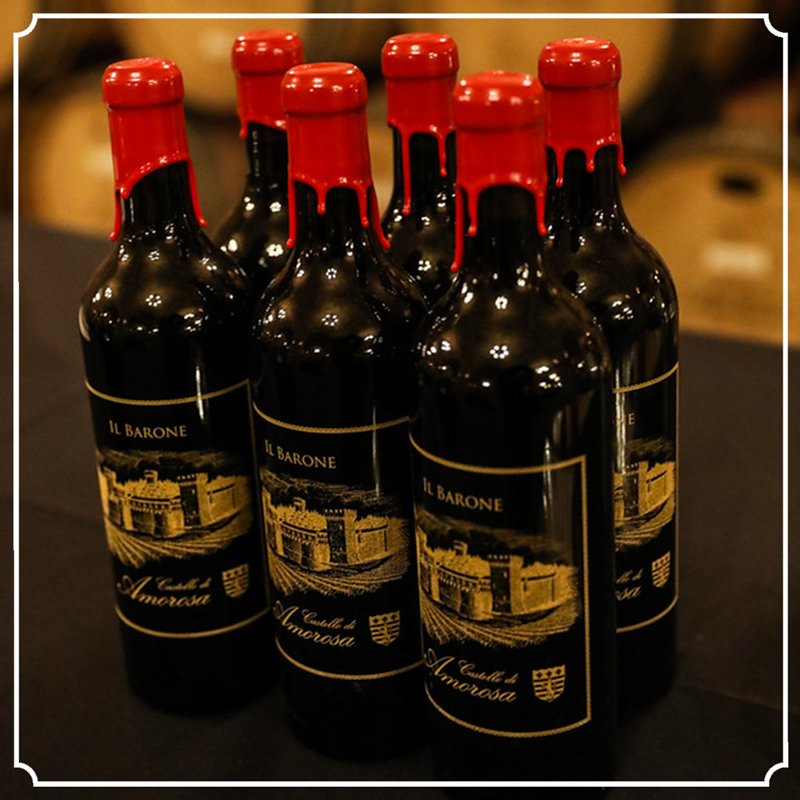
Solar at The Castle

Solar at The Castle
We invested $1.4 million in a 450-kilowatt solar power array. The massive 1162 panel system was completed in January of 2022 and is situated on a spot which had been a forested slope but was significantly burned in the Glass Fire that hit the Napa Valley in 2020.
“This enormous investment is an important element of our commitment to become as self-sufficient as possible while minimizing our carbon footprint and helping with the climate change crisis. We expect this will offset our energy usage around 80%,” explains Georg Salzner, President, Castello di Amorosa.
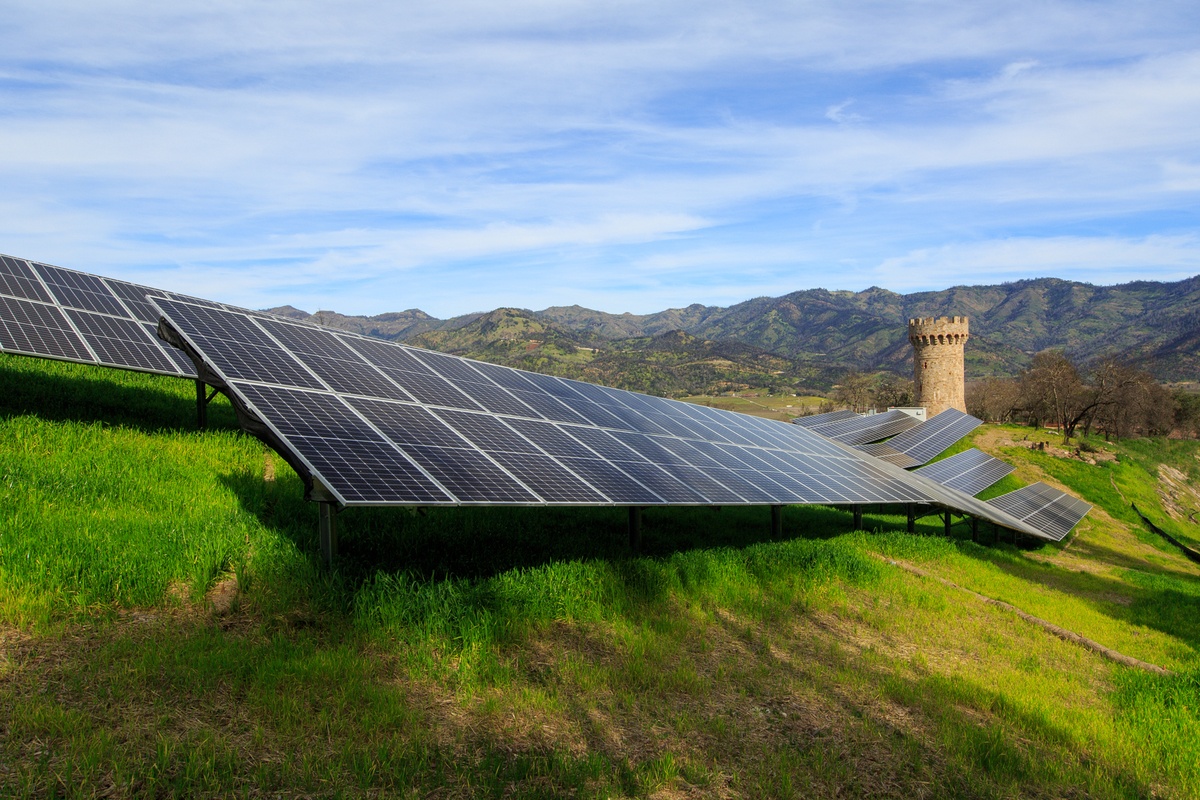
Castello di Amorosa partnered with Centrica, Recolte Energy, 127 Energy and DEIF on the multiple components of this installation. 127 Energy designed the 556-kilowatt battery storage microgrid. Using advanced and remotely accessed power controls, the solar microgrid provides Castello di Amorosa with an independent power supply during frequent utility grid outages. During times of normal operations, the solar microgrid reduces utility energy charges and demand charges, resulting in significant operational savings for the winery.
“Due to fire risks and skyrocketing power prices, commercial business owners in California are taking matters into their own hands. Castello di Amorosa, Centrica Business Solutions, and Sungrow were great partners on this project and our collaboration exemplifies how innovative teams can solve daunting environmental and energy-related challenges,” said Mark Crowdis, CEO of 127 Energy. “The battery storage microgrid provides a striking juxtaposition of resilient, clean energy technology against the backdrop of historic castle grounds,” Crowdis added.
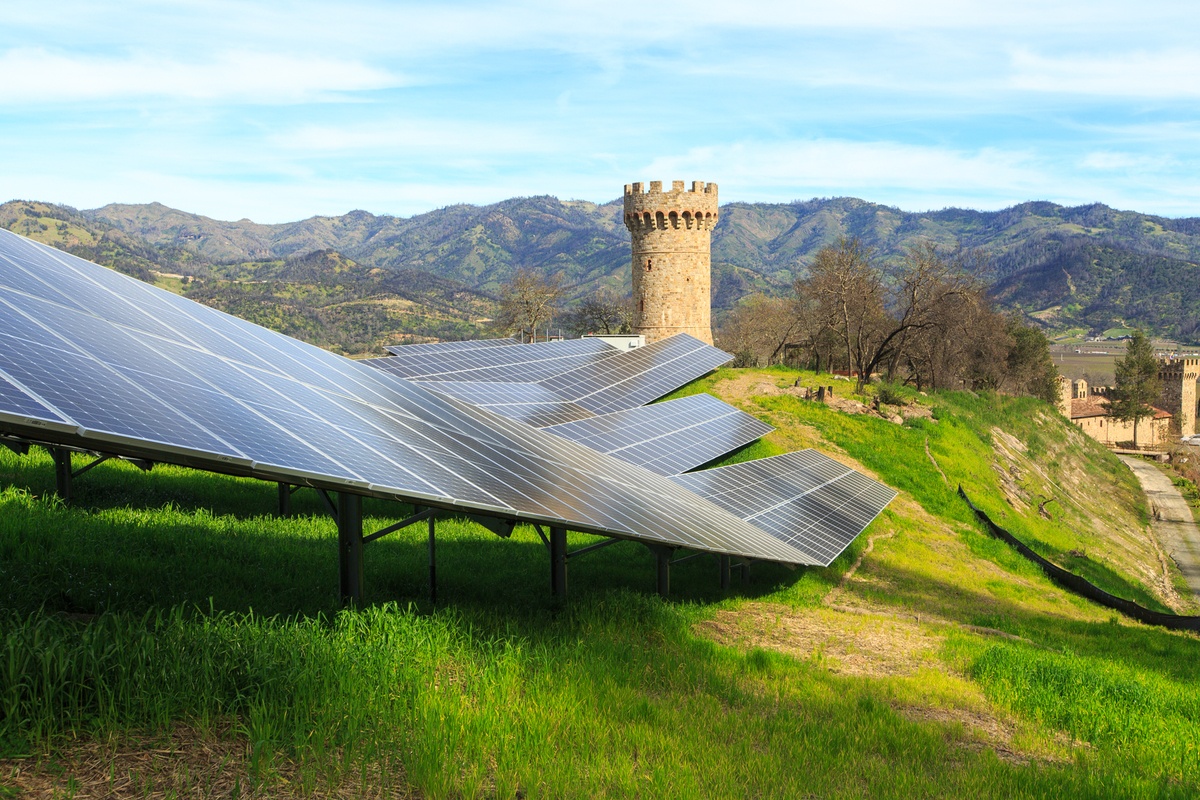
Other examples of Castello di Amorosa’s environmentally friendly programs and practices:
· Napa Green Certified: the winery has been Napa Green Certified since May 2018 (renewed in June 2021). Being Napa Green Certified’s requirements include LED Lighting, using a minimum of 50% recycled paper in the winery offices; using recycled cardboard and recycled pulp for shipping (instead of Styrofoam), using green certified cleaning agents and hand soap; using recyclable/compostable plates/flatware.
Bio Microbics Micro Fiber filtration system: the winery treats all of its processed water (water used during production of wine) and re-uses it for landscaping. Since 2017, the winery has treated and re-used over 5,000,000 gallons of water.
· The winery has begun composting as of January, 2022.
· Napa Ride Share program: the winery pays employees to carpool, thus eliminating more cars on the road.
Castello di Amorosa owns and farms 130 acres in Napa, Sonoma and Anderson Valley.
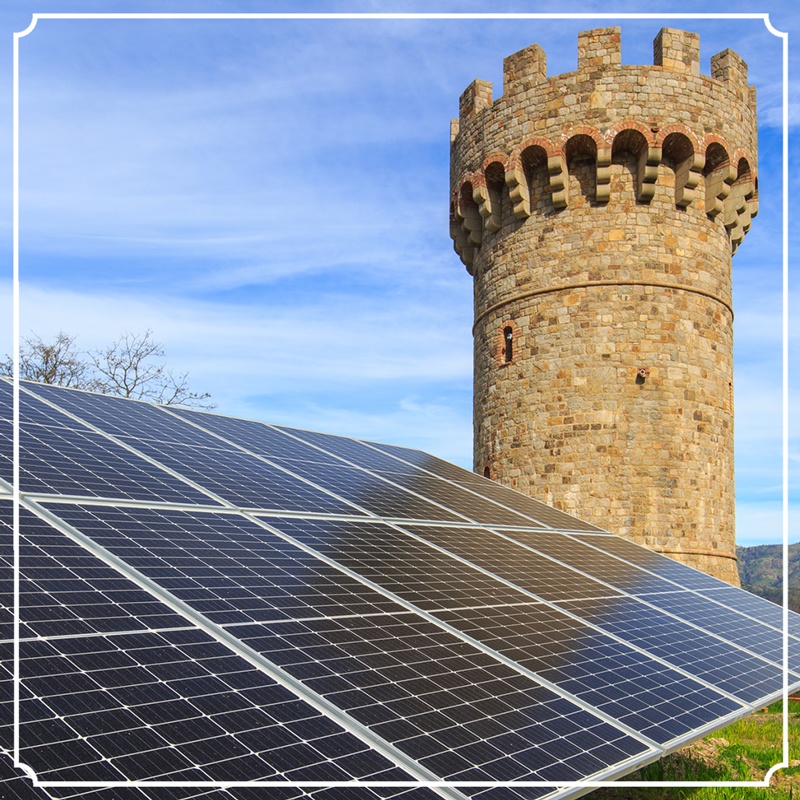
Florentine-Style Steak


Recipe Date: February 1st, 2021
Difficulty: Easy-Moderate
Measurements: Imperial (US)
Bistecca Alla Fiorentina (Florentine-Style Beef Steak)
From Flapper Press
In the 16th Century, the Piazza San Lorenzo served as an international crossroads in Florance, Italy. When the English knights visited the Piazza, they would express their appreciation of the Florentine Streak shouting “beef steak,” influencing the Florentines naming the meat “bistecca.” This Florentine beef steak, typically the T-Bone of a cow, is grilled over charcoal for a caramelized outside with a rare and juicy inside.*
Ingredients
- 1 Porterhouse steak, cut 2-3 inches thick, 3-3.5 pounds
- Extra Virgin Olive Oil
- Coarse salt and ground black pepper, to taste
- 2-4 sprigs of rosemary (optional, for serving)
- Lemon wedges (optional, for serving)
Directions
Prepare your grill, with coals or wood embers. Using an electric grill or cast-iron griddle would work as well.
Heat the surface of the grill. Place the Porterhouse steak standing on the bone to warm the interior and soften the fat fiber. Continue for about 15 minutes.
Now heat the grill to a very high temperature. Place the steak on its’ side for 5 minutes without moving the meat. The meat should roast without burning and come away with beautiful grill markings.
Final Touches
When the meat is done to your liking, remove it from the grill and let it rest for about 15 minutes in a warm place for the juices to settle.
Carve the filet and strip the steaks off the bone. Slice each steak against the grain and place on a serving platter with lemons, rosemary, and salt.
Notes
Serves: 3-4 People | Cook Time: 25 min
Enjoy and cheers!
Wine Pairing – Il Barone or Cabernet Sauvignon
Brooks Painter, Director of Winemaking


Brooks Painter, Director of Winemaking
Brooks Painter has been a winemaker for over 30 years. His impressive resume includes positions as operations manager at Robert Mondavi Winery in Oakville and winemaker at Stag’s Leap Wine Cellars, Leeward Winery, and Felton-Empire Vineyards.
Brooks has been director of winemaking at Castello di Amorosa since 2005, producing a variety of highly acclaimed 90+ point wines that have gained recognition from Robert Parker, Wine Spectator, and Wine Enthusiast. In 2014, he received the distinguished Winemaker of the Year award in the American Fine Wine Competition.
He discovered his passion for wine while pursuing a bachelor’s degree in chemistry and biology from the University of California at Santa Cruz. His work has been published in The American Journal of Viticulture and Enology, Biochemistry, Practical Winery, and Wines & Vines. Brooks is a professional member of the American Society of Enology and Viticulture and a former chair of the Microbiology Committee for the California Enological Research Association.
For the past 15 years, Brooks and his wife Beth have lived in Napa. They’re actively involved in the Napa Valley community, charitable organizations, and long-range public planning for local city and county government.
Interviews
♦ Wine Life Radio Welcomes Brooks Painter, September 7, 2013 (Podcast)
♦ Life Between the Vines interviews Brooks Painter, May 27, 2013 (Podcast)
♦ What’s Cookin’ Today on CRN Radio, Mike & Paul talks with Brooks Painter, August 18, 2014 (Podcast)
♦ VinVillage Radio interviews Brooks Painter, November 17, 2014 (Podcast)
♦ Winner, Winner April Dinner: Fine Wine Gala Announces Number Ones, February 17, 2015
♦ Wednesdays with Winemakers, Brooks Painter, February 10, 2016
♦ Sommtalks, Castello di Amorosa Director of Winemaking Brooks Painter Joins Us, April 17, 2017
Peter Velleno, Winemaker

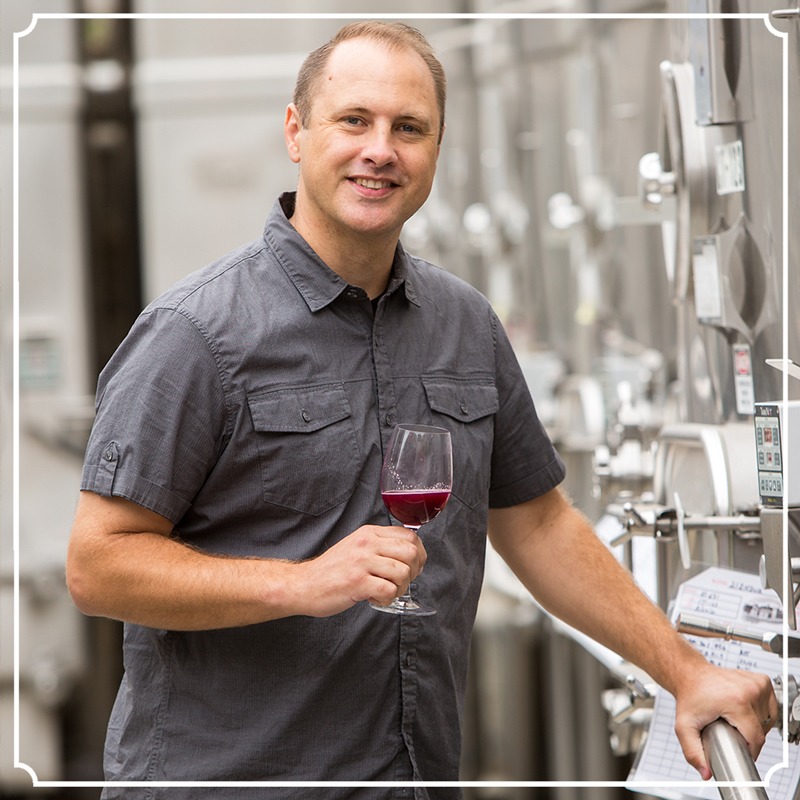
Peter Velleno, Winemaker
Peter Velleno studied winemaking, brewing science, microbiology, and food engineering at the University of California at Davis. In 2003, he was the only student to graduate with a bachelor’s degree in fermentation science.
After graduation, he went to work in the laboratory at William Hill Winery, where he quickly worked his way up to assistant winemaker specializing in Chardonnay production. Peter went on to work for the ultra-premium small winery Hartwell Vineyards, where he helped craft some of the most highly regarded Cabernets in the Napa Valley.
Peter’s career path took a sharp turn in 2008 when he joined Castello di Amorosa as the associate winemaker. He was promoted to winemaker in 2014 and manages production of the Castello’s wines. If asked, he will tell you that making wine in a Castle is even more fun than it sounds.
Peter and his wife Lauren have lived in Napa since 2003. They have two children and enjoy playing tennis, biking, cooking, and spending time outdoors with their dogs Cooper and Ruby.
Interviews
♦ Winemaking from A Castle in California, March 26, 2021 (Interview)
♦ We Like Drinking, March 24, 2021 (What Two Wines Would Winemaker Peter Velleno Recommend)
Margarito Rivera, Cellar Master

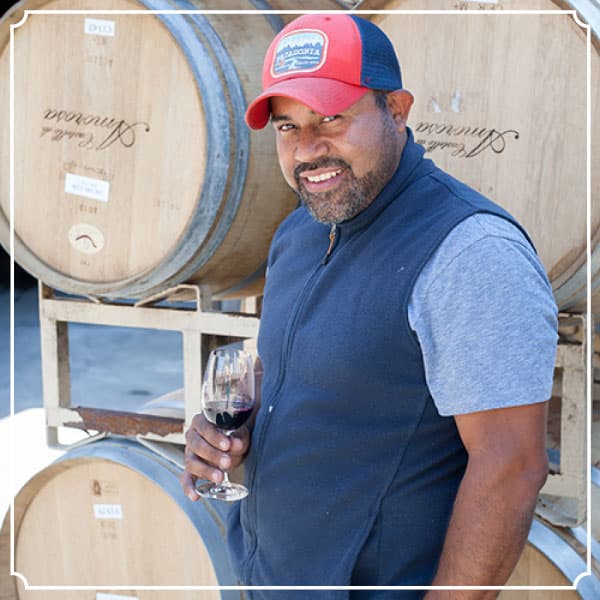
Margarito Rivera, Cellar Master
Margarito Rivera joined the Castello di Amorosa team in 2017, having worked with Director of Winemaking Brooks Painter nearly two decades ago at another Napa Valley winery. His dedication and excellent work ethic have made him a valuable addition to our winemaking team.
Madeleine Reid, Vice President of Events and Hospitality

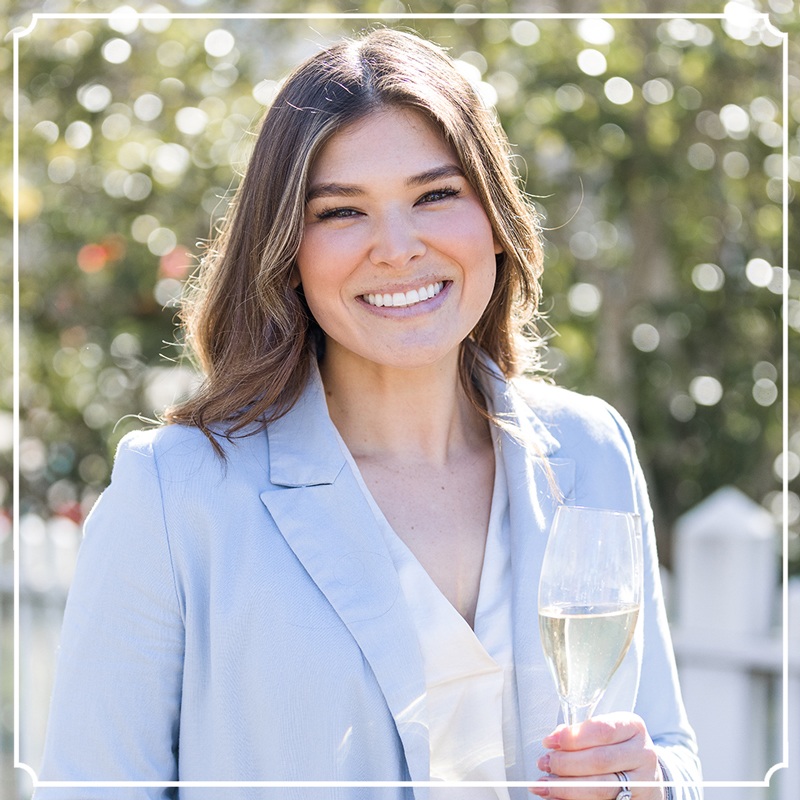
Madeleine Reid, Vice President of Events & Hospitality
Madeleine was born into the event and hospitality industry, a product of two restaurateurs. She began her career working for a luxury catering company which taught her the intricacies of planning events and also afforded her the opportunity to travel and participate in international food and wine shows. After years of honing her craft on catering side of the event industry, Madeleine ventured into the wine business. Her enthusiasm for luxury events and wine brought her to Treasury Wine Estates where she spent five years designing custom event experiences for clients across 7 wineries through Napa and Sonoma, seeing the events from beginning to fruition. In her current role at the castle Madeleine focuses on supporting the hospitality team, all-encompassing experiential design, incredible wine & food pairings and pushing the limits of creativity to deliver incredible events that wow our guests.
Madeleine is fiercely passionate about events and is dedicated to the betterment of the Event Industry as a whole. Currently, she serves as the Past President of the Napa Sonoma Chapter of the International Live Events Association (ILEA) and Director of Communications of Wine Country Special Event Professionals (WCSEP). In these roles, she is committed to leading the board to produce effective and informative educational programs and opportunities for members of the industry to connect and network.
In her free time, Madeleine enjoys cooking, spending time with her dog & family, going to the beach, exploring art galleries, traveling, painting, and crafting.
David Bejar, Vineyard Manager

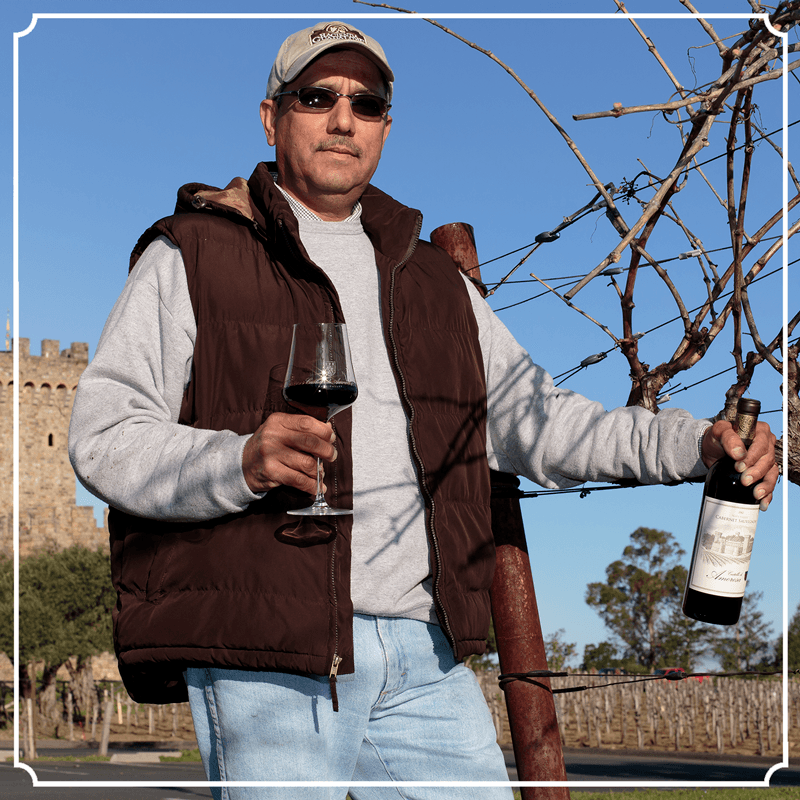
David Bejar, Vineyard Manager
David Béjar brings over 40 years of experience to Castello di Amorosa. Born in Michoacán, Uruapan, David was just 8 years old when he began picking at one of Ensenada’s oldest wineries. David’s father died when David was 11 years old, so he took up boxing at $8.00 a fight to supplement the family income. At the age of 16, after immigrating to the United States, he began work as a tractor driver in Santa Rosa and continued to work his way up in the wine industry.
Recruited by Dario Sattui in 1996, Béjar now manages over 300 acres of vineyards. He is responsible for the sustainable and organic vineyard practice and provides the projections for the size of the harvest each season.
Every year, the North Bay Business Journal acknowledges leading individuals and businesses from across the wine, beer, and spirits industries in the region. We are thrilled that David Béjar was awarded Vineyard Manager of the year in 2018.
